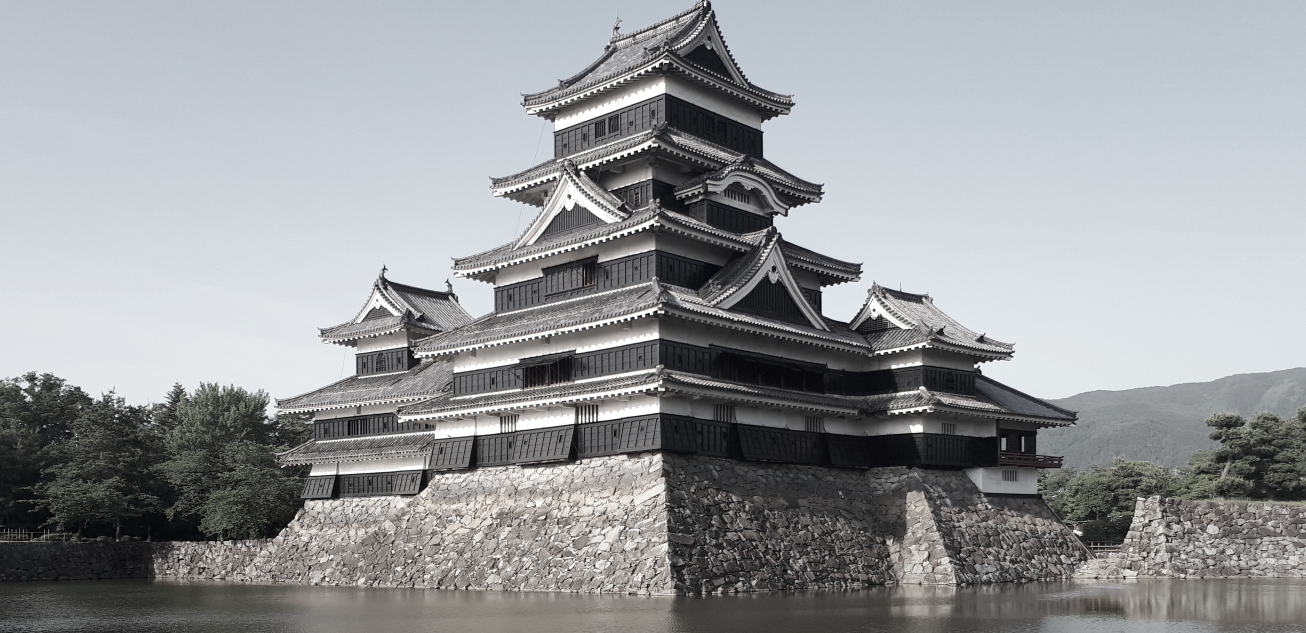Japan 2018
Back in May I went on a three-week trip to Japan. I had been there before once as a teenager but wasn't really old enough to properly appreciate the natural beauty and culture; so I was excited to go back as an adult earlier this year.
First WeekTokyoTouchdownWe touched down off the plane in Tokyo at mid-afternoon. I didn't sleep at all on the plane (never do) but the excitement had kept me awake anyway and I was determined to carry on until the evening.The first thing you see is a lot Hiragana, Katakana, and Kanji (the three Japanese alphabets). Not that I was surprised to see it (obviously); but it's not like a holiday in a European country where you can sort of at least guess what an unknown word means. Thankfully the airport of course had English accompanying all the signage; but once you get outside the terminal catching the right busses/railcars can turn in to a game of spot-the-difference between platform signs and what's printed on the ticket, haha. The second thing that struck me was the cleanliness. As someone who's used to the London tube system, seeing so much pristine public transport almost sent me in to shock. Furthermore, as we took the skyrail from the airport we could see Tokyo flying past in the large windows; and even clearly-industrial zones were so neat and well-kept. This was a theme that kept recurring too throughout the visit (one of cleanliness and order); but there's nothing quite like that first initial impression. Personally I think it's a standard that all countries could learn from. But I digress. 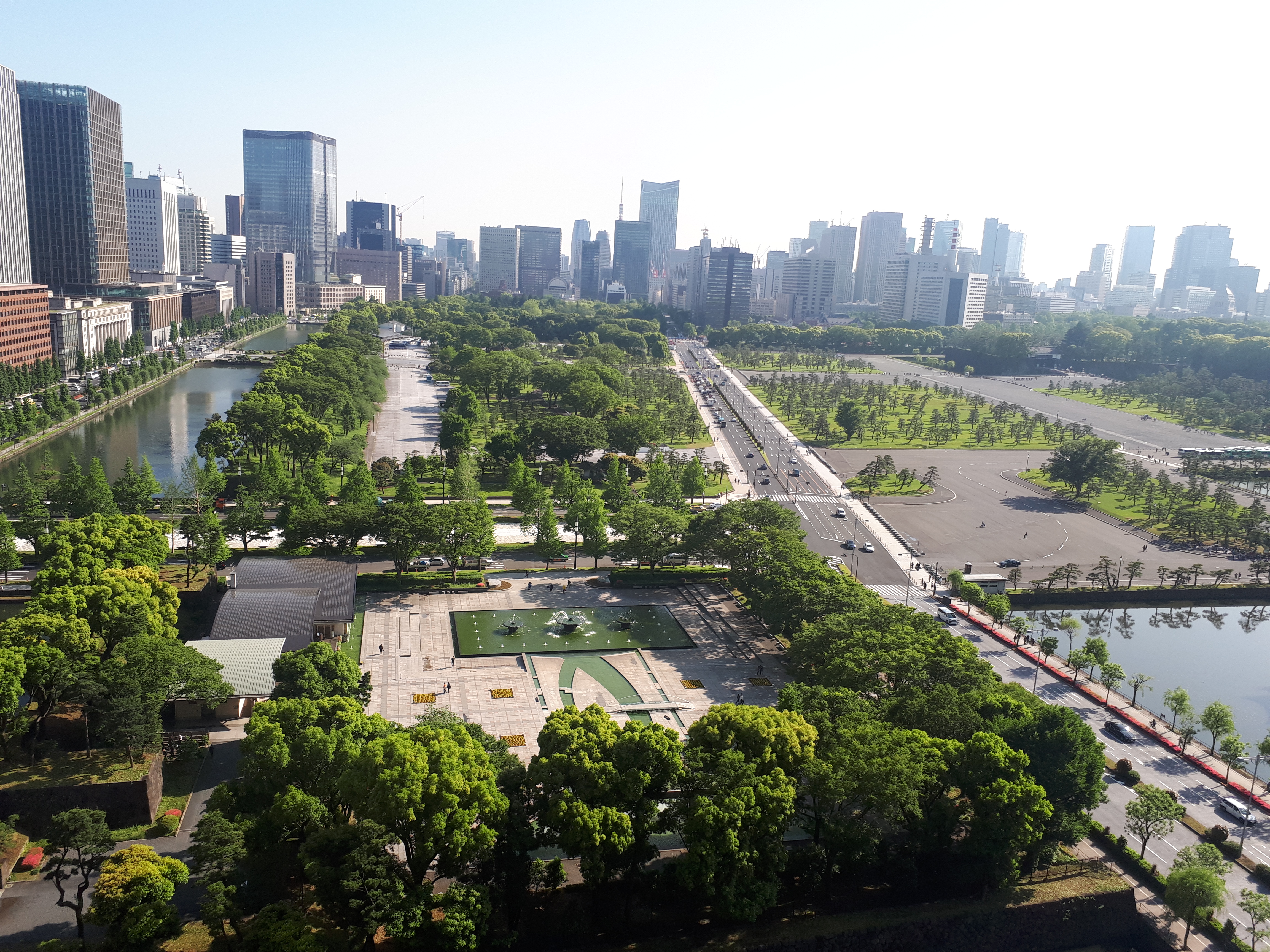 The first pic I took from the hotel
The first pic I took from the hotel
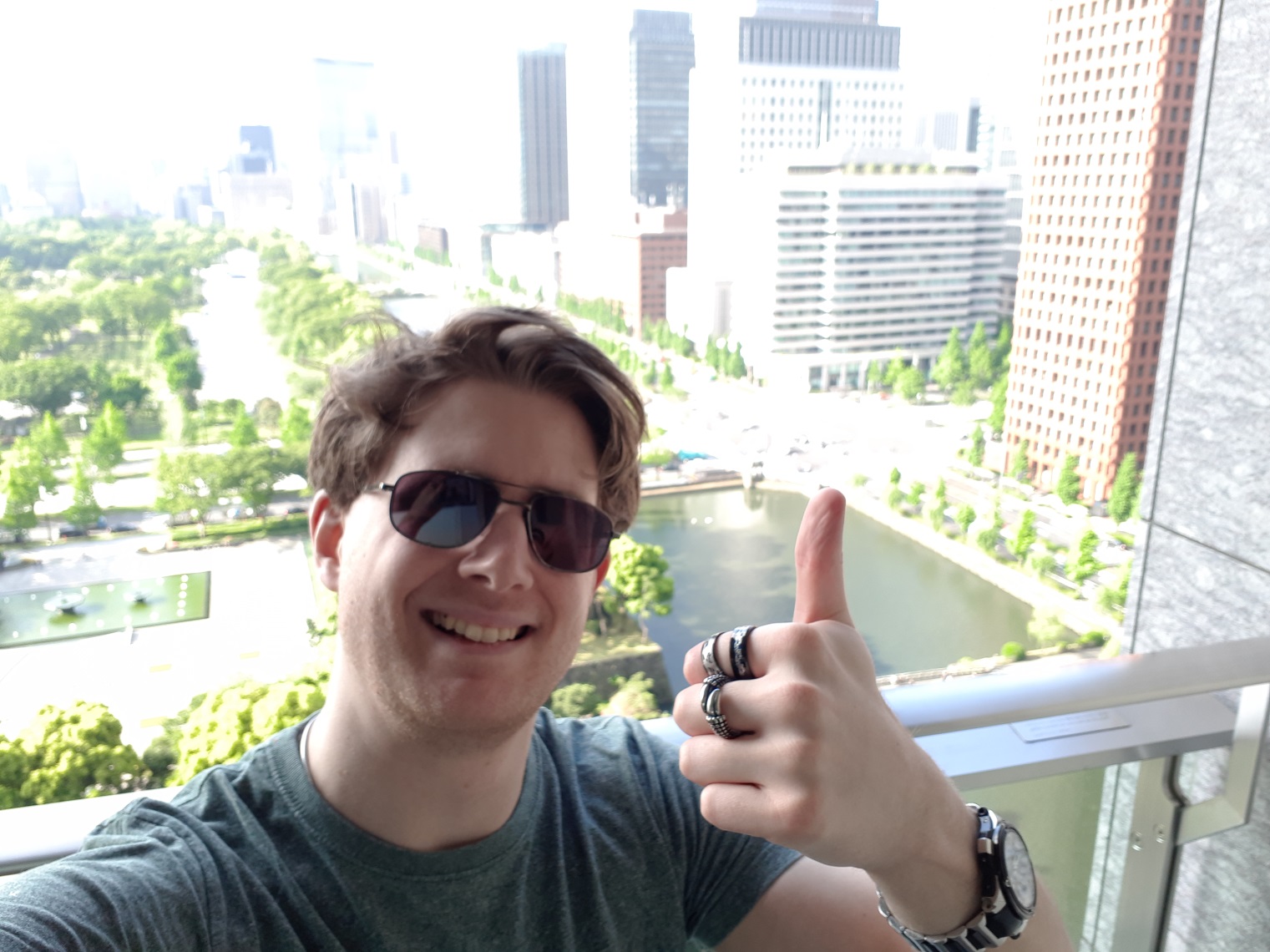 The only selfie in this post, I promise
The only selfie in this post, I promise
We'd all endeavoured to adjust to the timezone straight away to that meant finding something to do for the rest of the afternoon. That meant one of the most famous temples/districts in Tokyo, Asakusa:  You can just see the entrance to the temple area at the end of the street
You can just see the entrance to the temple area at the end of the street
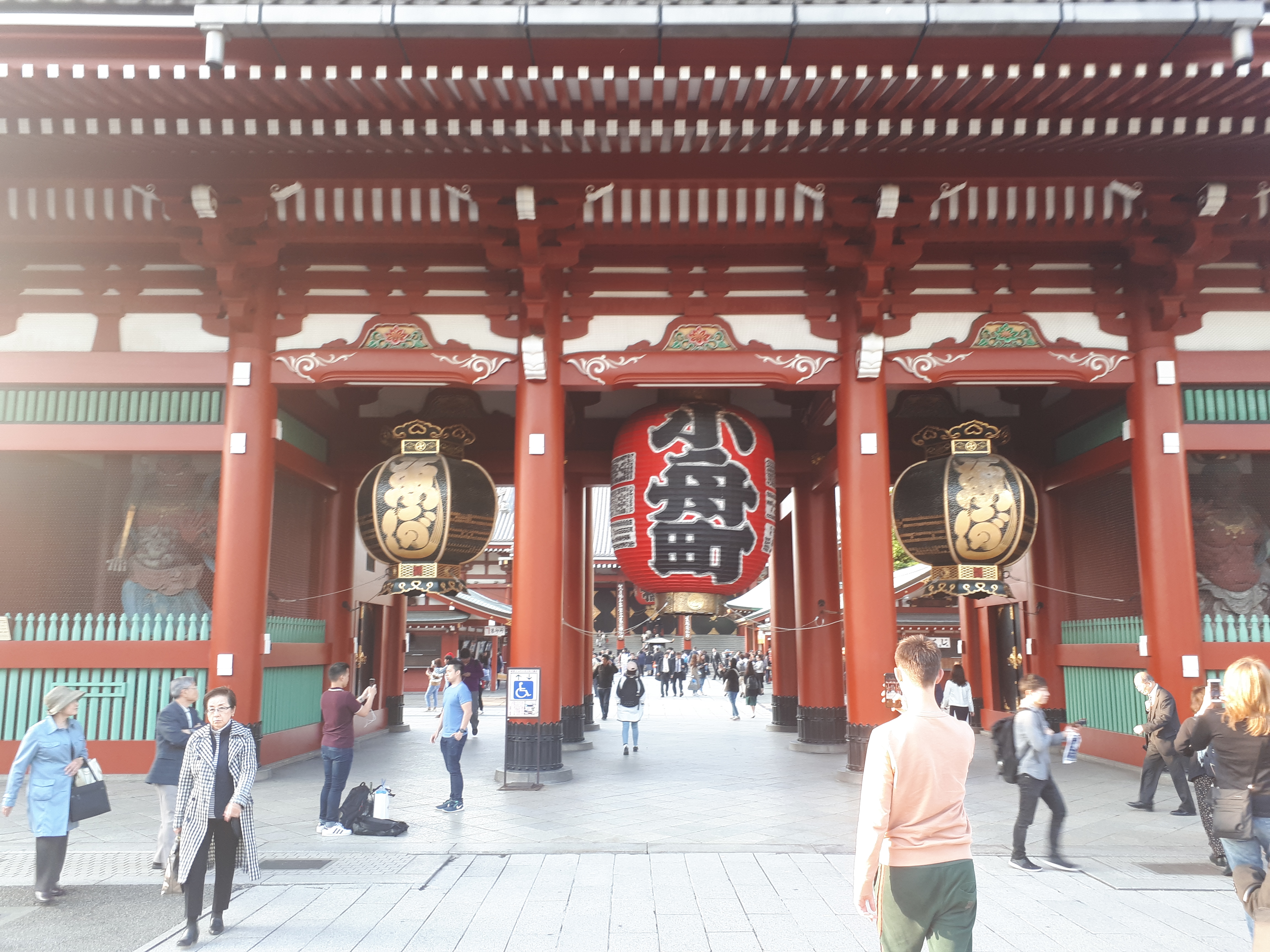 The entrance to the temple. The smell of incense (as with many temples) was strong, but pleasant
The entrance to the temple. The smell of incense (as with many temples) was strong, but pleasant
Something I just loved about Japan throughout is just how different it is to the West in every way: The culture, the architecture, the daily life, etc. etc. In my sleep-deprived state, walking around Asakusa was like entering a different world; something that I'd only seen in movies and video games. I also have a penchant for dragons (one that would be more than fulfilled). They're just fuckin' cool! They're like dogs mixed with lizards; and they breathe fire! (Though I'm not sure if the fire-breathing is part of Japanese lore.)  The first of many dragons
The first of many dragons
 I see you, ceiling dragon
I see you, ceiling dragon
Walking back from the temple I decided to go around the very-touristy main streets and caught my first glimpse of "real" urban-Japan. There's something just so asian about how the houses, restaurants, and shops are all placed so tightly together; in such a way that you can't tell at first glance whether something is a gyoza bar or someone's front living-room. It's just so different to the West where we tend to segregate cities more strongly in to residential and commercial areas (although of course it's not completely split here; and Japan/Tokyo still has suburbs). Whereas in Japan I think they take the idea that you'd want to be living in amongst the amenities/shops/restaurants and associated hubub. I could be wrong however. 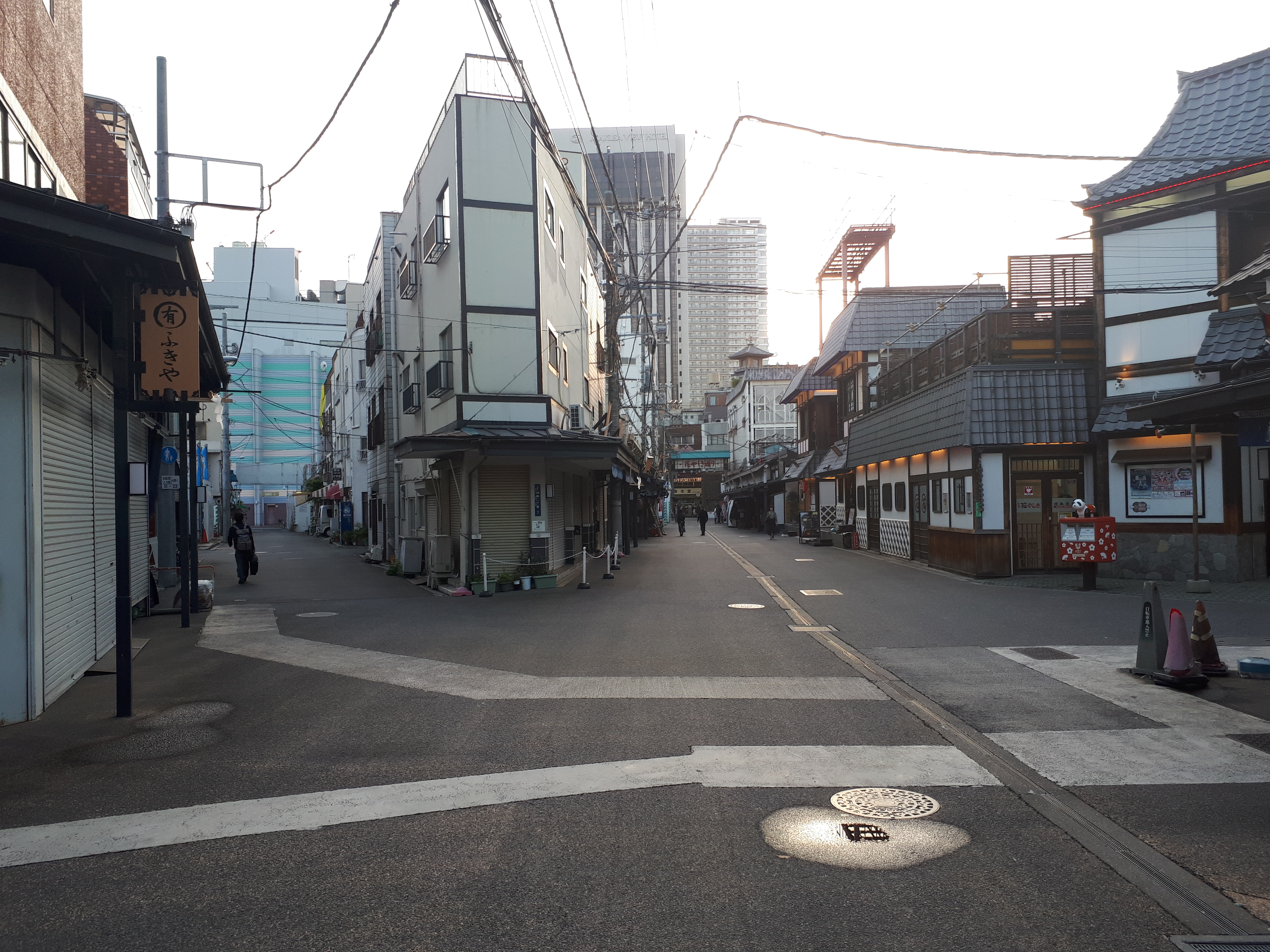 Tokyo life
Tokyo life
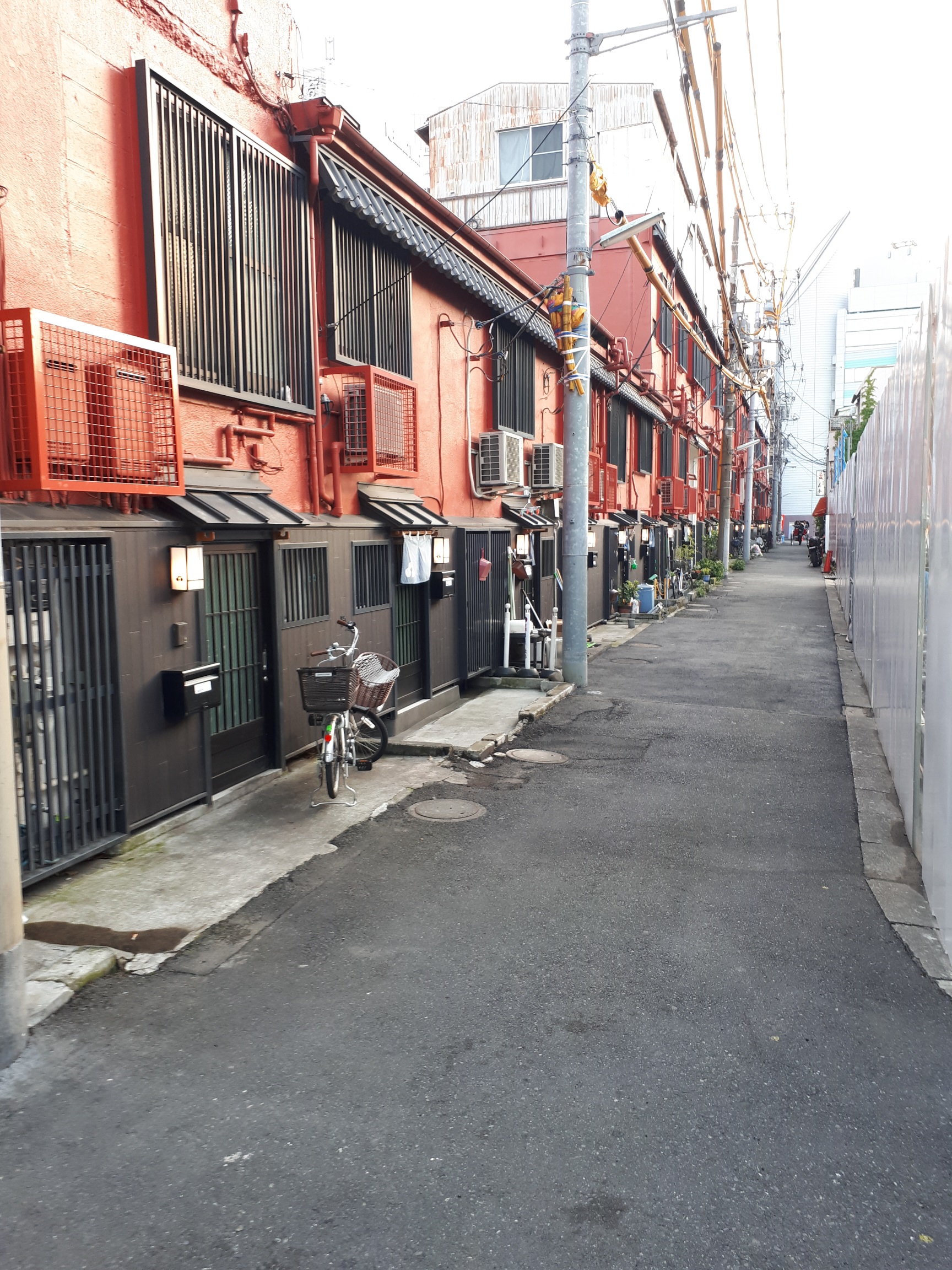 A back alley. Notice the unsecured bike
A back alley. Notice the unsecured bike
FoodAs evening drew closer, we needed to find something to eat.A lot of the touristy establishments will proudly announce that they have an English menu; but frankly there was a negative correlation between those places and having any air of authentiticy. In actuality, it turns out that pretty much any place in central Tokyo will have at least a laminated page with pictures of food and a price you can point at; so it's totally unnecessary to seek out English-speaking establishments as long as you're willing to spin the wheel of chance on what you're getting a little. Which we were! A lot of the places we found were clearly favourite spots for actual locals, including businessmen (and probably a number of salarymen) who were there just trying to unwind. That often meant a 'no pictures' policy (sometimes indicated by the only English sign in the building), but I did manage to get a picture of the Teppanyaki bar we found: 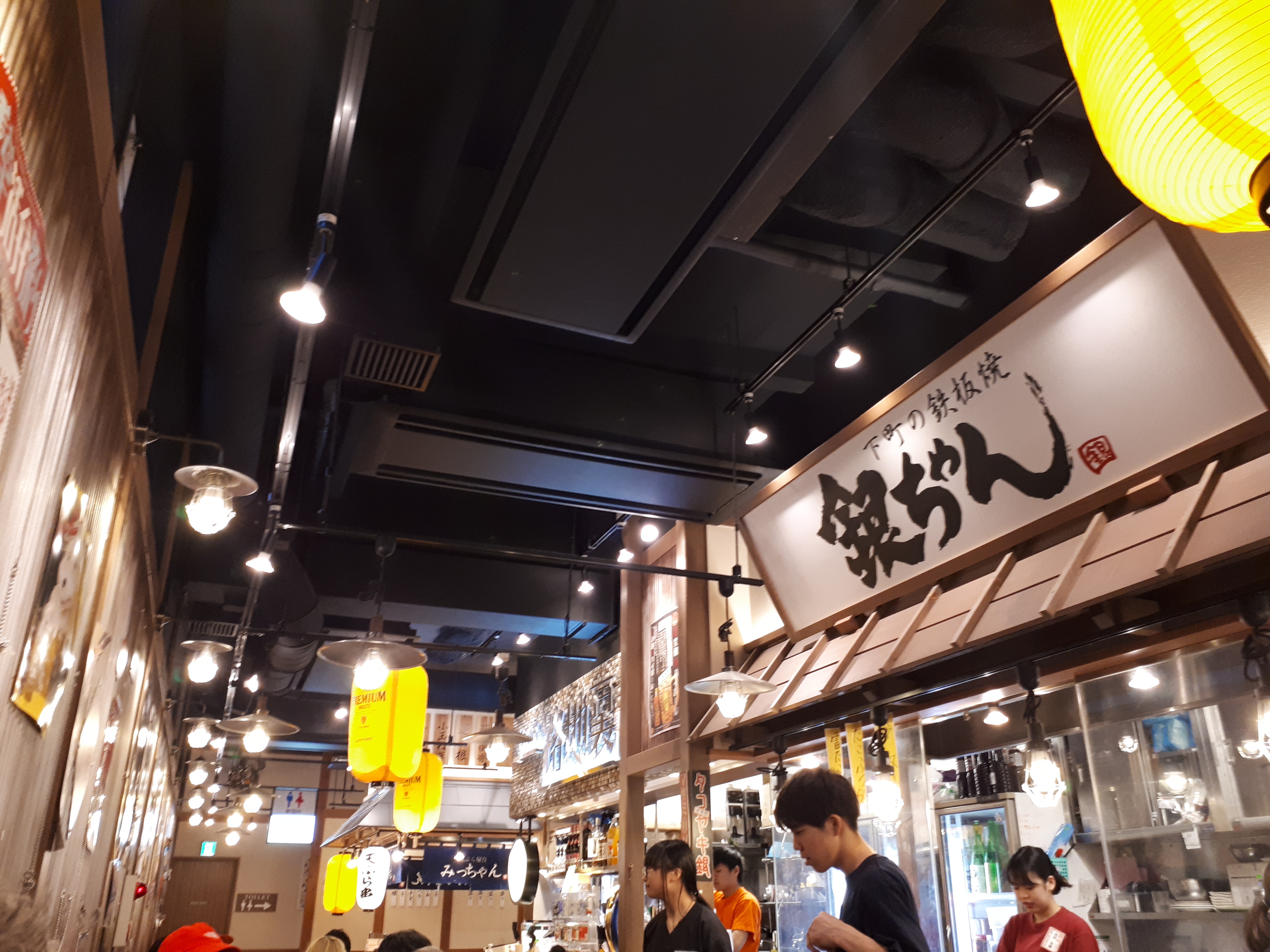 We just found this place on a side street slightly off the beaten path. Really good food
We just found this place on a side street slightly off the beaten path. Really good food
 Side streets like these are great for authentic food. Apologies for the blur, I'd had a few Asahis by now ;)
Side streets like these are great for authentic food. Apologies for the blur, I'd had a few Asahis by now ;)
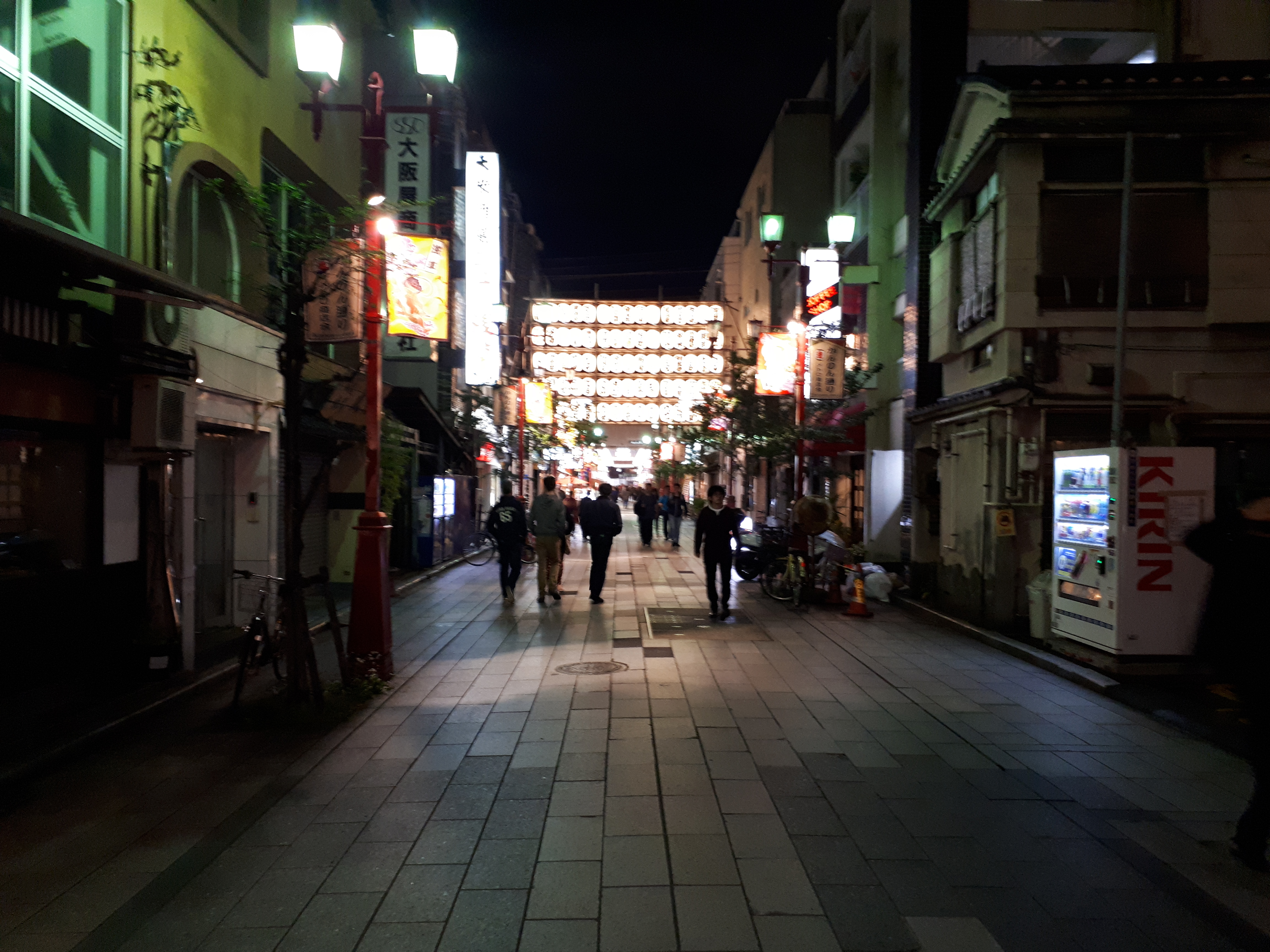 Another side street
Another side street
On another evening we went to Shinjuku. In Shinuku there are loads of 'alley food' places slotted in wherever they can fit. Each can usually only seat about 6 to 8 people and the food is cooked right in front of you. They're not really places to get a full meal, more like a bar/street-vendor hybrid. 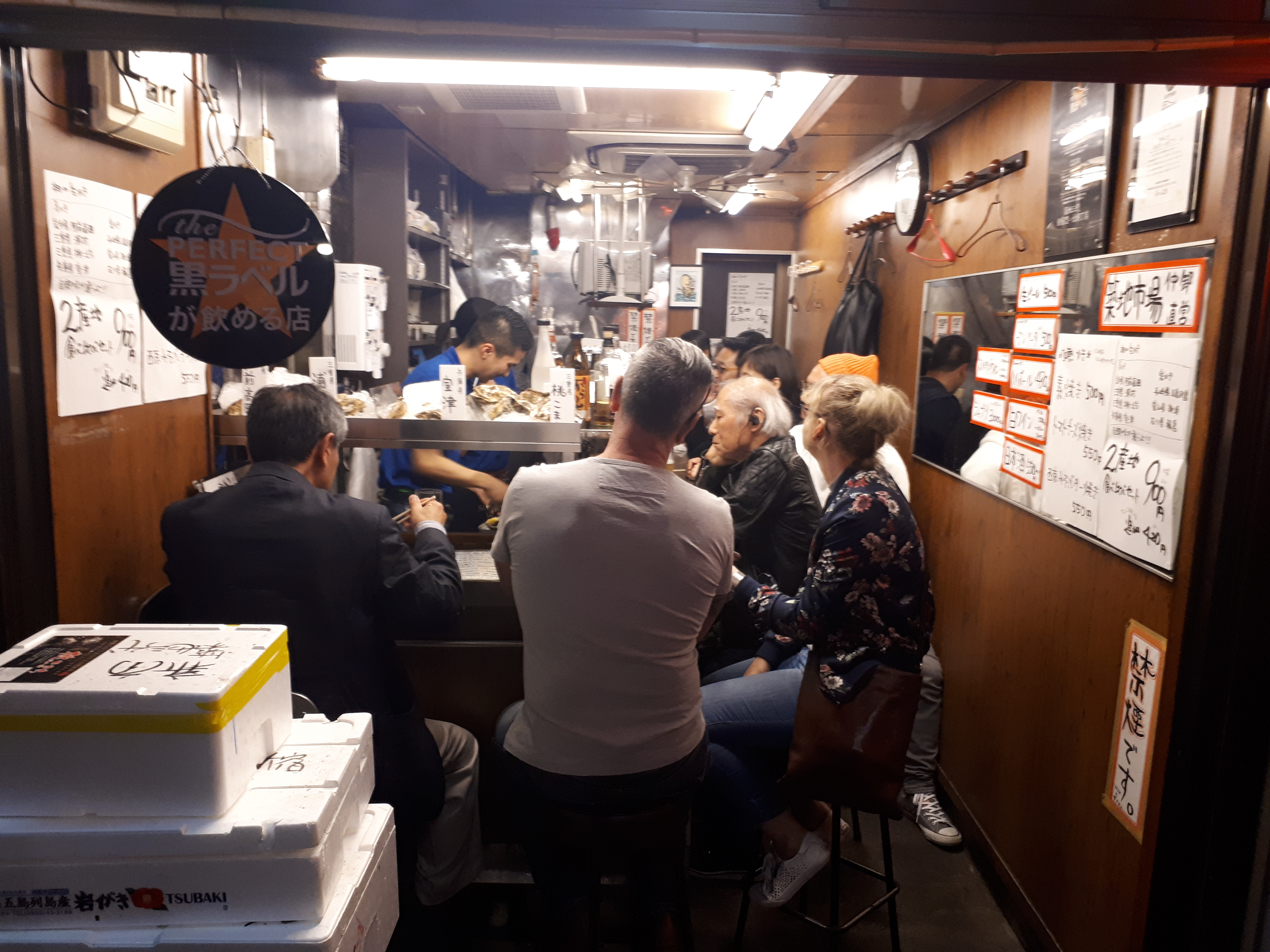 This one was larger than average
This one was larger than average
Video: Shinjuku alley food (8 secs) NightlifeShinjuku is known as a vibrant downtown area that either is or was partly under control of the Yakuza, depending on who you ask. Either way, it definitely had a seedy-underbelly-side (it's the red light district); there were certainly quite a few "Hostess" bars advertised with anime-style mascots in varying degrees of clothing.But it wasn't all like that; and I certainly got some great pictures of the stereotypical, famous Tokyo at night:  Most of these signs were constantly flashing/changing colours
Most of these signs were constantly flashing/changing colours
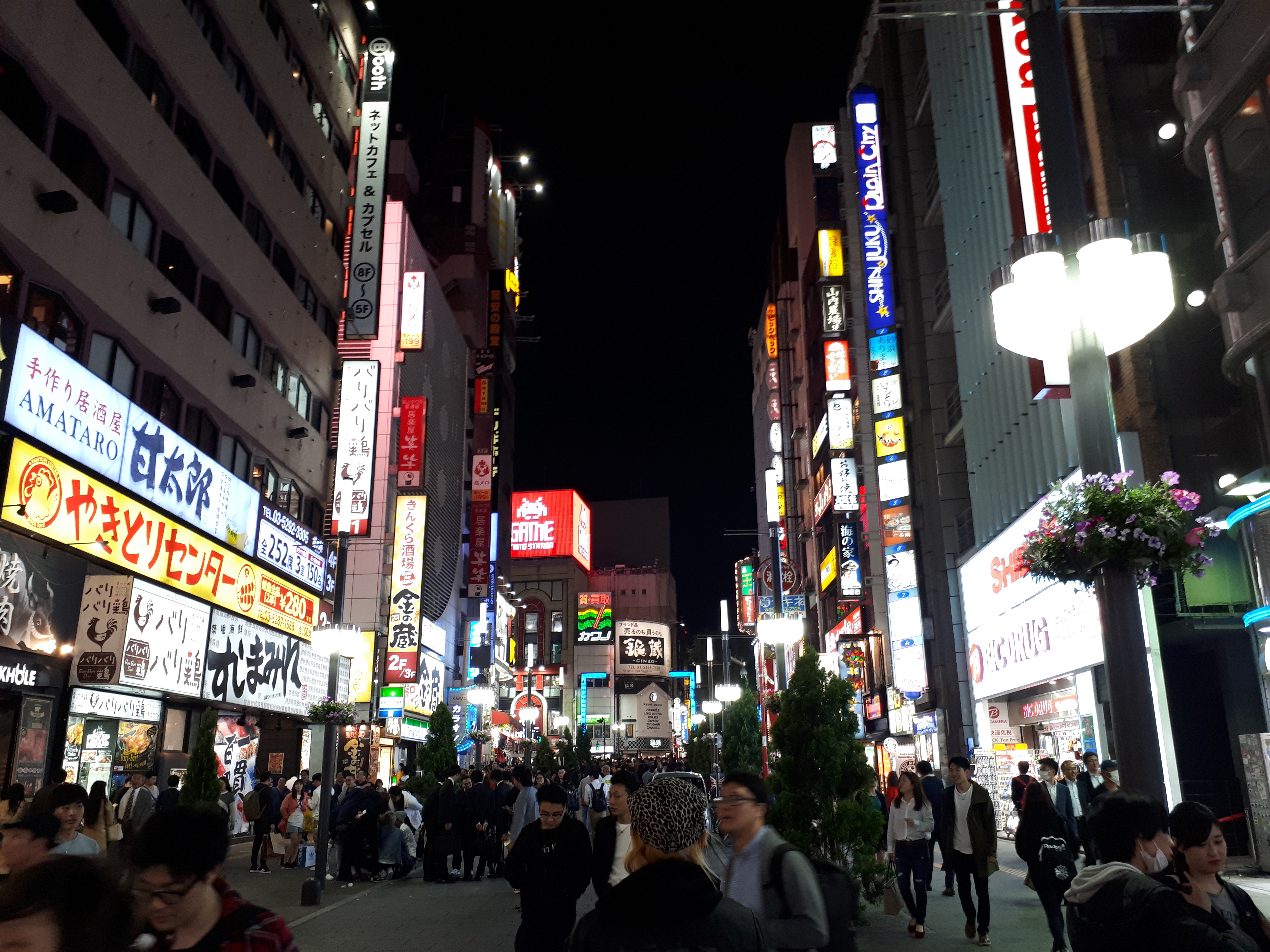 One of the main Shinjuku streets
One of the main Shinjuku streets
 Godzilla is watching you!
Godzilla is watching you!
 It's quite common in Japan for restaurants to have pictures of their food displayed outside; this one on the right seemed particularly content with being decorated entirely in them
It's quite common in Japan for restaurants to have pictures of their food displayed outside; this one on the right seemed particularly content with being decorated entirely in them
Eventually we went to a skybar in a high-rise hotel (very expensive :S), just to see the view: 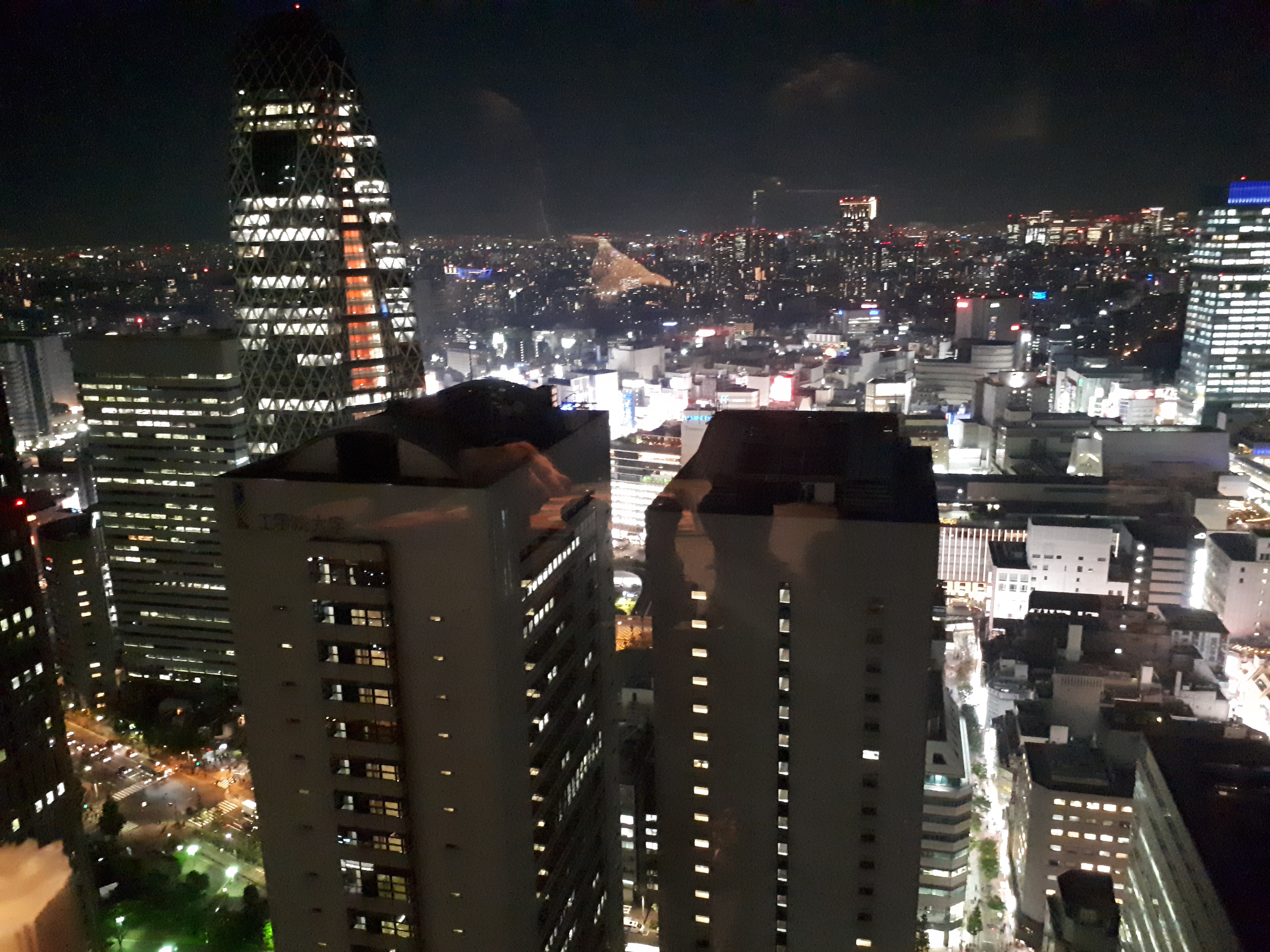 It just goes on for miles...
It just goes on for miles...
Finally, on the way back to the hotel I saw something I don't quite know how to describe: Video: Godzilla lightsaber guitar tambourine chicken drums (10 secs) ShibuyaOn the next day we went to Shibuya, adjaecent to Shinjuku. Shibuya is known as one of the major shopping and fashion districts of Tokyo.Although we were excited to see what Shibuya had to offer, the first thing we actually went and saw was the nuclear bomb mural at Shibuya station. I took a picture of the most poignant part: 
But after some moments of reflection we headed out and in to the sunshine (there would, after all, be more time for contemplation in a couple of weeks during our visit to Hiroshima...)! Shibuya, like a lot of Tokyo, is dominated by skyscrapers: 
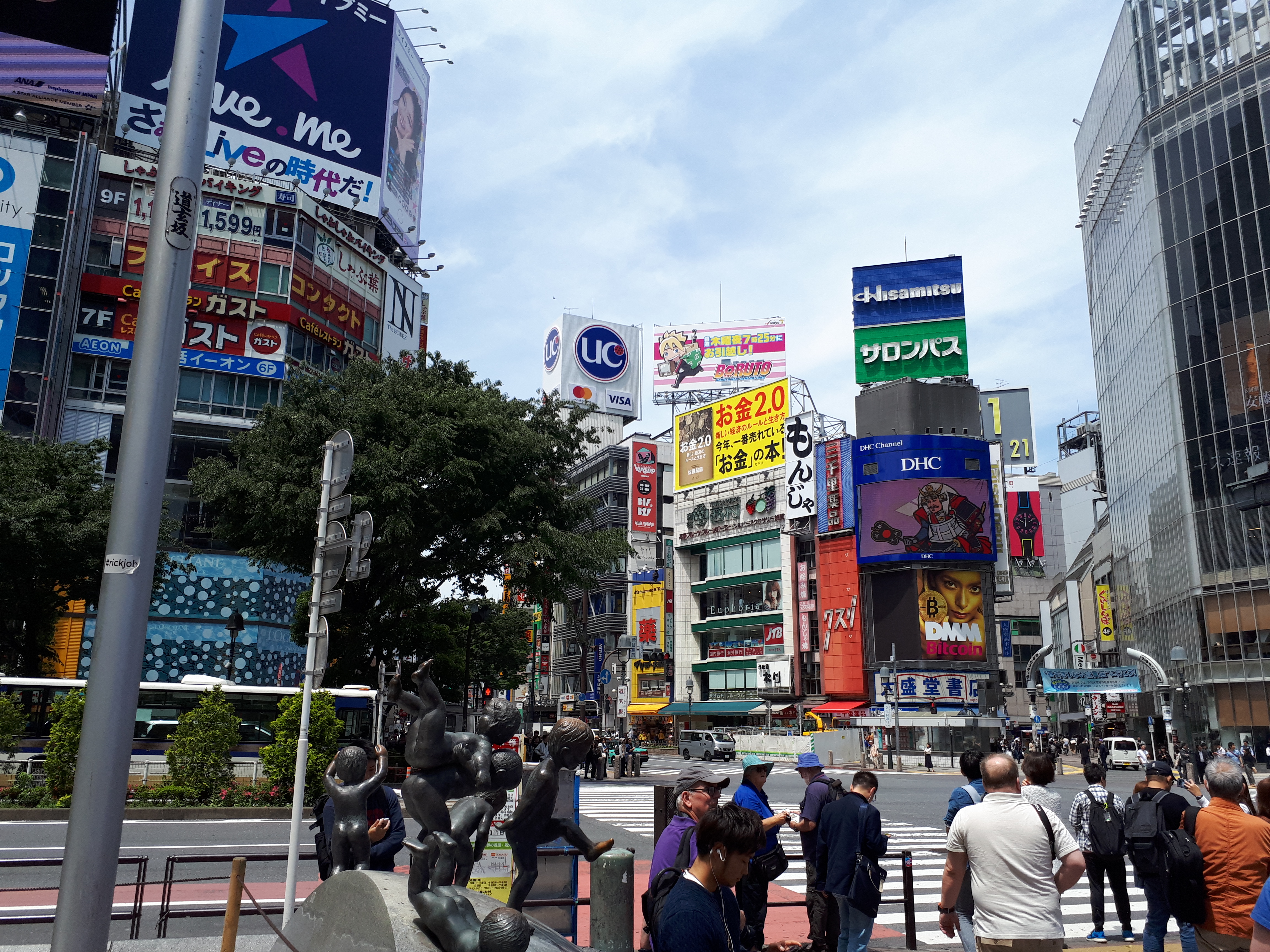
Shibuya had some crazy cool fashion shops; and that was reflected in the architecture/decoration of the stores. Unfortunately, I was spending too much time gawking and browsing to get photos of most of them, but here's a particularly cool building: 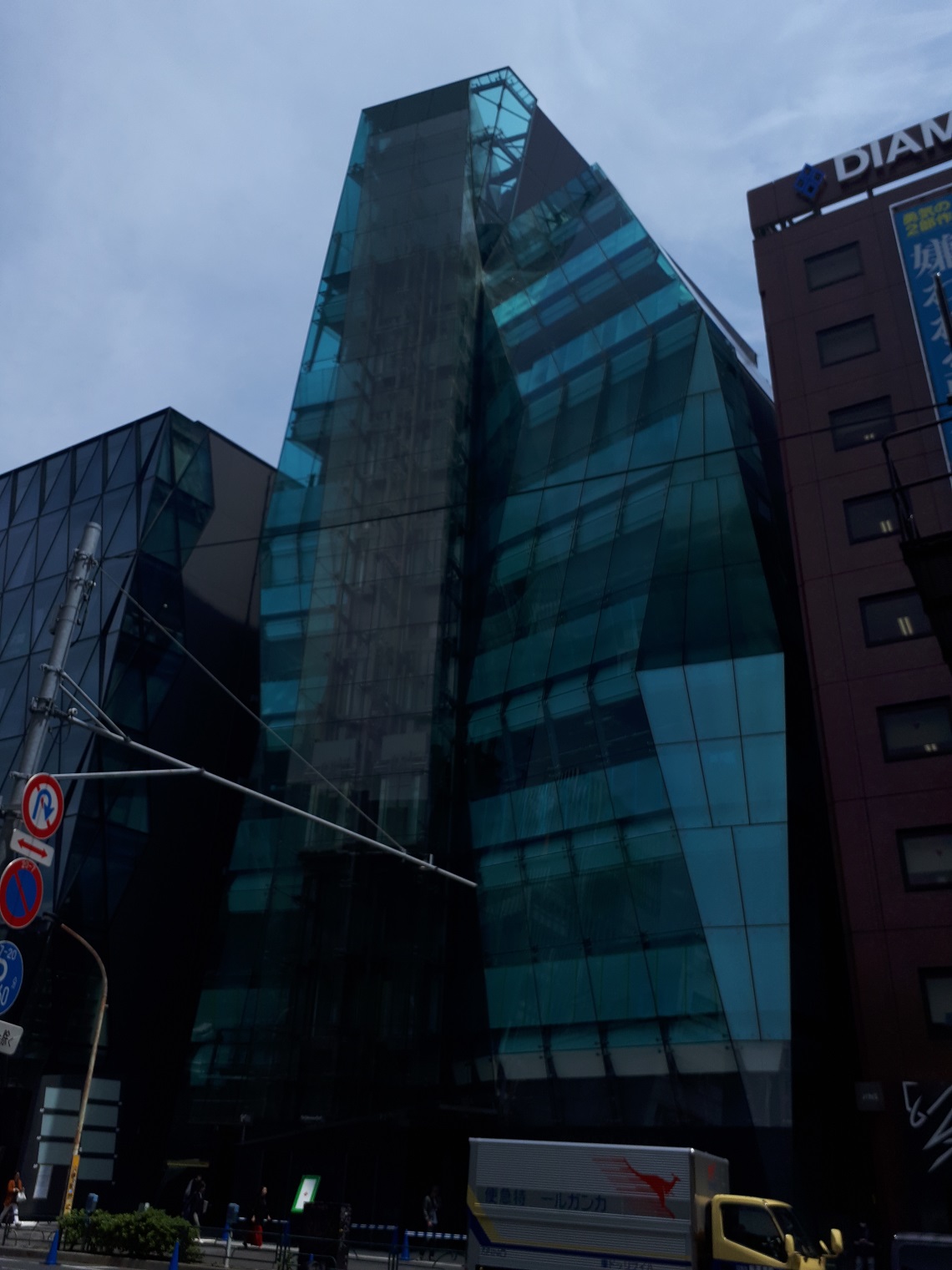 I wonder if the people inside ever feel seasick...
I wonder if the people inside ever feel seasick...
We also took a stop in Tower Records. It's a strange thing in a place as technologically advanced as Japan to have a huge record shop (CDs are already beginning to feel anachronistic these days, unfortunately); but there it was: Seven floors of JPop, rap, rock, indie, game music, and anime/soundtracks. 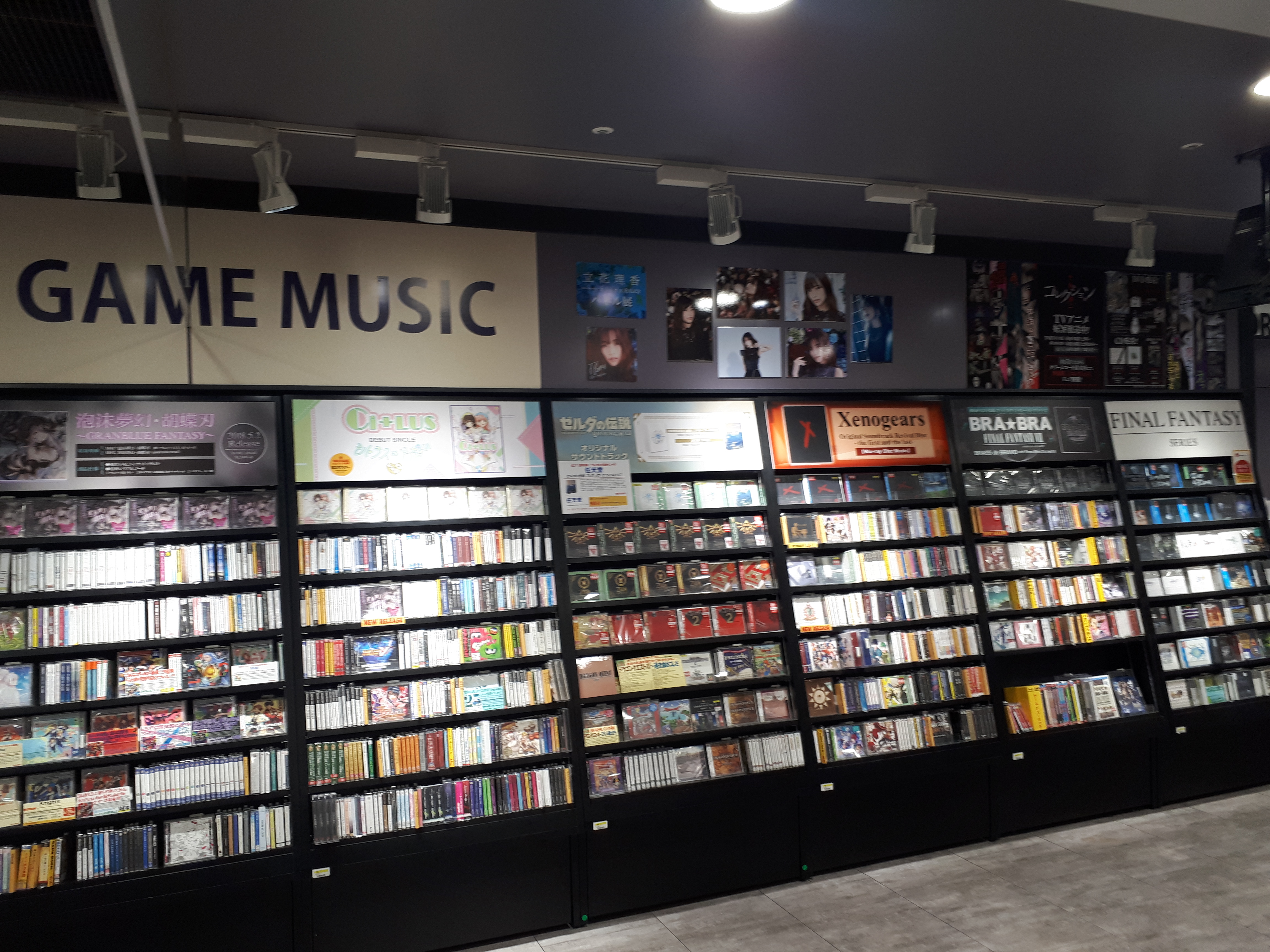 I doubt I'll ever see a music shop have a dedicated 'Game Music' section here in the UK
I doubt I'll ever see a music shop have a dedicated 'Game Music' section here in the UK
Meiji Jingu ShrineVery near Shibuya is the first proper shrine we went to see: Meiji Jingu shrine. The entrance to the shrine/park area has a huge Torii gate that delimits the entrance. Almost all Shinto shrines use torii gates this way; but the gate here is especially large- and even more impressive when you consider that it's been standing for almost 100 years!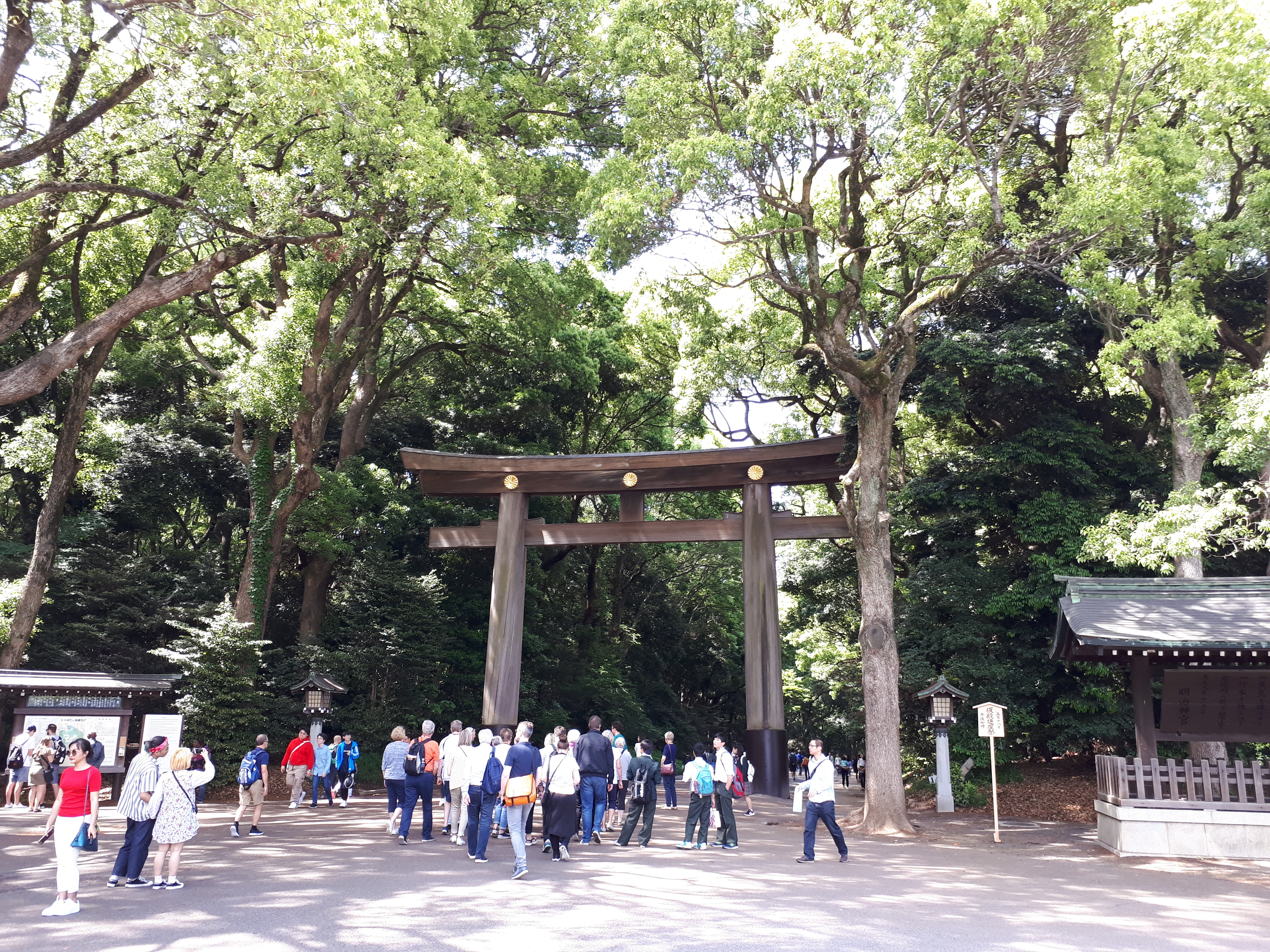
Walking through the gate and around the corner was like stepping in to a different place entirely. Although we were in the middle of Tokyo suddenly we were surrounded by such serenity; it really was like being teleported somewhere 100 miles away. 
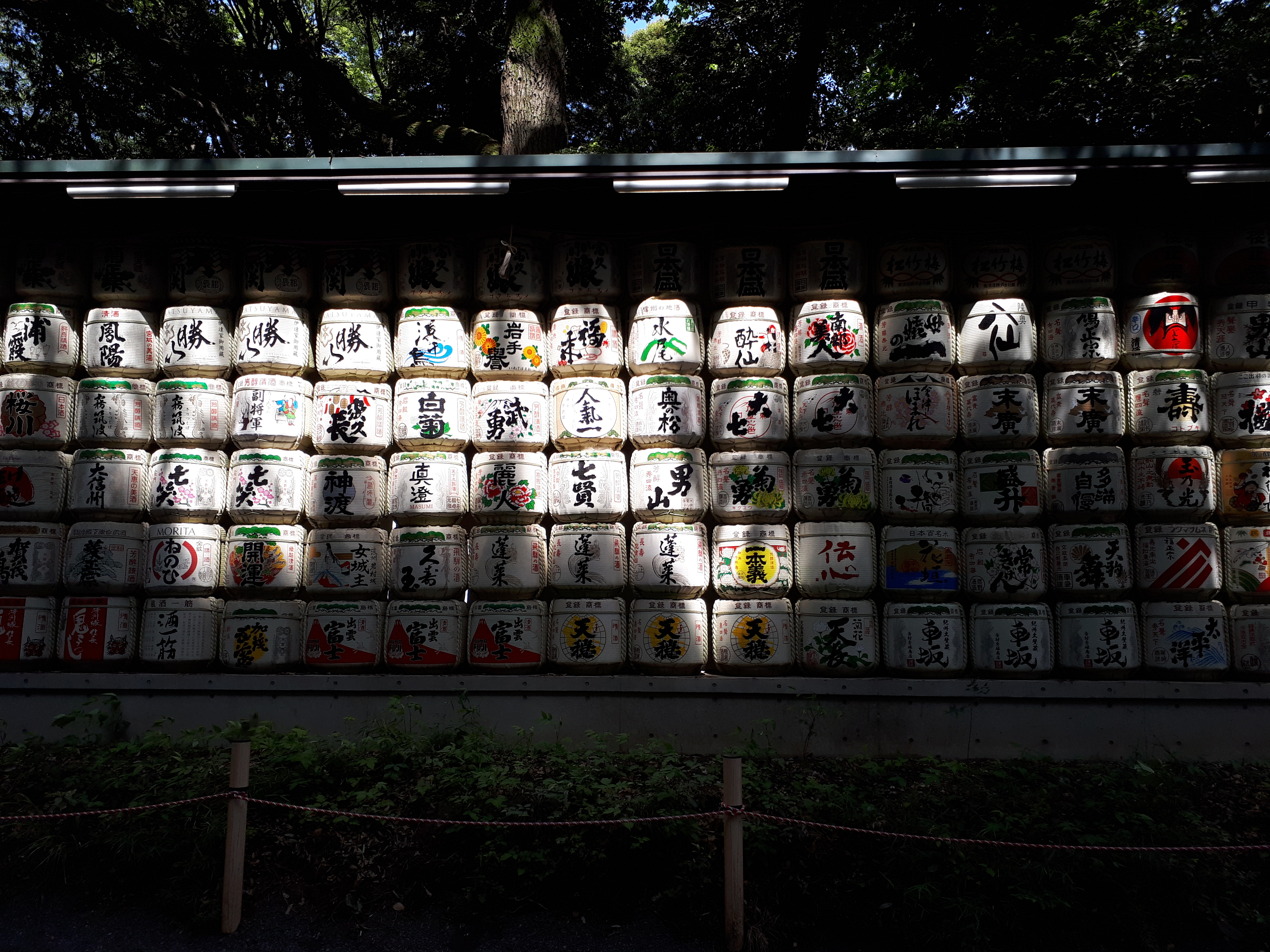 Not actually sake I think! French wine donated as a celebration of the Meiji period's focus on adoption of Western knowledge mixed with Japanese traditionalism.
Not actually sake I think! French wine donated as a celebration of the Meiji period's focus on adoption of Western knowledge mixed with Japanese traditionalism.
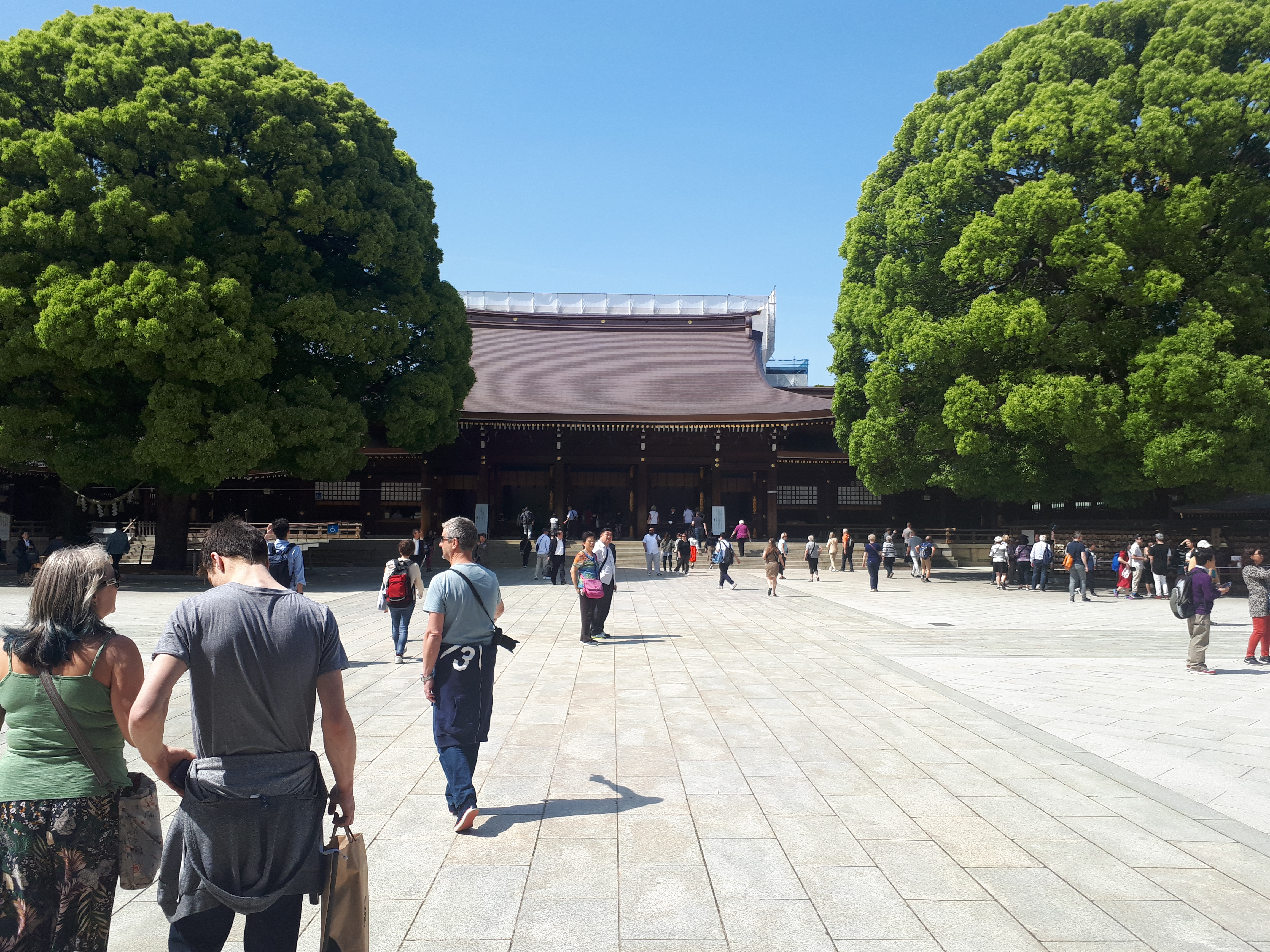 It's kind of amazing how you couldn't see a single skyscraper in certain places
It's kind of amazing how you couldn't see a single skyscraper in certain places
AkihabaraOn our last day in Tokyo my brother and I took the underground to Akihabara; Japan's most popular electronic goods and 'anime/otaku' center. I doubt I could really describe how crazy it is, so here's some pictures:
 I'm not in to anime at all but you can't ignore shops like this!
I'm not in to anime at all but you can't ignore shops like this!
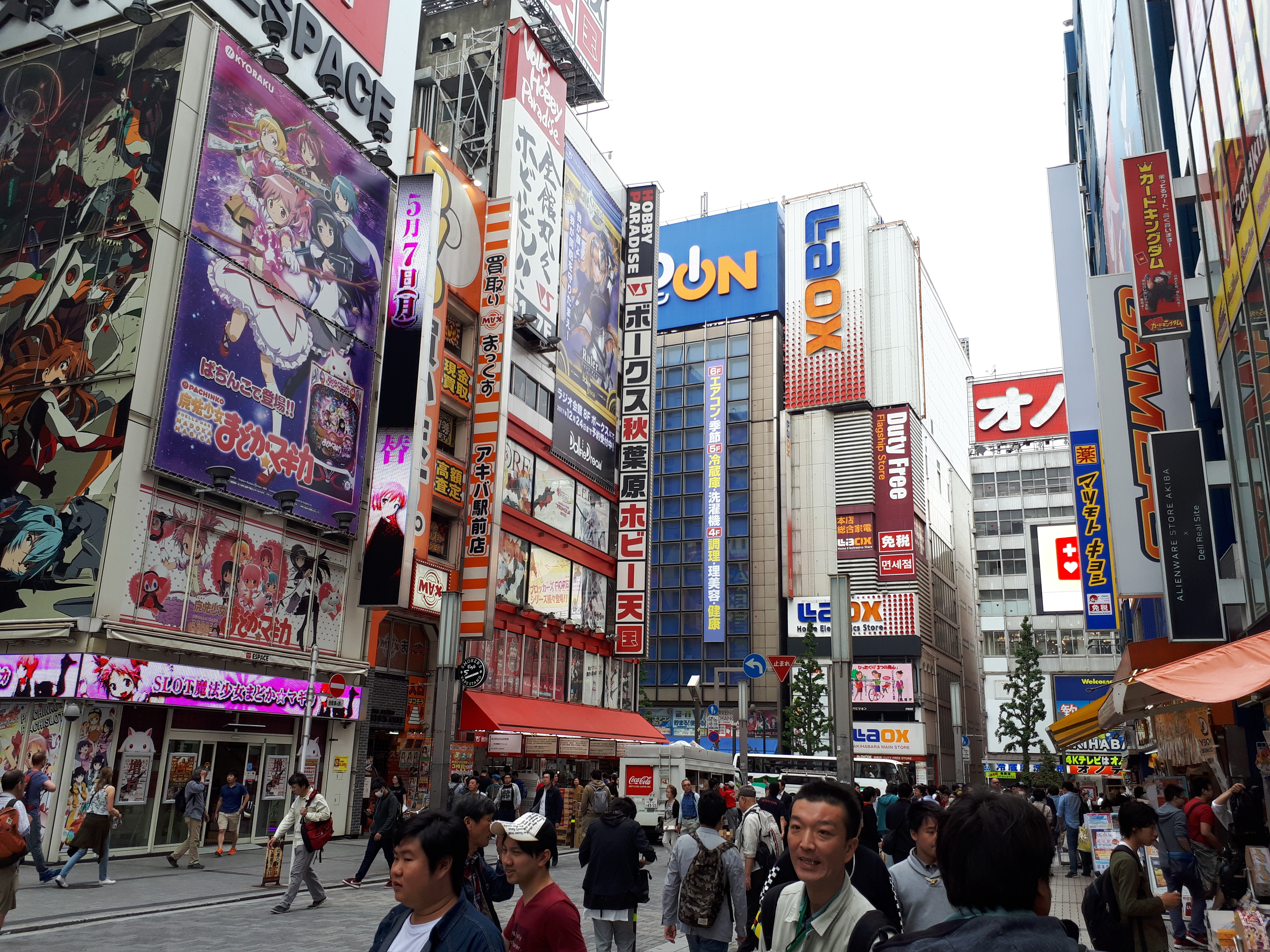
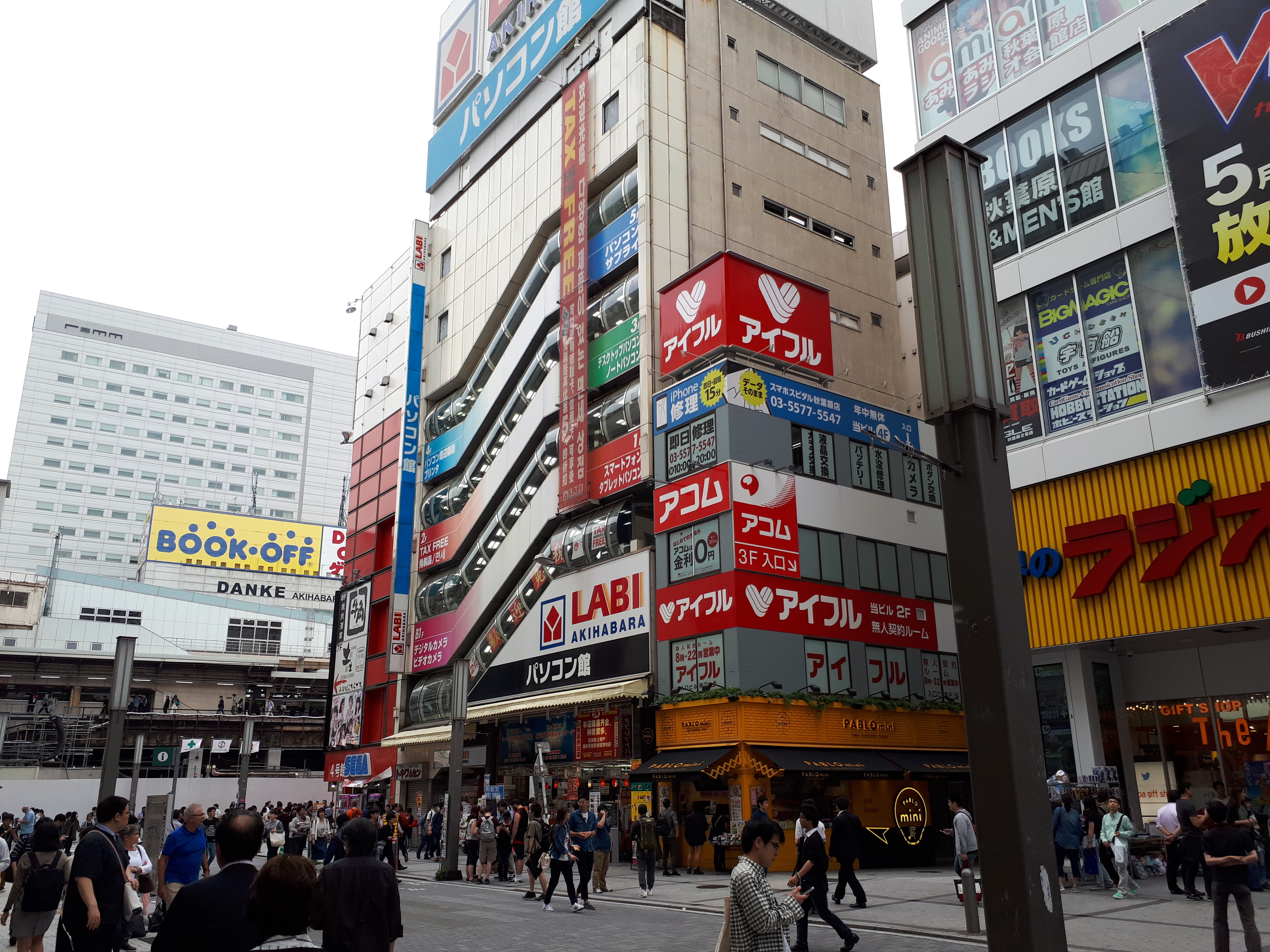
 I know it sounds like a cliché but Japan really does have an obsession with giant robots...
I know it sounds like a cliché but Japan really does have an obsession with giant robots...
At one point we also walked past a hentai/anime porn shop with all the windows literally pasted up with borderline-nude erotica. And a bit further on as we were waiting at a zebra crossing, a youngish Japanese man crossed in front of us wearing giant metallic cat ears that were blaring out some kind of anime soundtrack; a literal walking stereotype. I am a massive nerd so I did have to drag my brother in to some of the technology stores. Firstly we went to see the dedicated alienware store: 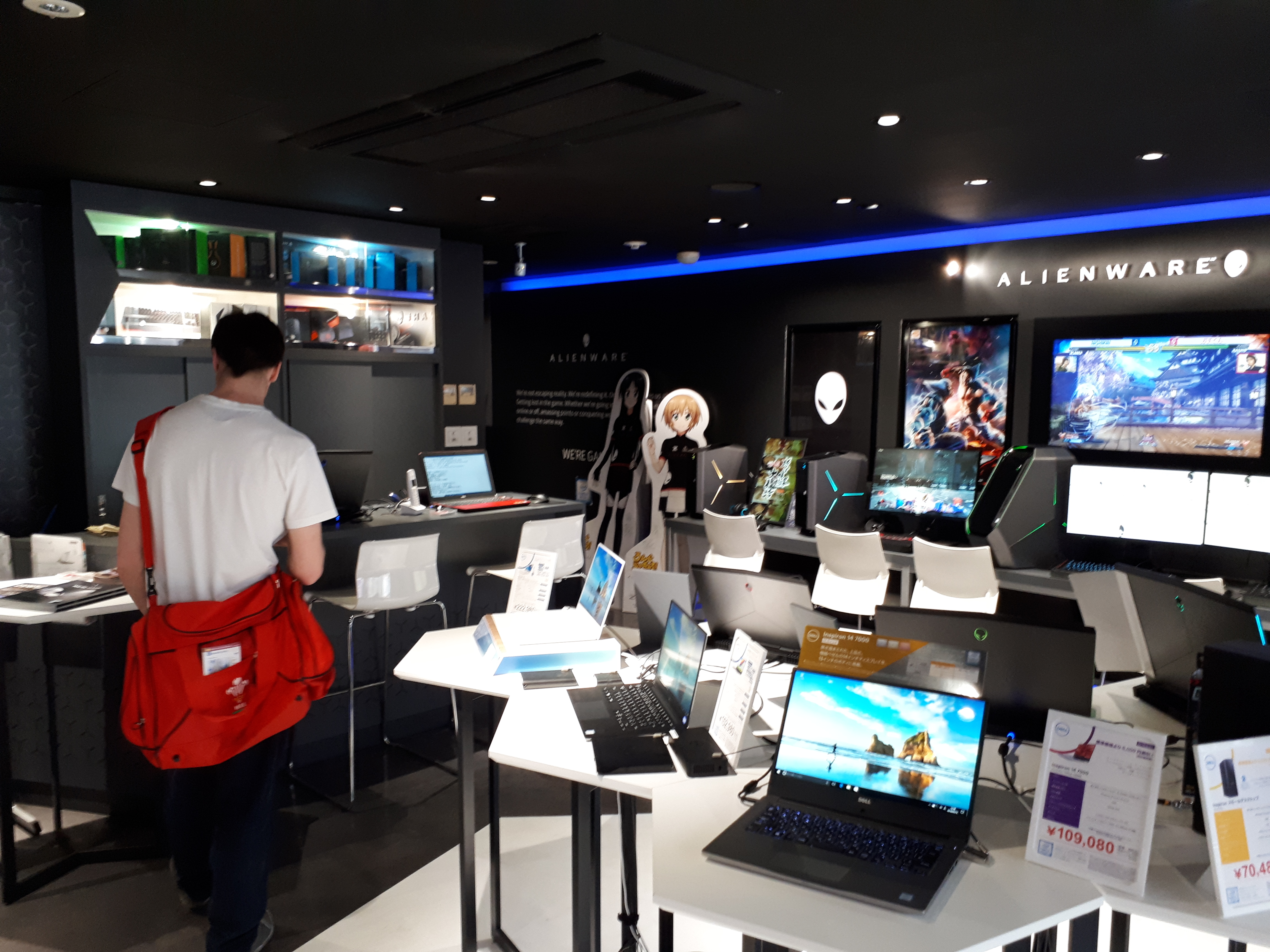
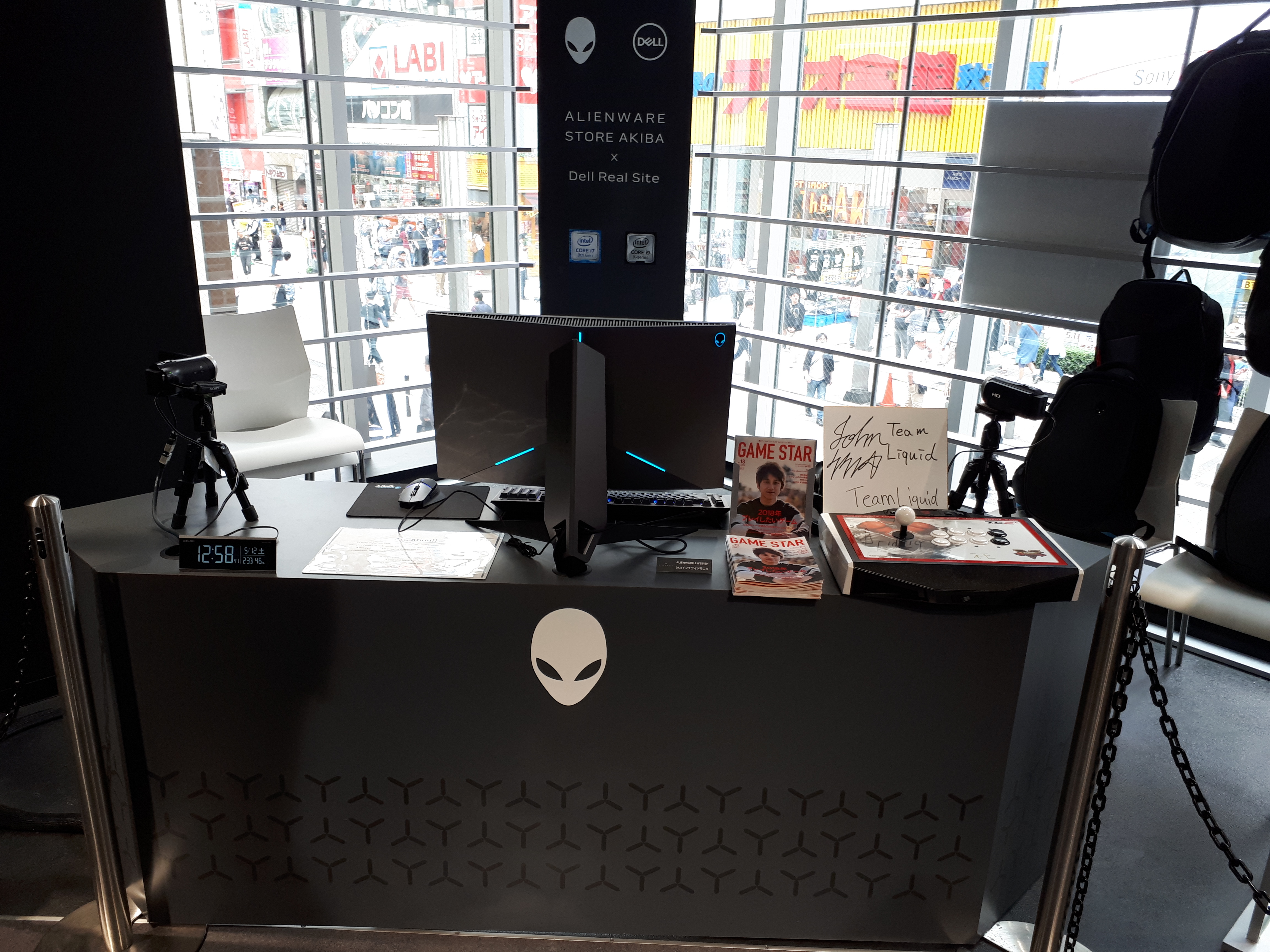
Then we went to the underground 'electric town' where you can buy pretty much anything electrical/electronic: 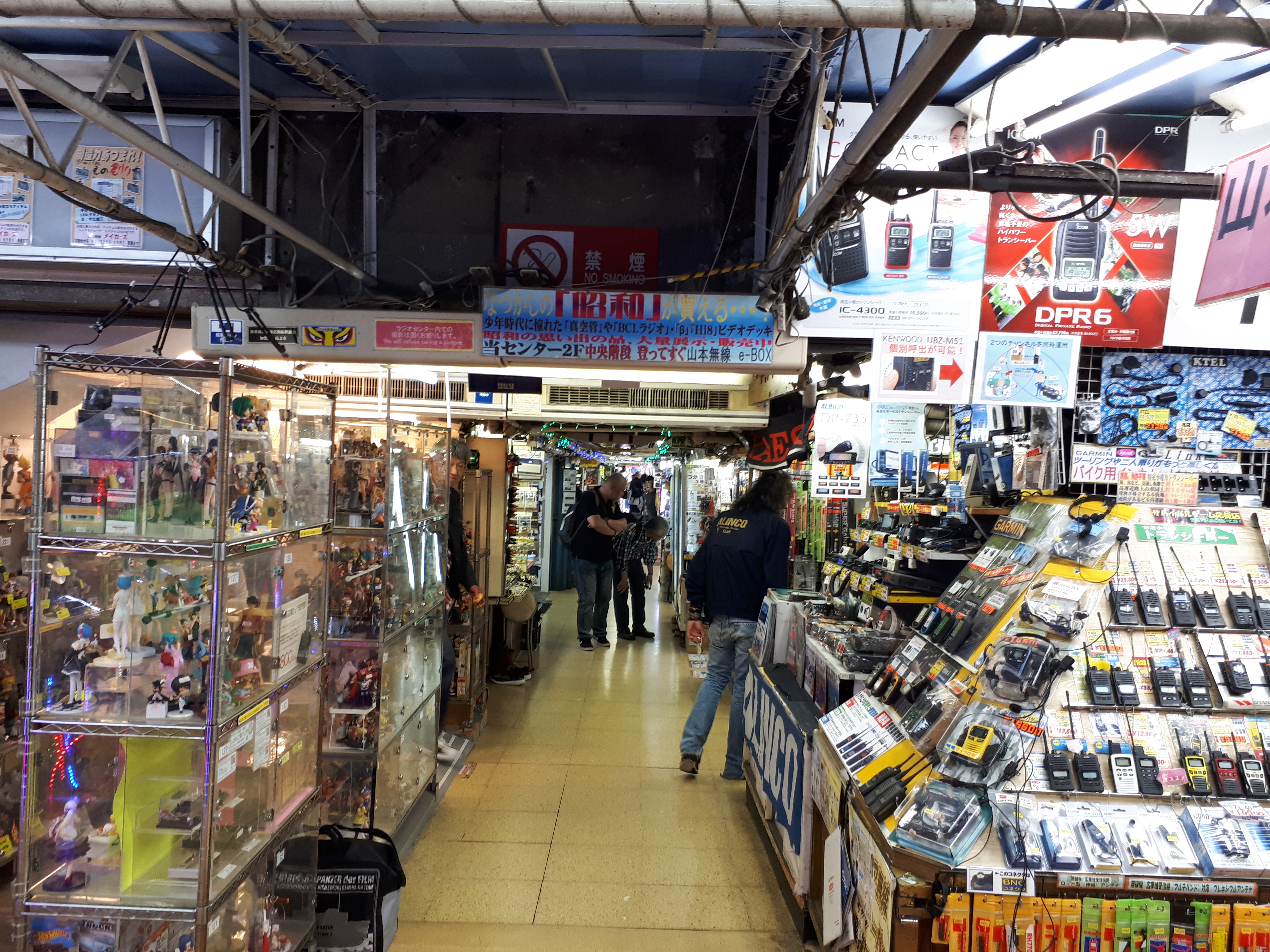
And then we found a giaaaant general multi-story consumer goods store with the largest PC gaming/peripherals floor I've ever seen: 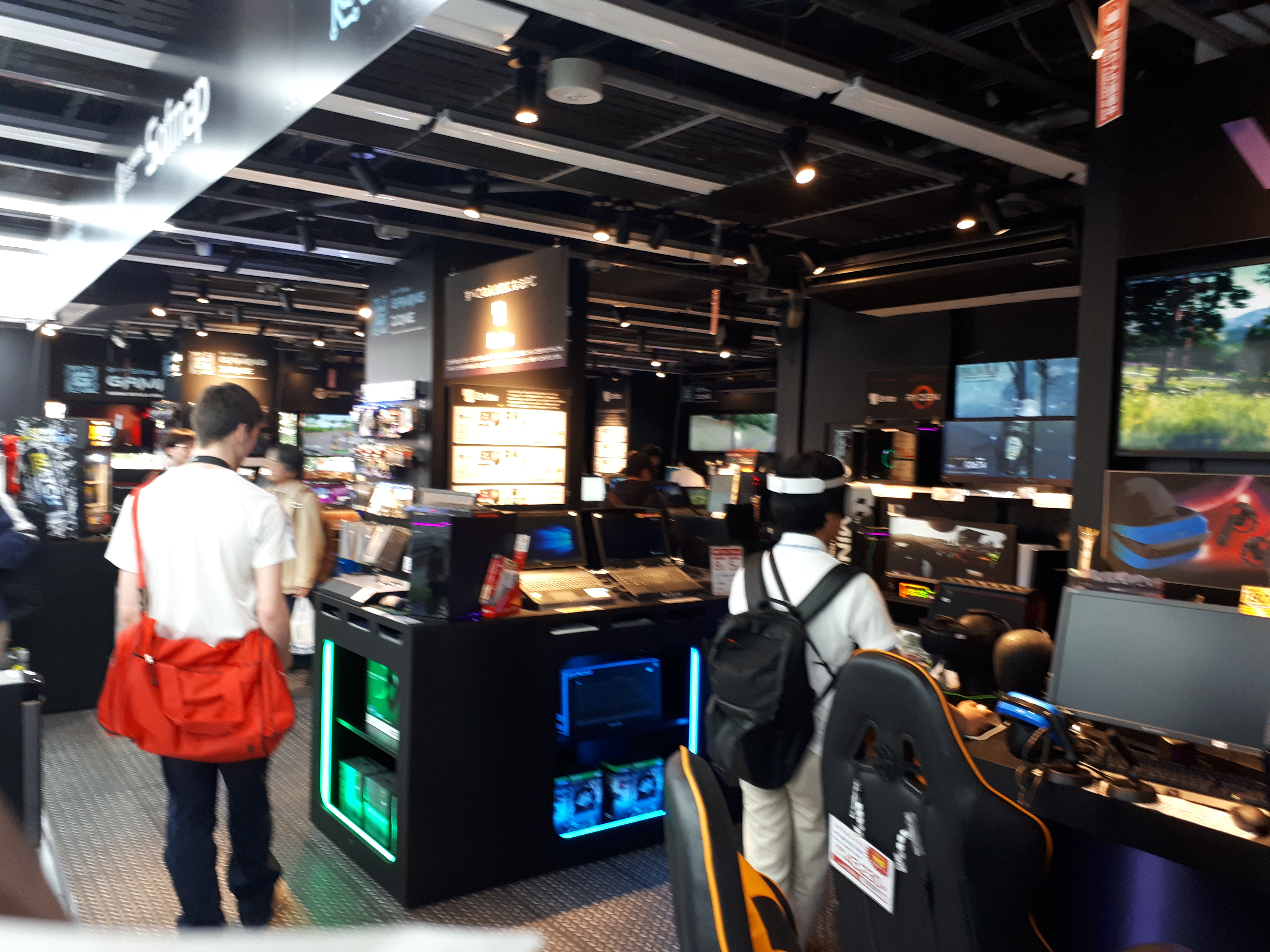 A nerd's paradise for sure (I loved it ;))
A nerd's paradise for sure (I loved it ;))
Video: Just the first three aisles of about 12 (11 secs) Samurai LessonIn a small town on the outskirts of Tokyo, you can find the Kill Bill choreographer Tetsuro Shimaguchi offering 90-minute introductory lessons for tourists to learn the basics of samurai sword art. And to be honest, I don't think you get many chances in life to be taught how to wield a sword by a famous movie choreographer, so naturally I was up for it.It also gave me a chance to see a very non-touristy area of Tokyo: 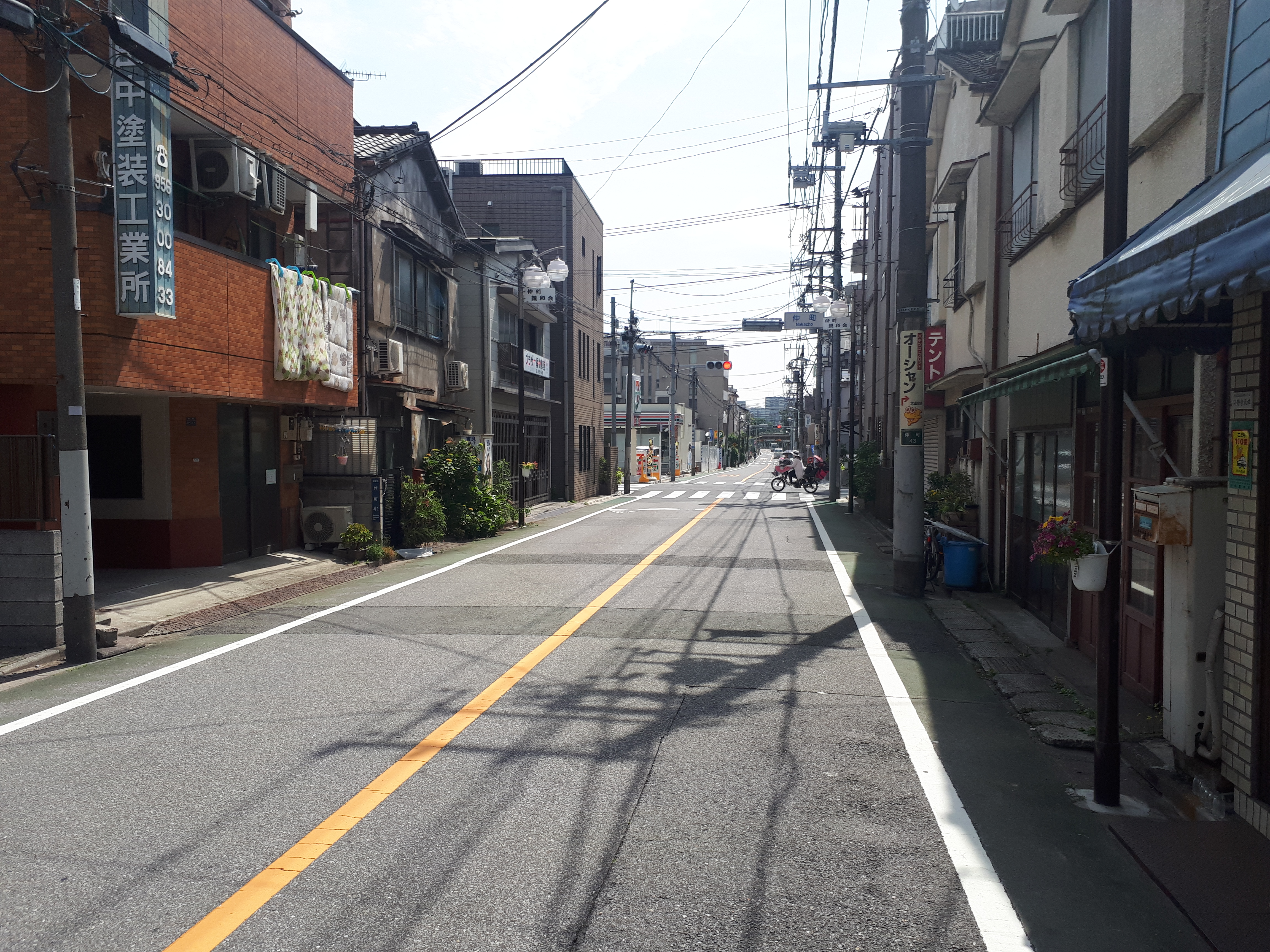 What really took my breath away is seeing all the bikes and other posessions left completely safely with no lock or anything on the streets. Theft is almost non-existent it seems. In London they'd be gone within 24 hours ;)
What really took my breath away is seeing all the bikes and other posessions left completely safely with no lock or anything on the streets. Theft is almost non-existent it seems. In London they'd be gone within 24 hours ;)
 The lesson itself was awesome. Reminded me a bit of kickboxing
The lesson itself was awesome. Reminded me a bit of kickboxing
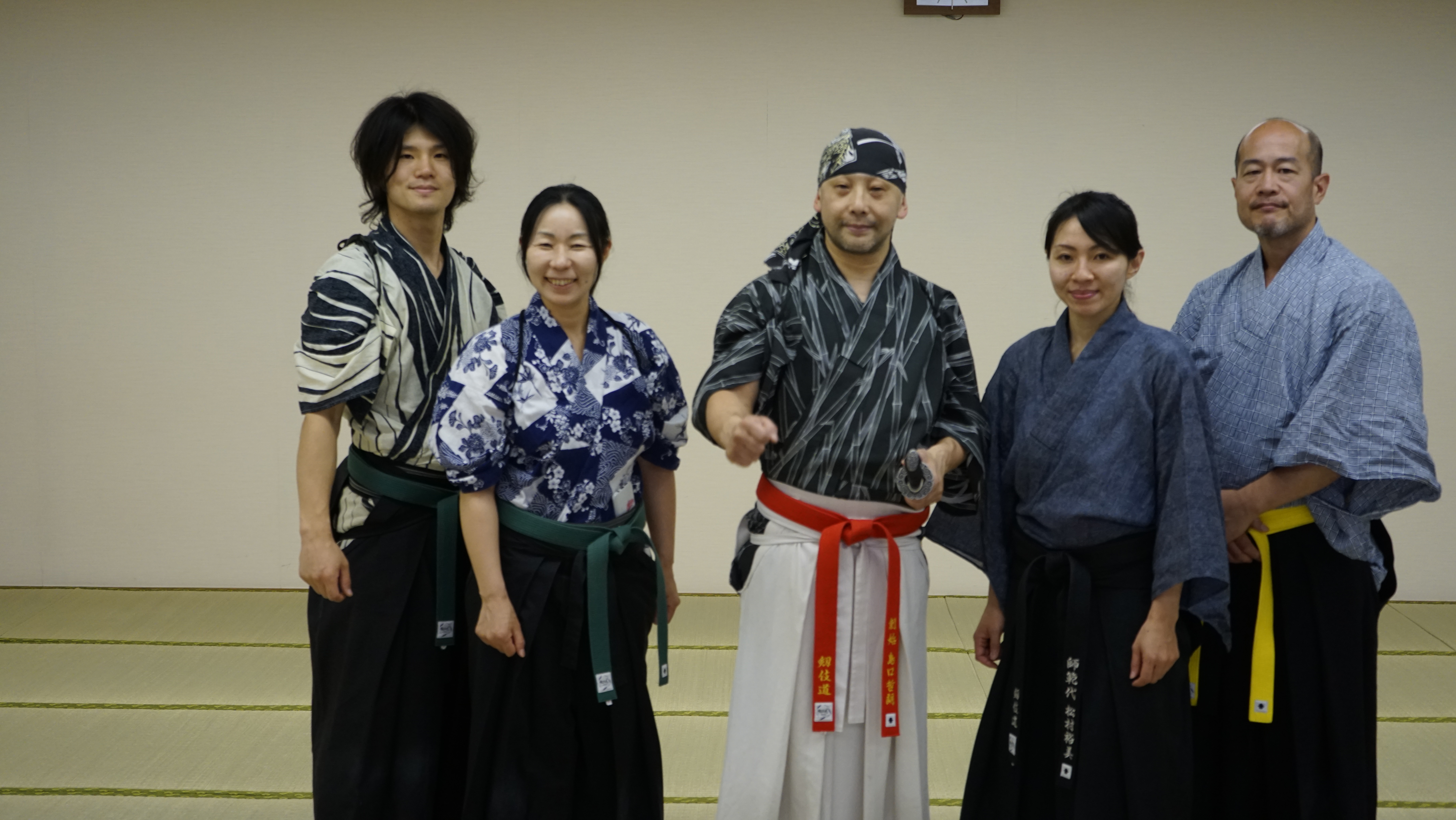 Tetsuro and his team were all extremely friendly and seemed geniunely excited to be sharing their knowledge. Tetsuro is a really funny guy, actually, and had cool stories about the filming of Kill Bill
Tetsuro and his team were all extremely friendly and seemed geniunely excited to be sharing their knowledge. Tetsuro is a really funny guy, actually, and had cool stories about the filming of Kill Bill
Other Misc. Tokyo Pics On the subway. As well as giant robots, Japan really likes 'cute' stuff it seems
On the subway. As well as giant robots, Japan really likes 'cute' stuff it seems
 A picture from inside Gonpachi, the restaurant in Kill Bill
A picture from inside Gonpachi, the restaurant in Kill Bill
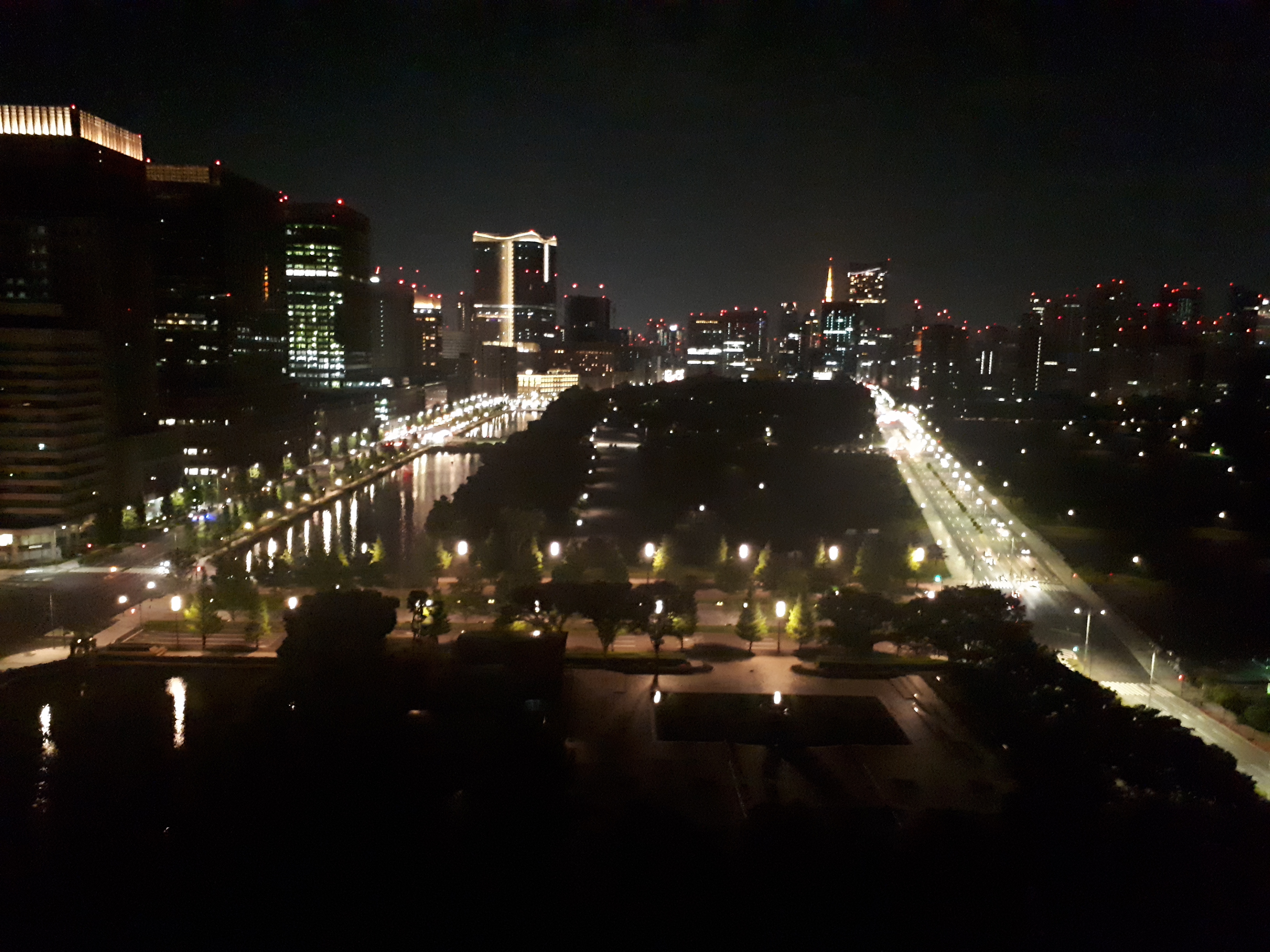 Tokyo at night
Tokyo at night
 Tokyo is a city of juxtaposition a lot of the time
Tokyo is a city of juxtaposition a lot of the time
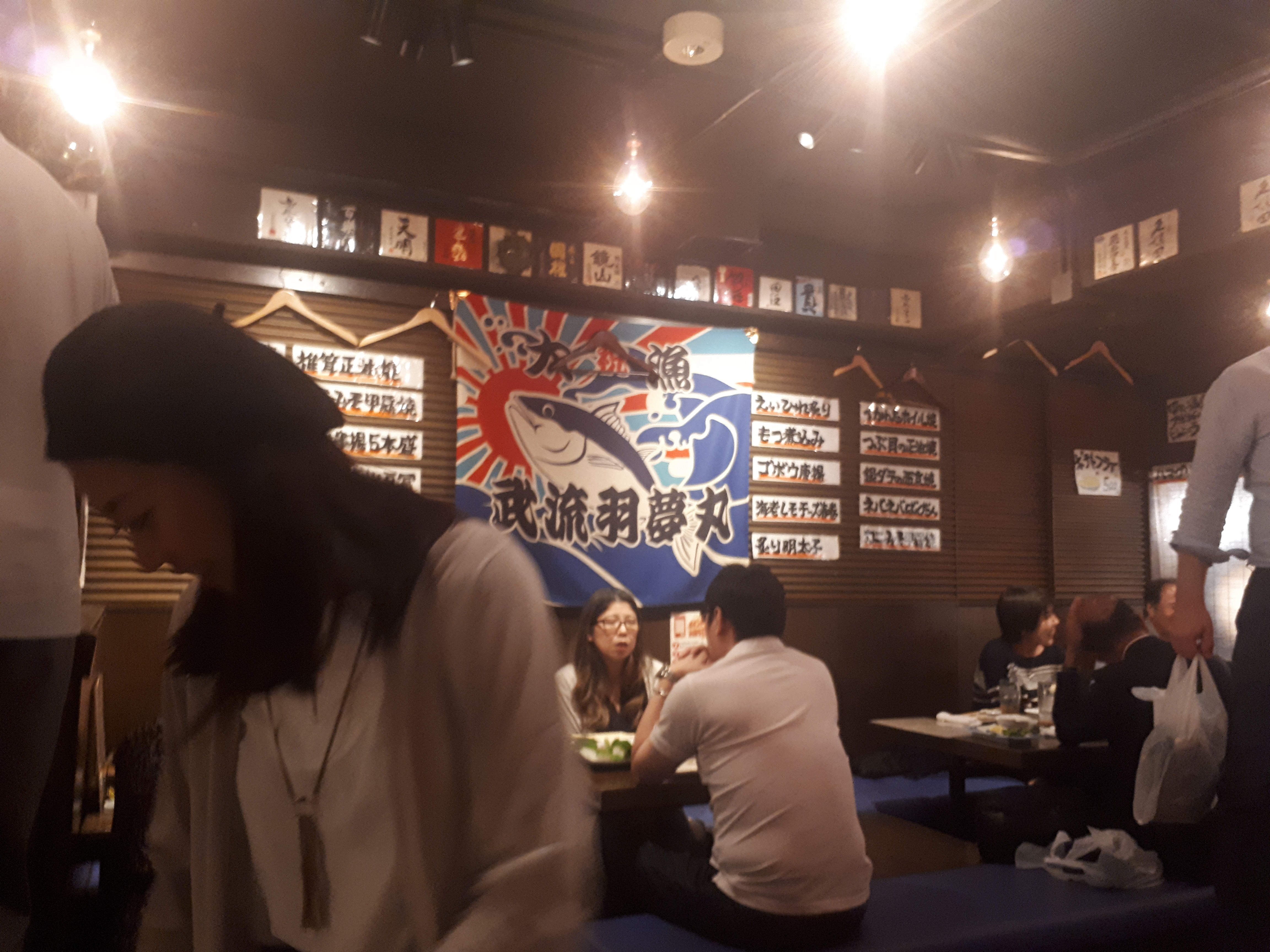 They served us a live fish here skewered with its flesh cut out. It was still trying to breathe a bit. I know it's just a fish but I tried to find a large knife to behead it; seemed like unnecessary cruelty
They served us a live fish here skewered with its flesh cut out. It was still trying to breathe a bit. I know it's just a fish but I tried to find a large knife to behead it; seemed like unnecessary cruelty
 A nice garden area
A nice garden area
 The inside of a nice boat we used at one point to travel up the Sumida river
The inside of a nice boat we used at one point to travel up the Sumida river
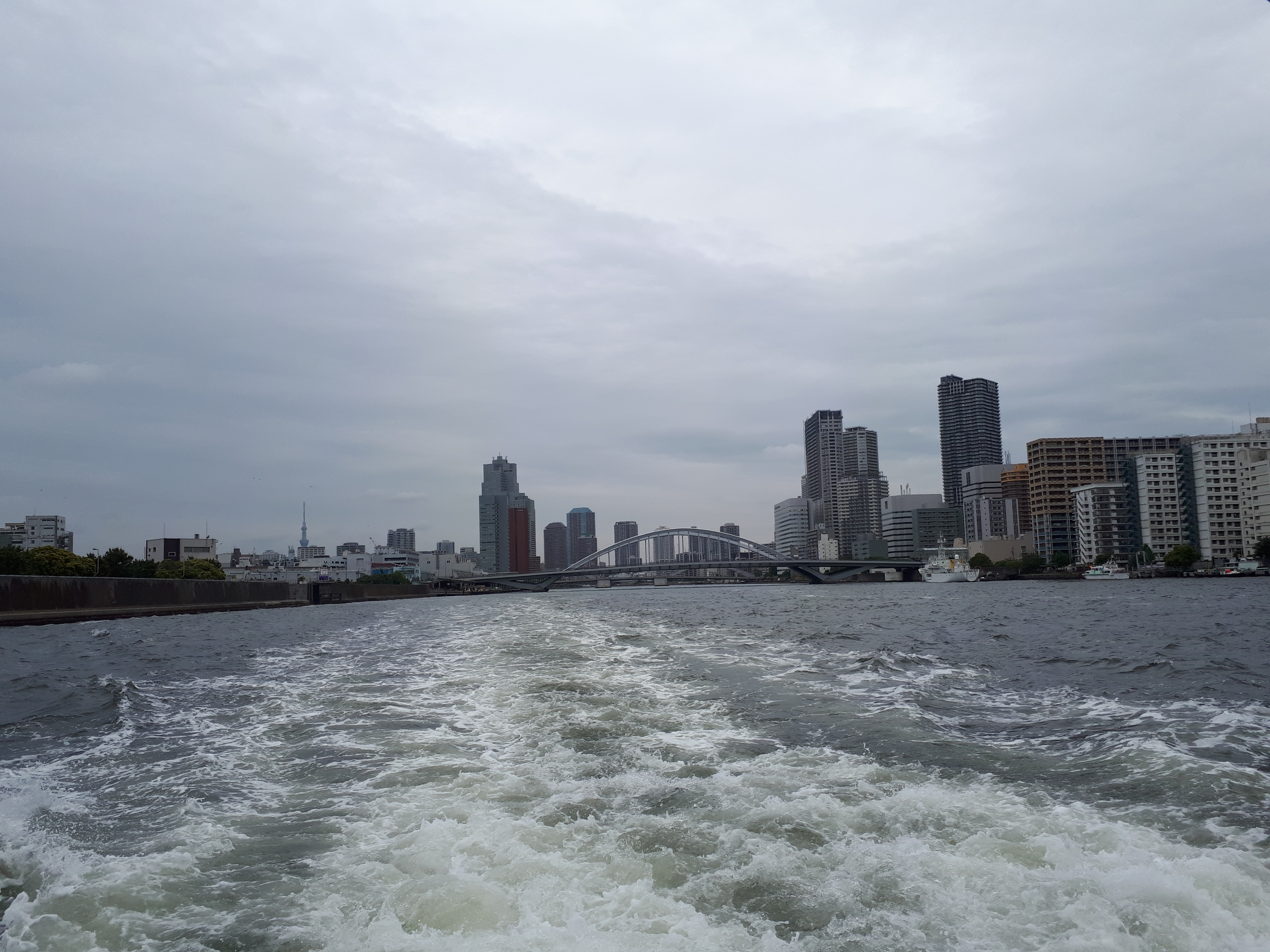 And the view from the back
And the view from the back
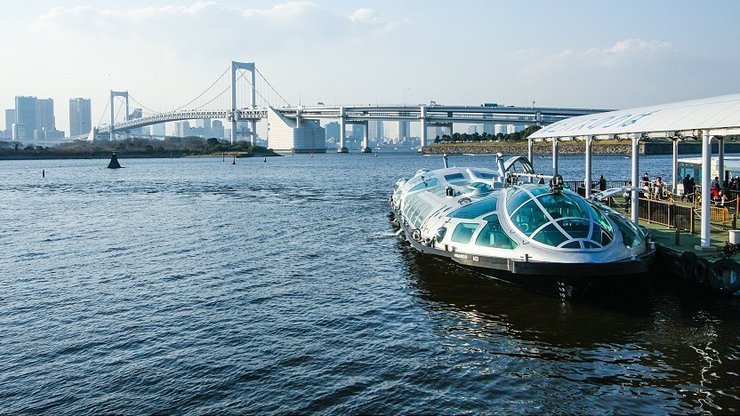 We also saw this awesome-looking thing go past the other way! (Image courtesy JapanGuide.com)
We also saw this awesome-looking thing go past the other way! (Image courtesy JapanGuide.com)
Video: A popular underground food place (11 secs) (there were signs saying "No Picking Up Girls" ;)) Tokyo was great and where we spent the longest time overall, but eventually it was time to move on... NaganoTime for our first ride on the famous Japanese bullet trains! The train station in Tokyo is pretty confusing I imagine even if you speak Japanese; and I'll admit, we did get on the wrong train once- luckily realising and getting back off at the same platform just in time.Still, the station is a real epitome of the Japanese's culturally-ingrained organisation and ideology of 'society comes first'. Every single platform had neatly laid out queue-lines on the floor; not one-per-train, but one-per-train-door (the tickets had the correct door number printed on them); for both the next train and the subsequent one. People would never barge to get on the train before the previous passengers had alighted. No one queue jumped, and no one was shouting or forcing their way anywhere or running. 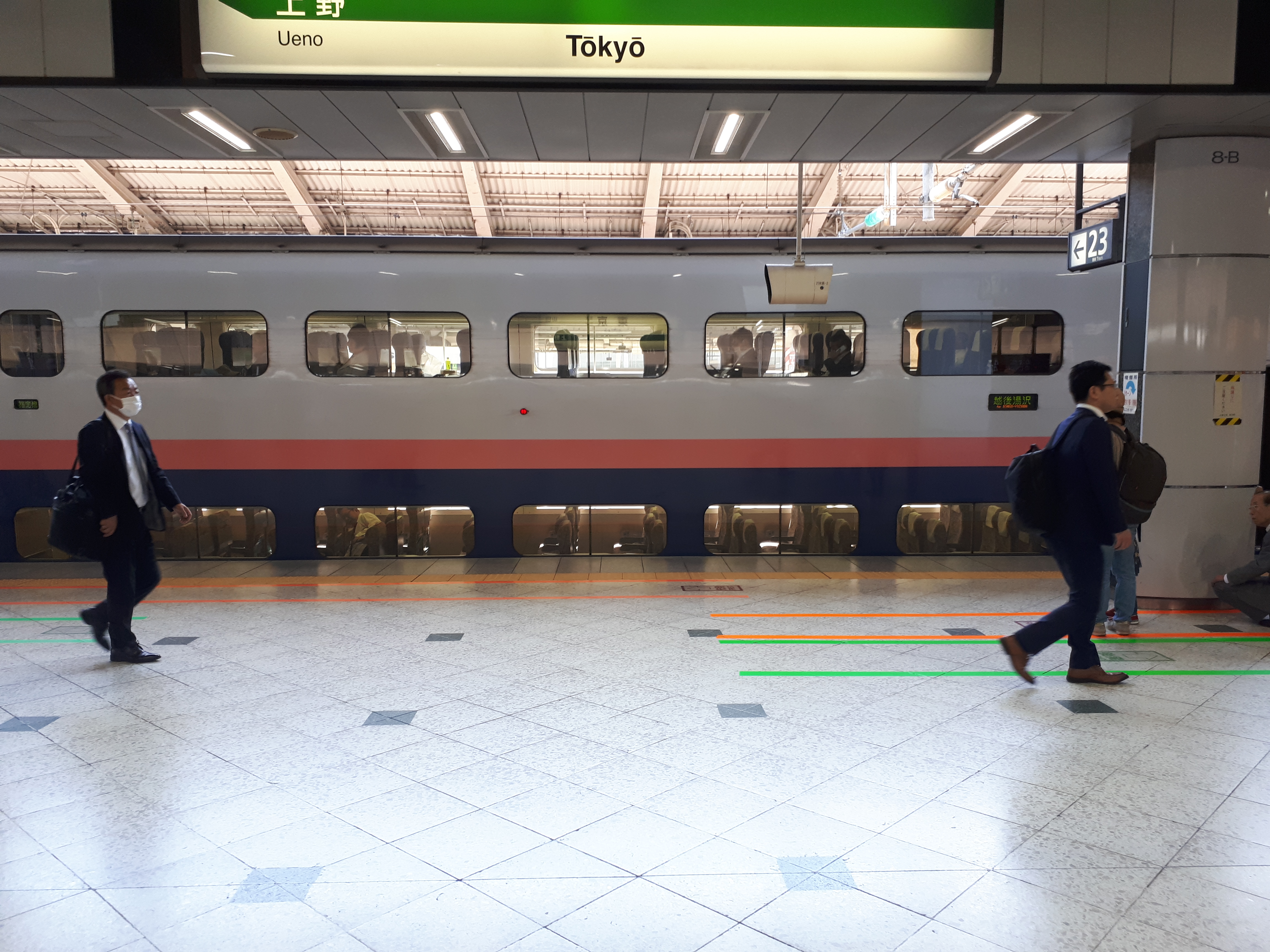 A double-decker shinkansen (bullet train)! You can also see the queue demarcations on the floor in orange/green.
A double-decker shinkansen (bullet train)! You can also see the queue demarcations on the floor in orange/green.
Zenkoji TempleAnyway, a short journey on the shinkansen later we arrived in Nagano; the home of one of Japan's most popular temples, Zenko-ji. This temple was originally constructed in the 7th century and is believed to be the home of the first ever Buddhist statue brought to Japan. Most of Nagano itself is a fairly standard city
Most of Nagano itself is a fairly standard city
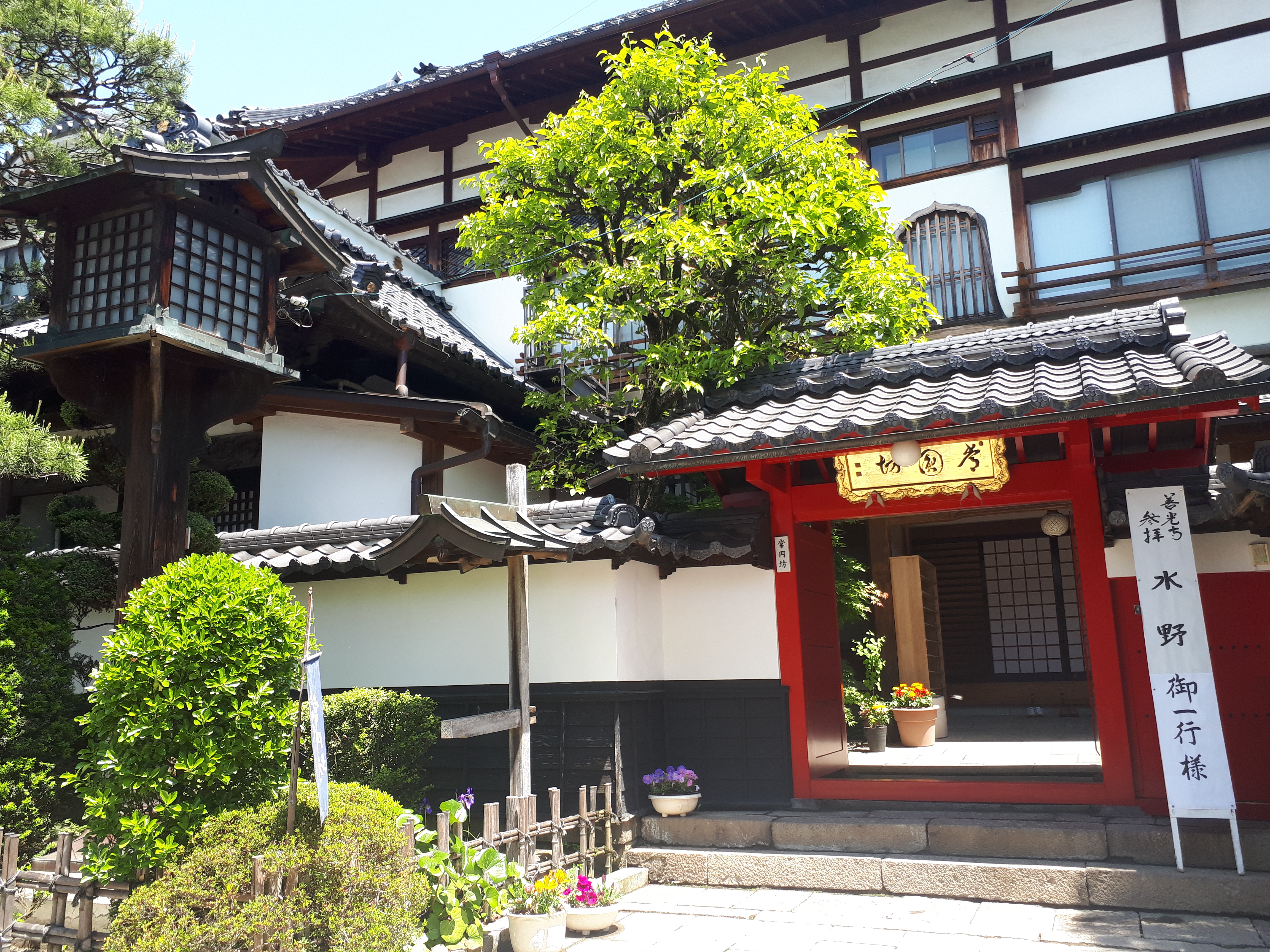 As you approach the temple however there are some lovely buildings used by the maintainers and monks who inhabit the temple (built much later around 1900)
As you approach the temple however there are some lovely buildings used by the maintainers and monks who inhabit the temple (built much later around 1900)
 The main gate to the temple grounds. Notice the two huge guardians in the pillars; there to ward off fire if I recall correctly
The main gate to the temple grounds. Notice the two huge guardians in the pillars; there to ward off fire if I recall correctly
 A dank-ass dragon with a glowing eye warding one of the outbuildings
A dank-ass dragon with a glowing eye warding one of the outbuildings
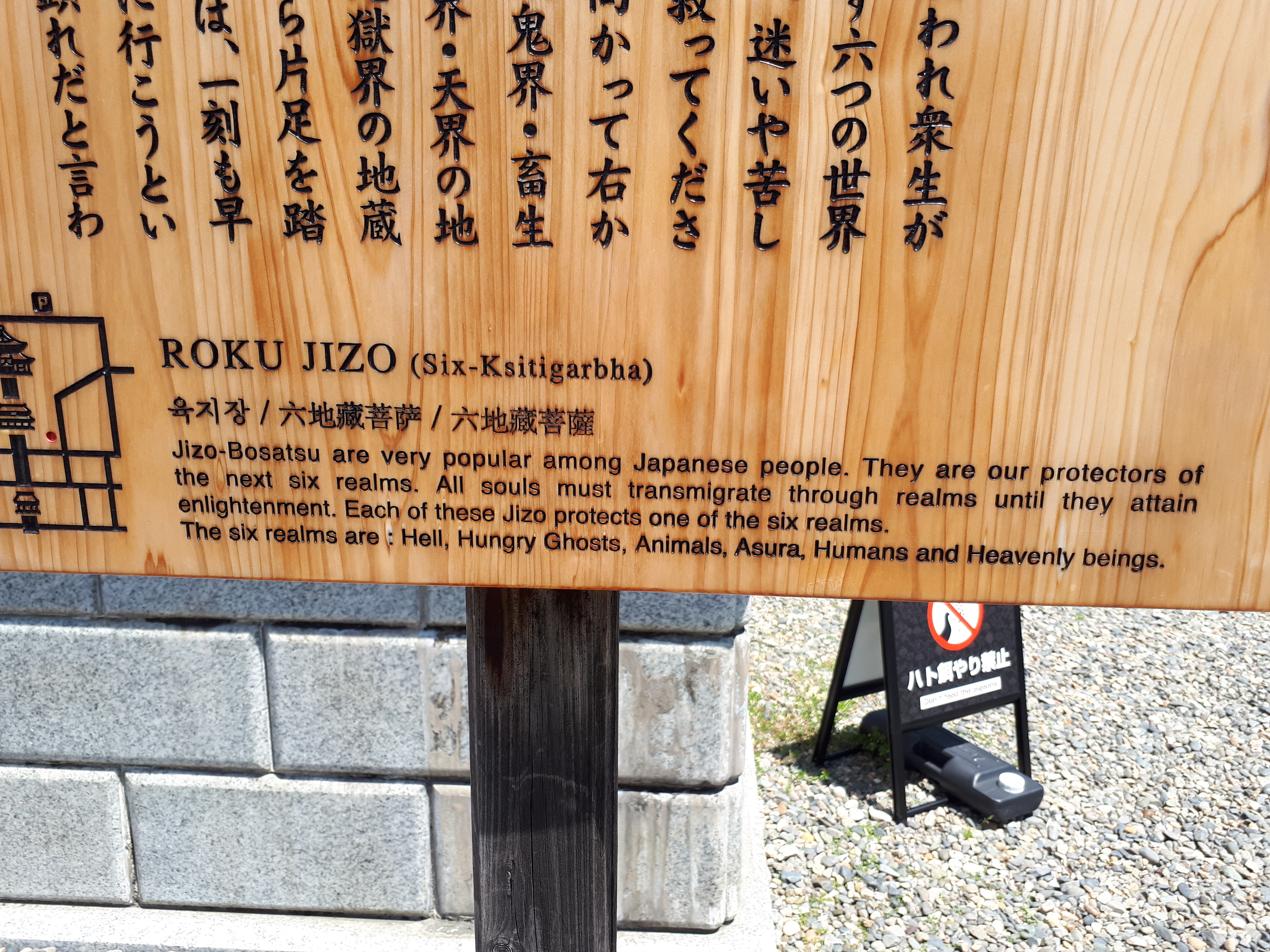 I guess that's where the saying "I'll do it come hell or hungry ghosts" comes from
I guess that's where the saying "I'll do it come hell or hungry ghosts" comes from
Inside the temple itself was seriously beautiful; the whole interior had a stunning gold and dark amber theme mixed with dark wooden timber and painted walls. Dim candles and unobtrusive lighting mixed with strong incense made the whole place very restful and drew you in.  The exterior of the temple itself. Shoes had to be removed and cameras put away past this point.
The exterior of the temple itself. Shoes had to be removed and cameras put away past this point.
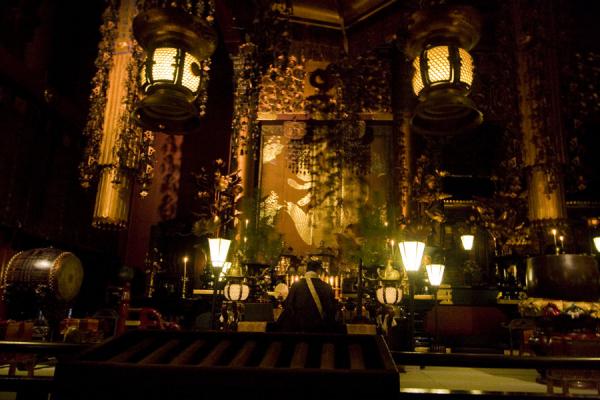 The inside of the temple. Photography inside the temple itself is strictly forbidden, so this is a picture used with permission from http://www.traveladventures.org/.
The inside of the temple. Photography inside the temple itself is strictly forbidden, so this is a picture used with permission from http://www.traveladventures.org/.
Inside the temple there was also a pitch black underground passage where you had to navigate your way through only by touching the walls; symbolising the journey to the afterlife after death. Quite claustrophobic!  Picture from inside the pitch-black passage.
Picture from inside the pitch-black passage.
 The view of Nagano from the temple grounds
The view of Nagano from the temple grounds
Yudanaka / Shibu OnsenAfter leaving Zenkoji we took a local train to Yudanaka; where we would find 'Shibu Onsen'. Onsens are traditional Japanese bath houses; and we would be staying in a 'ryokan', a traditional Japanese inn/b&b.Weirdly enough one of my favourite things during the entire trip to Japan was this train journey. When we got onboard we noticed that the front of the train was completely opened out with a large bay window (the driver sat in a cabin above). I put some music in my ears and watched rural Japan go by: Video: The view from the train (20 secs) Eventually we arrived in Yudanaka and took a "shuttlebus" (minivan, frankly) to the ryokan. The journey and our eventual arrival made it was clear that this was to be the most rural part of our trip. The hospitality service itself was certainly not outdated though; when we arrived we were greeted with a free candy, bath robes, free socks to be worn with wooden flipflops (which I've kept), a tour of the building, and my personal favourite: A little Japan/GB flag :) 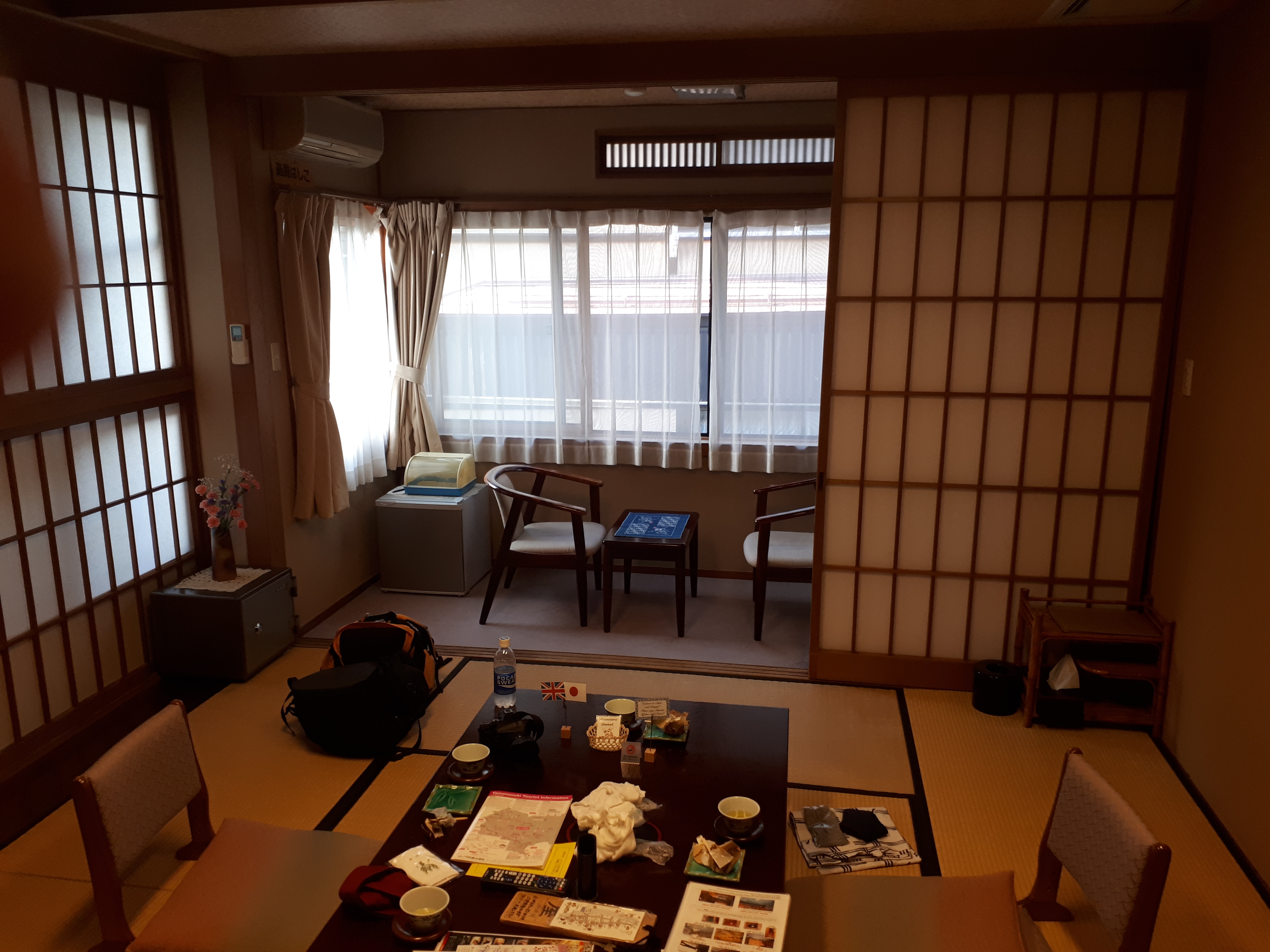 Our ryokan. Later that evening, maids entered while we had dinner downstairs and re-arranged the furniture to place two beds on the floor.
Our ryokan. Later that evening, maids entered while we had dinner downstairs and re-arranged the furniture to place two beds on the floor.
After arriving we took some time to try out the traditional onsen (baths) literally inside the ryokan. The onsen use hot spring water that flows directly from the surrounding active geothermal terrain. Really revitalising, if a little sulphurous ;) 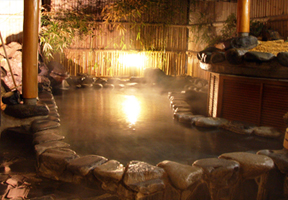 One of the baths (onsen) in our ryokan. Photos inside the baths aren't allowed for obvious reasons, so this picture is taken from the ryokan's website.
One of the baths (onsen) in our ryokan. Photos inside the baths aren't allowed for obvious reasons, so this picture is taken from the ryokan's website.
The meal we were served in the evening was frankly amazing. Although it wasn't my favourite food overall during the trip the presentation and traditional ingredients/preparation were certainly an amazing experience. 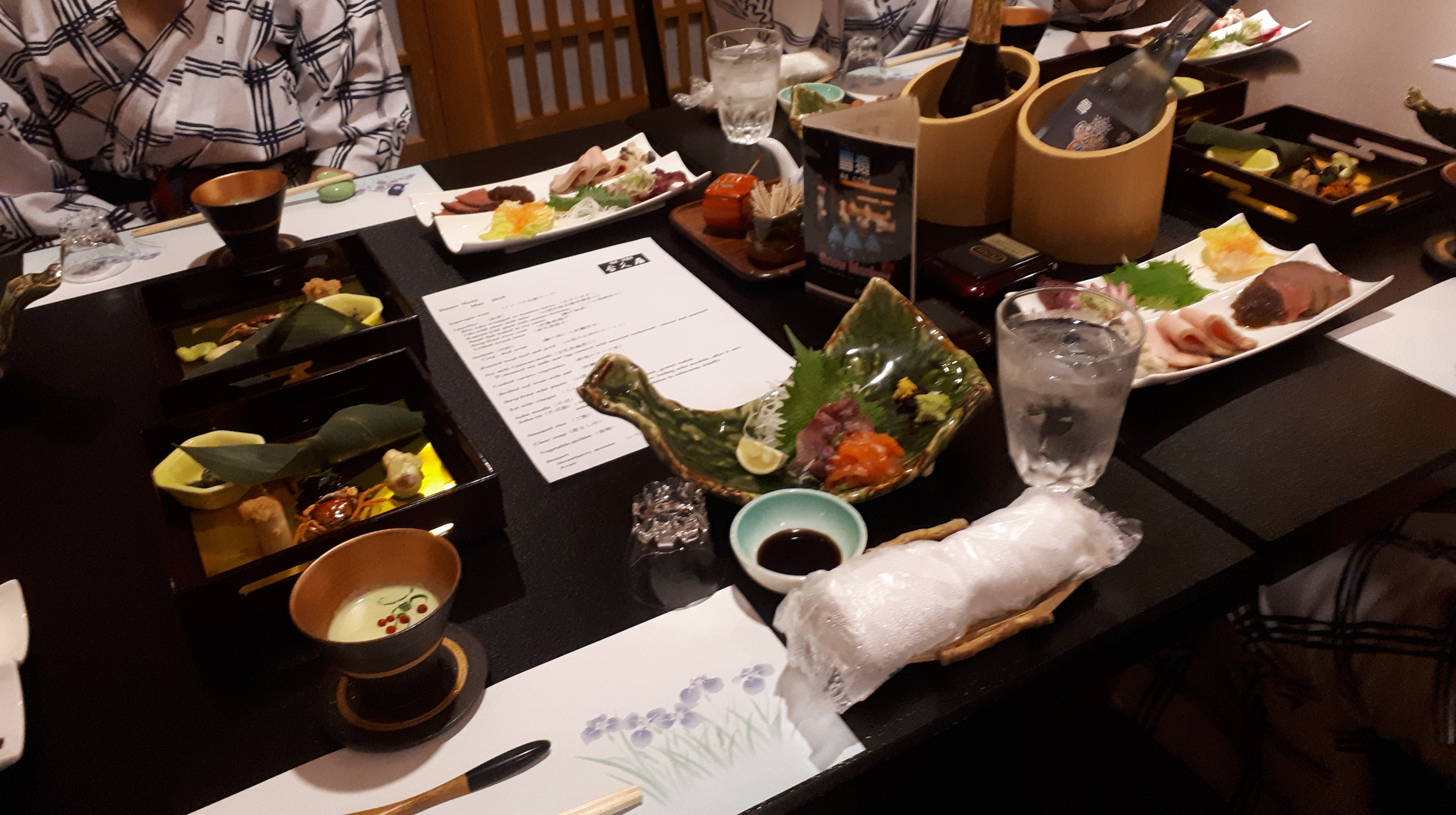 This was just the first 2 courses of 11...
This was just the first 2 courses of 11...
After dinner that evening we wandered out in to the small town, in our robes and wooden sandals (as is traditional!).  As is often the way, this less cosmopolitan place had a stronger connection with religion and tradition
As is often the way, this less cosmopolitan place had a stronger connection with religion and tradition
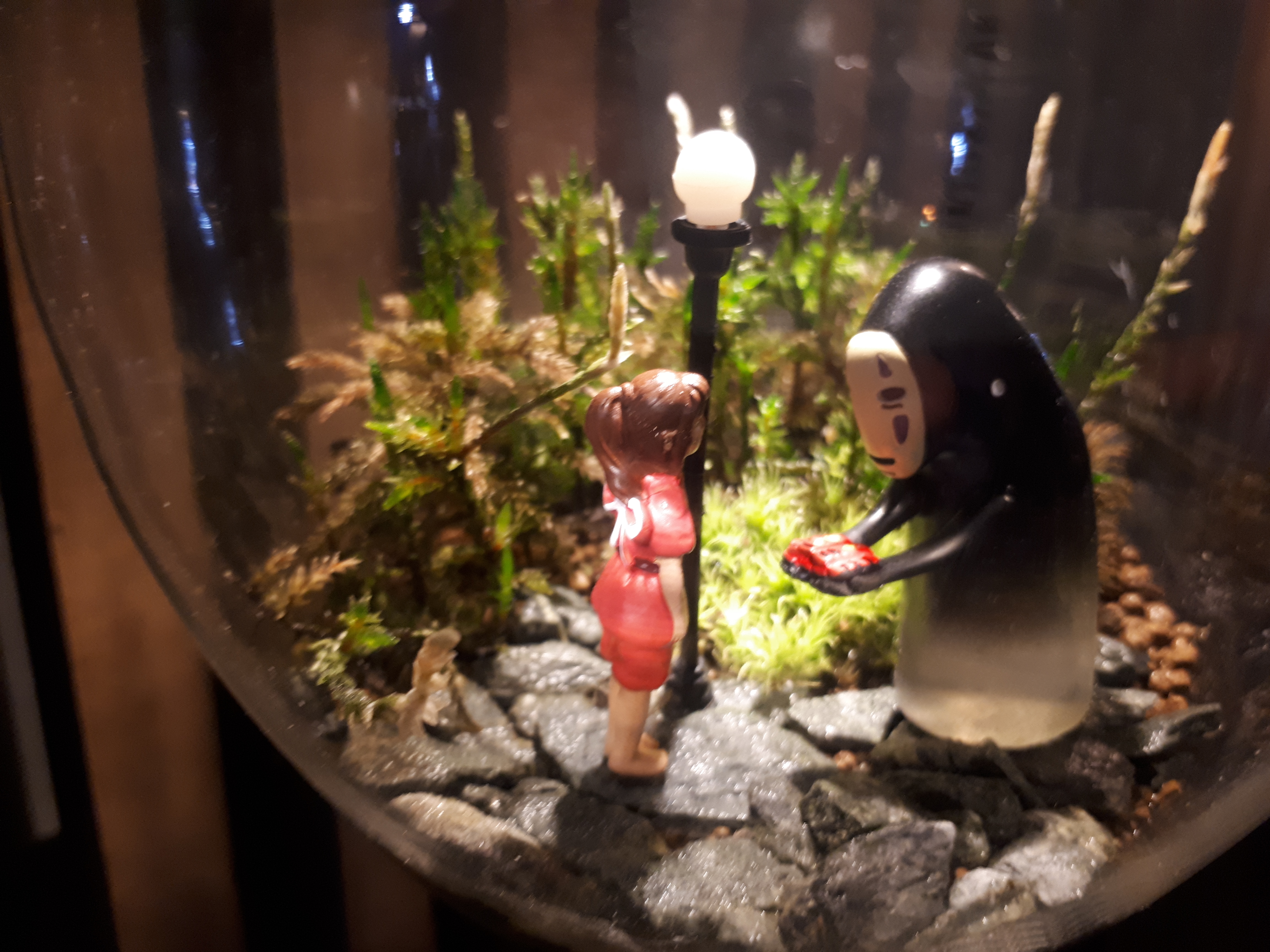 I think this is an homage to something, but I'm not sure what?
I think this is an homage to something, but I'm not sure what?
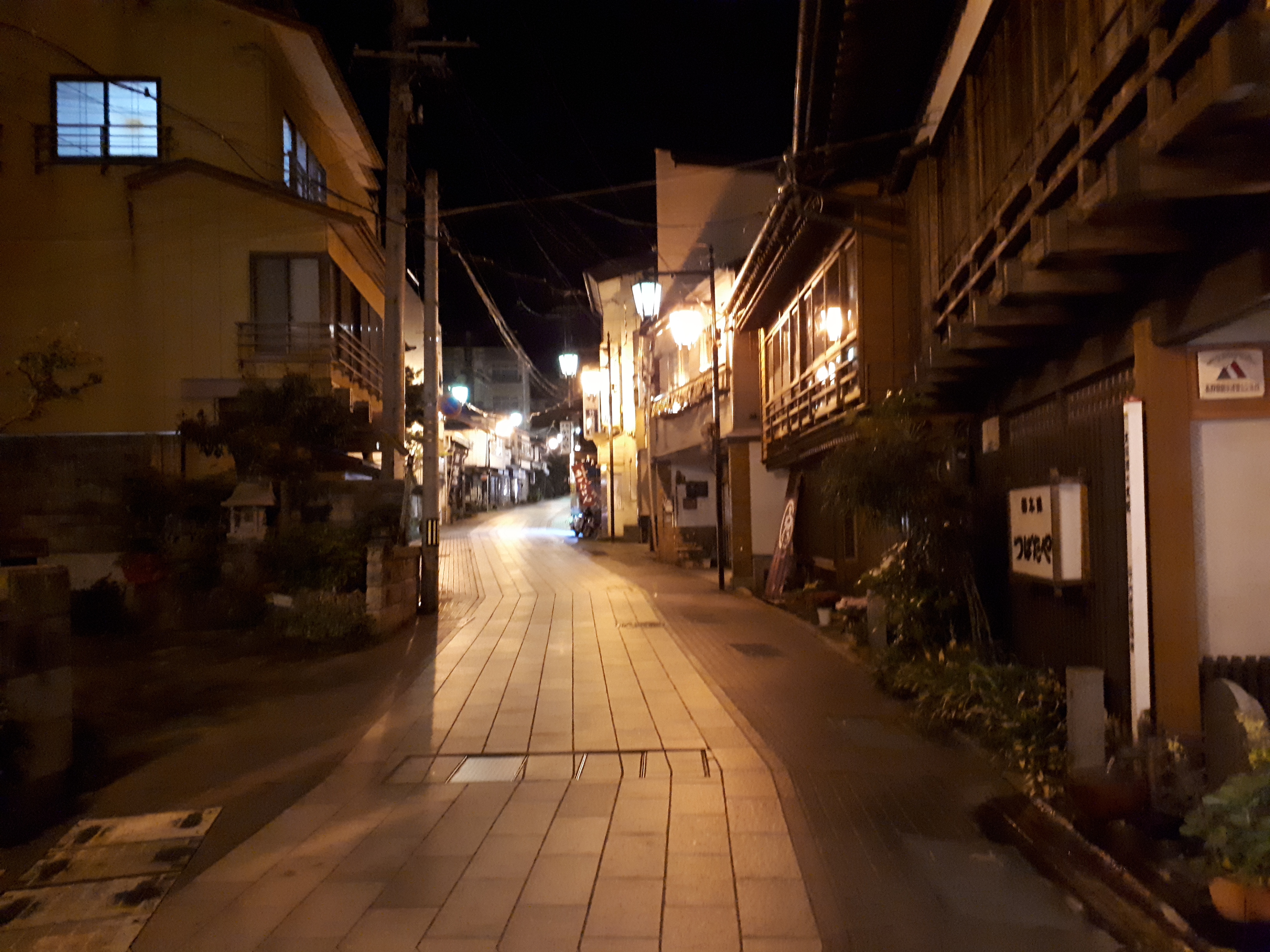 A picture of the street we were staying on (blurry, sorry)
A picture of the street we were staying on (blurry, sorry)
 Some of the buildings around us were amazing
Some of the buildings around us were amazing
Jigokudani Yaen KoenThe next morning we got up early to get a shuttle to the nearby "hell's valley" to try and spot elusive snow monkeys.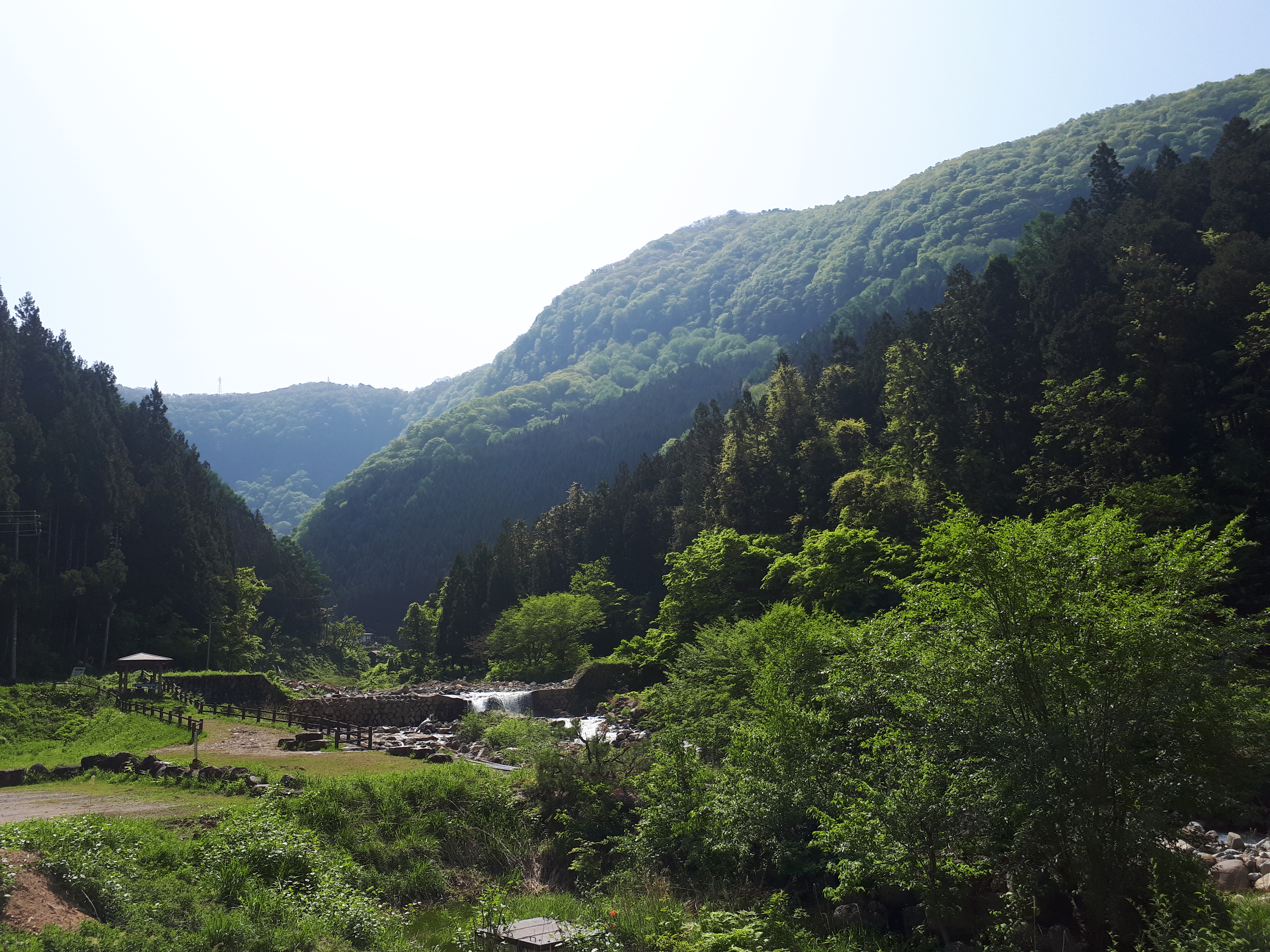 Monkeys or no monkeys, it's still definitely worth seeing
Monkeys or no monkeys, it's still definitely worth seeing
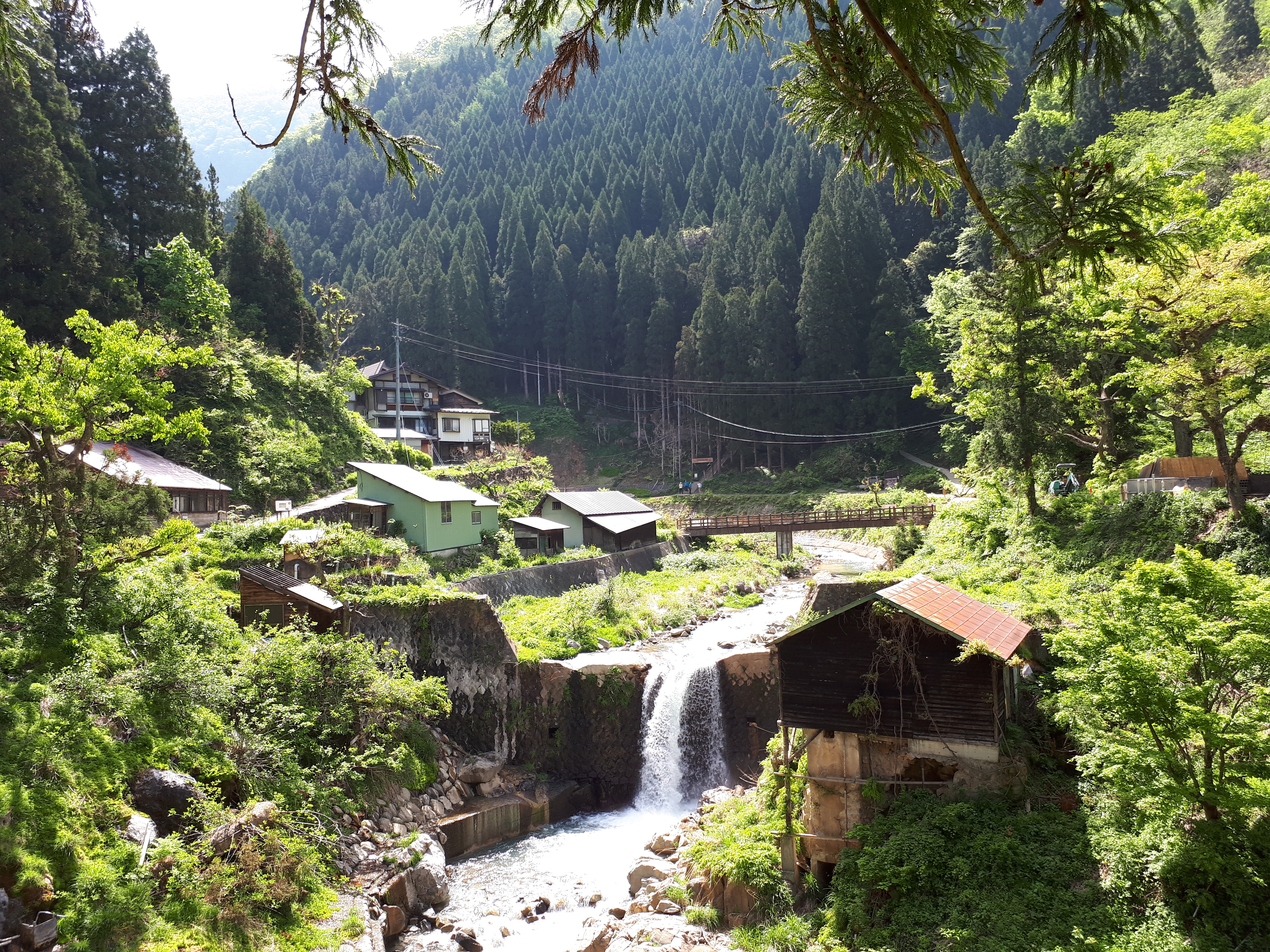 I doubt they get fast internet here
I doubt they get fast internet here
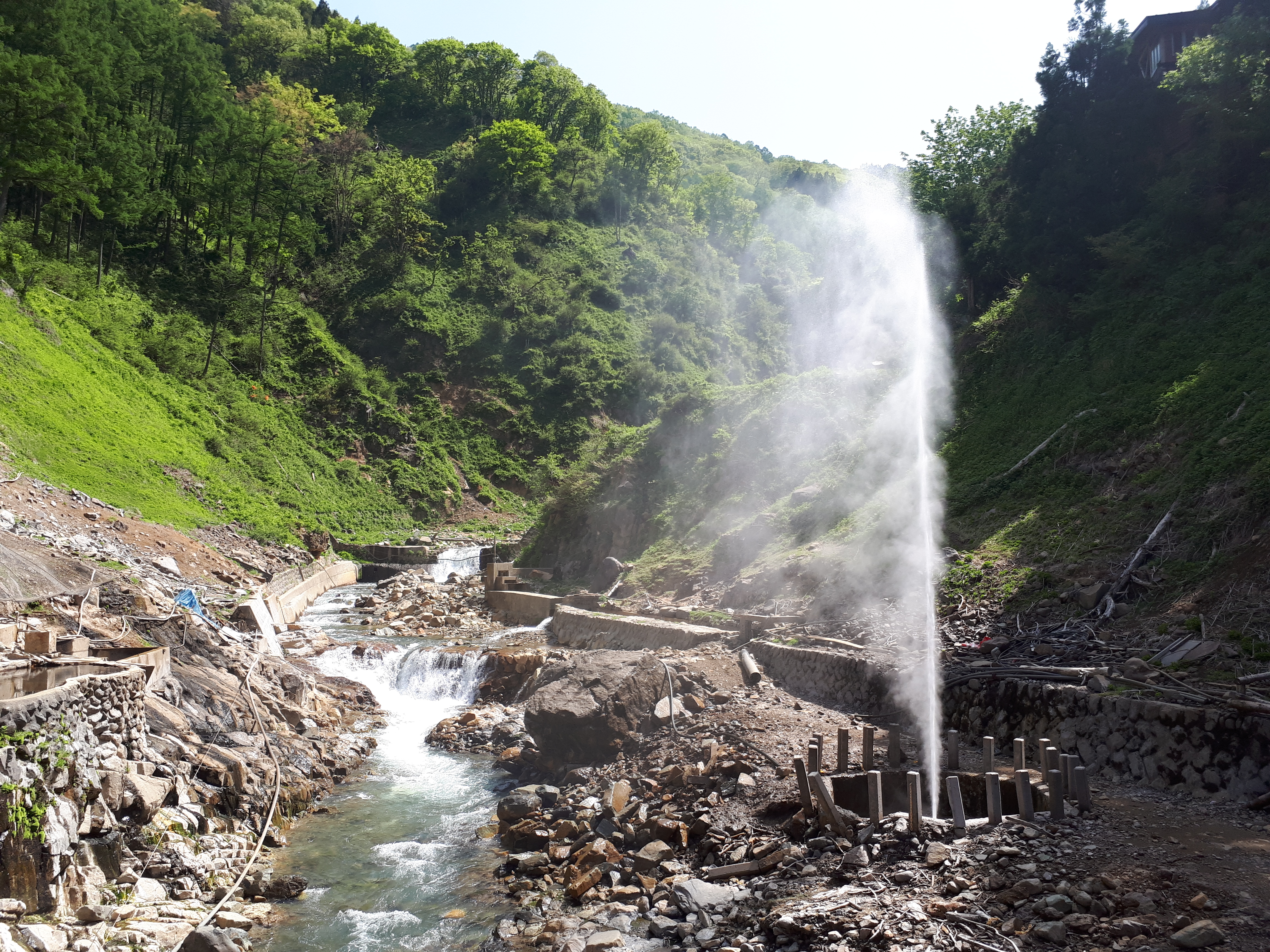 One of the natural hot springs
One of the natural hot springs
The hot springs fill natural (and artificial) pools that the monkeys use to stay warm and bathe in. We had to be patient but with a little coercion from one of the rangers we got to see some: 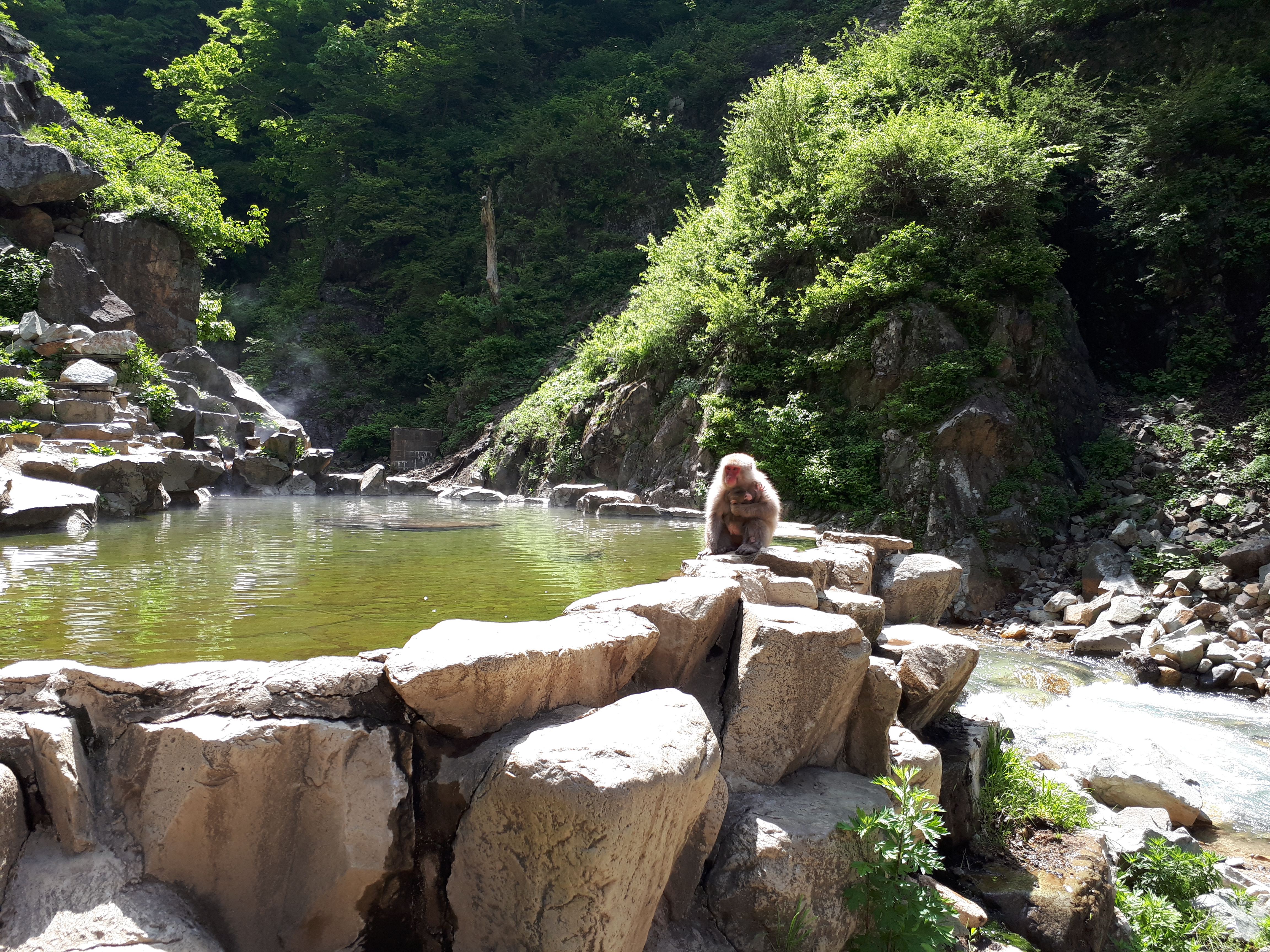
And then quite a few more turned up... 
Video: Monkey business (11 secs) MatsumotoLater that day we took another train to nearby Matsumoto; a 16th century castle town. The next day we would be exploring the mountainous regions surrounding Matsumoto, but today there was only time to go and see the so-called "Crow Castle"; named for its black walls and spreading wings.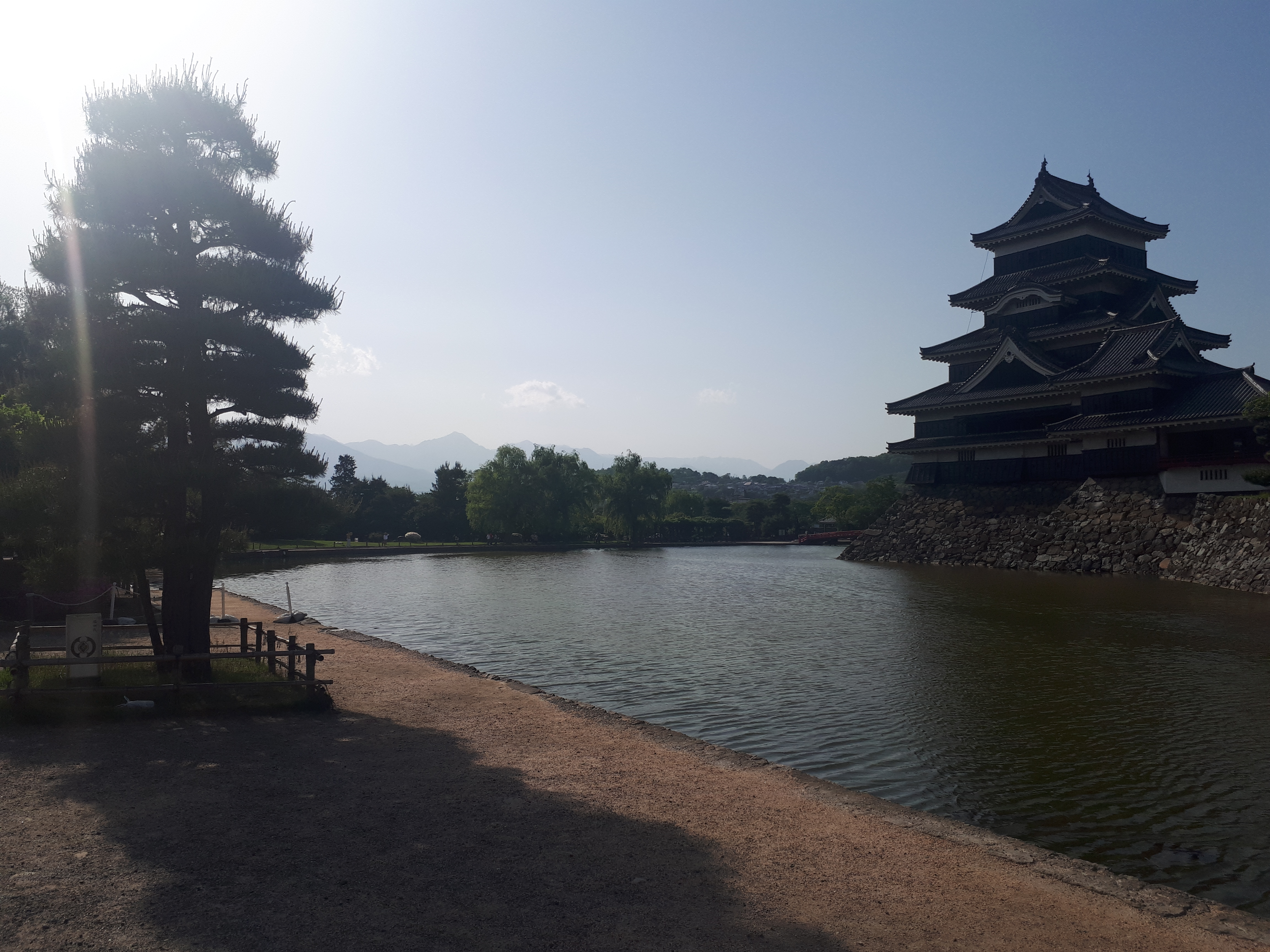 The castle and surrounding mountains
The castle and surrounding mountains
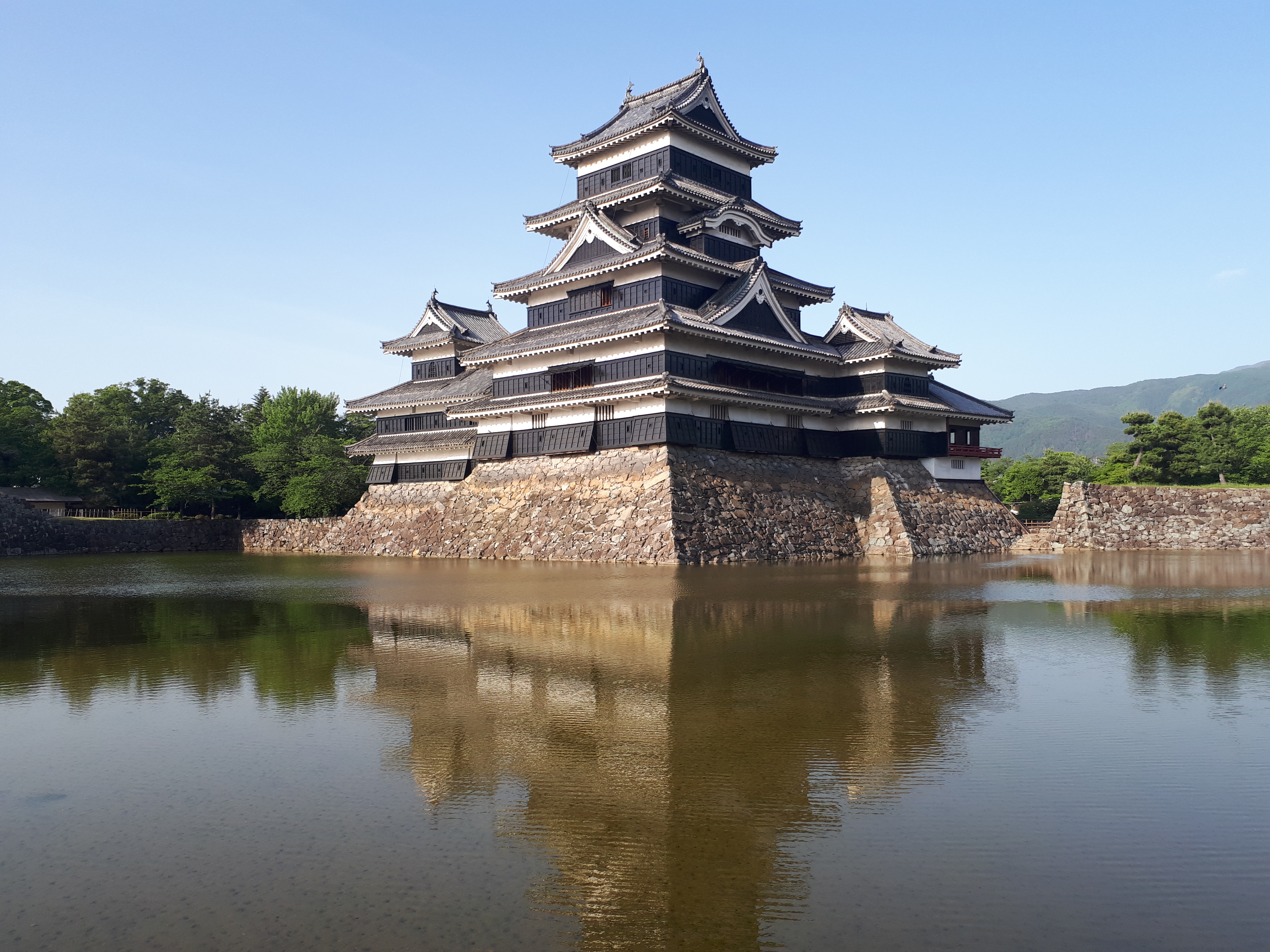 And a picture of just the castle, guarded by its moat
And a picture of just the castle, guarded by its moat
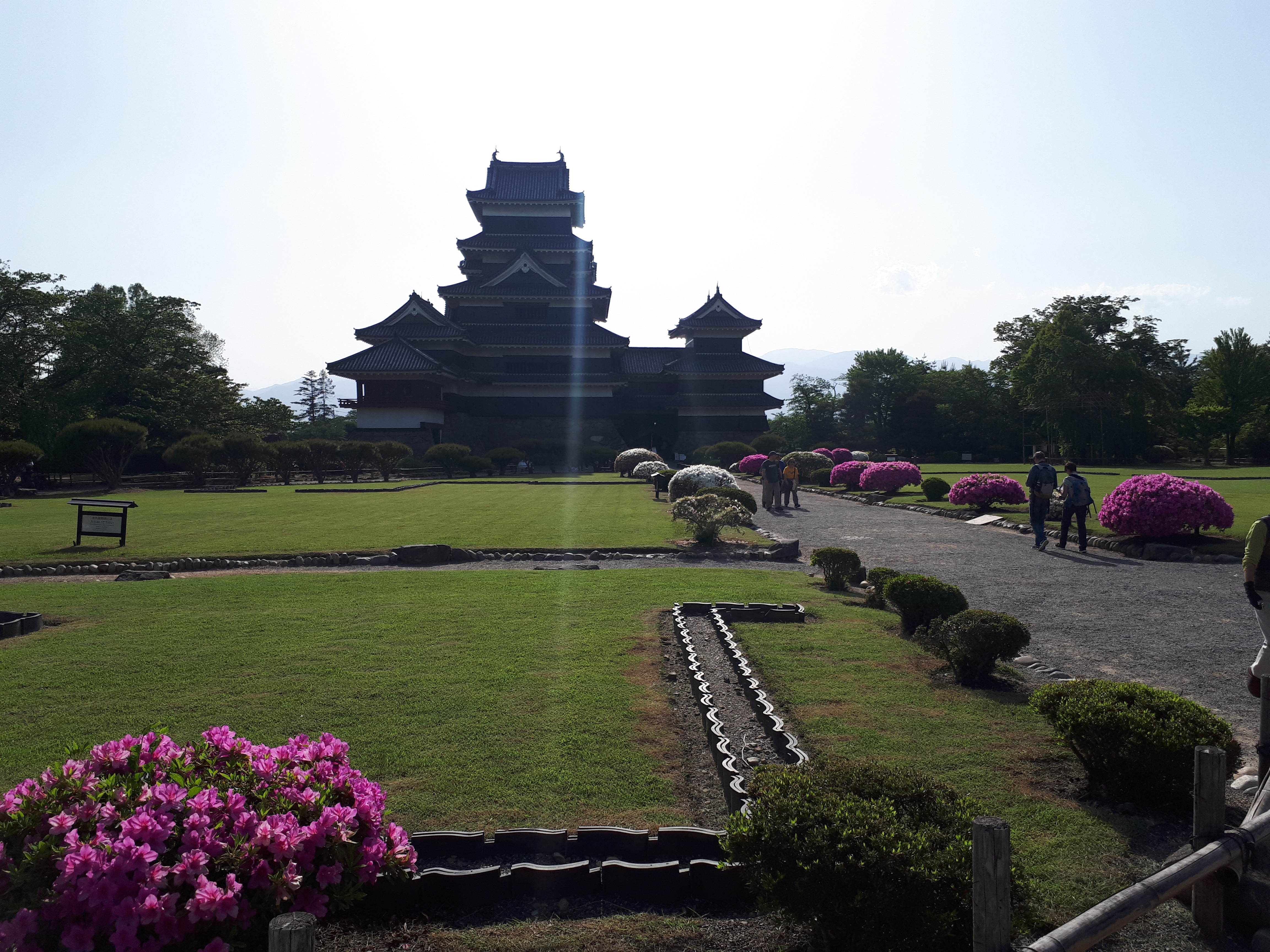 The approach to the castle from the other side
The approach to the castle from the other side
KamikochiOn the seventh day of the trip we had to get up especially early to get a local train to Kamikochi, a nature reserve and trail up in the mountains. Nothing like getting a rural train at 8am in a foreign country when you're still jetlagged ;). But definitely worth it when we got up there...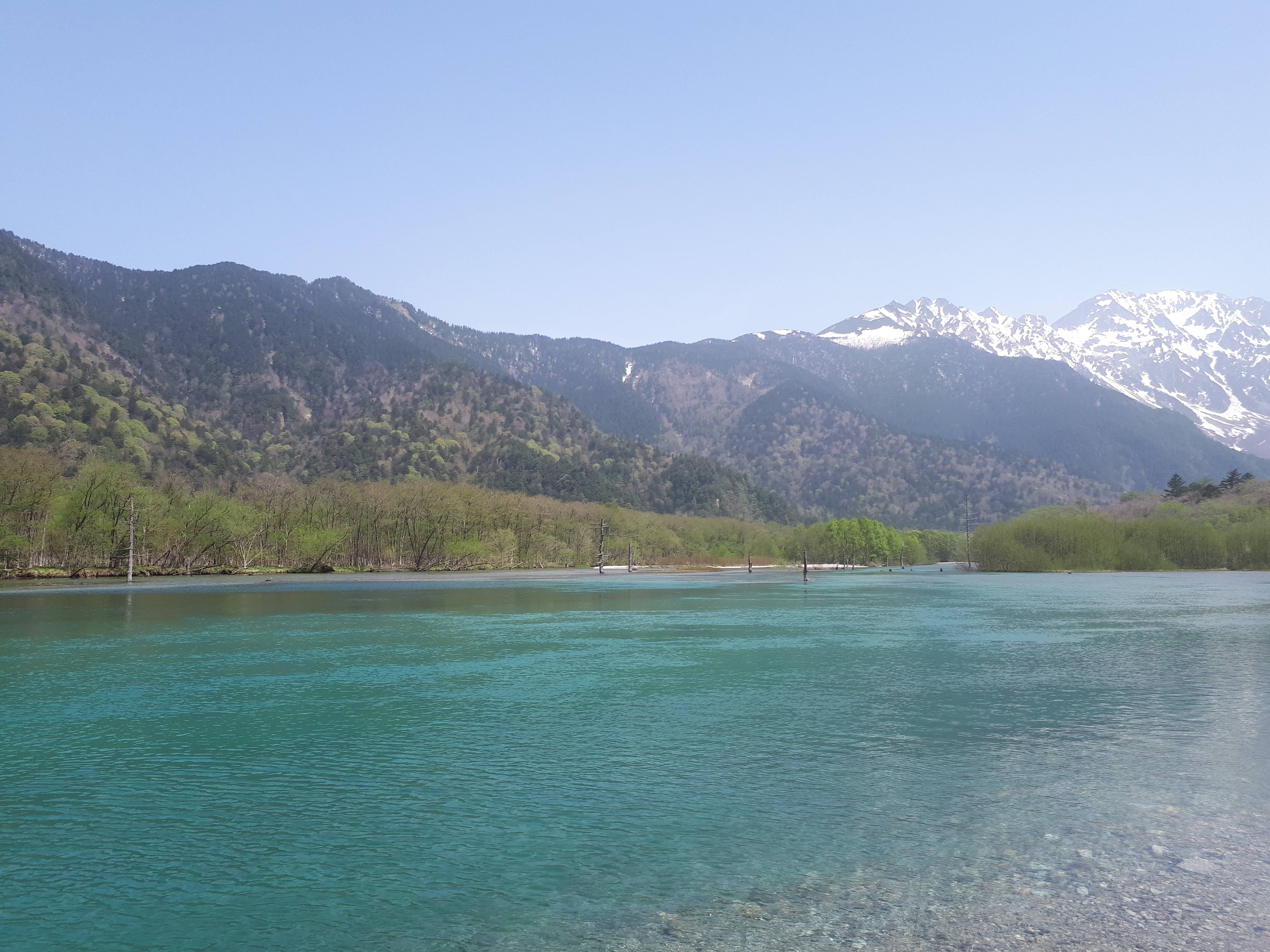



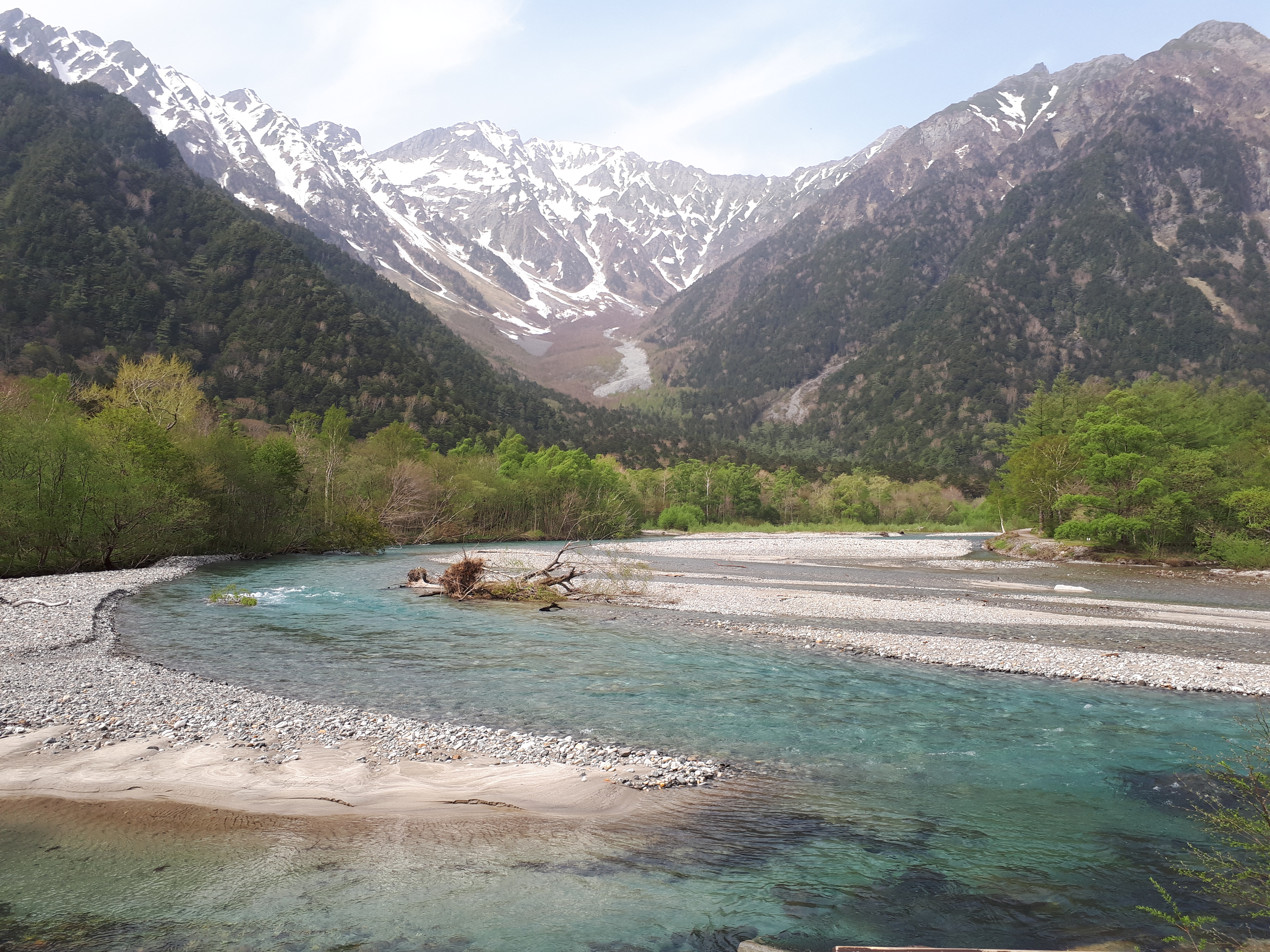
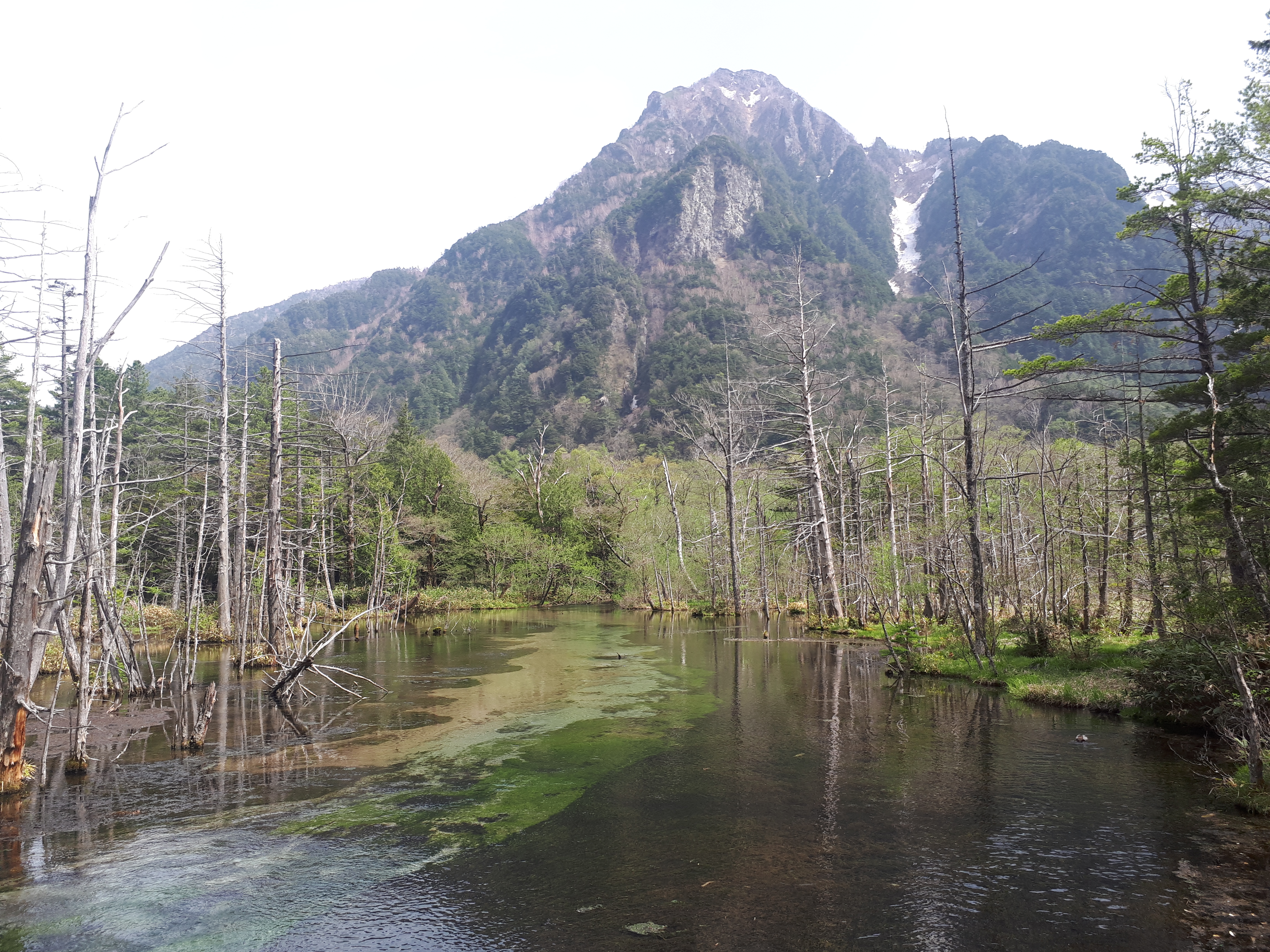
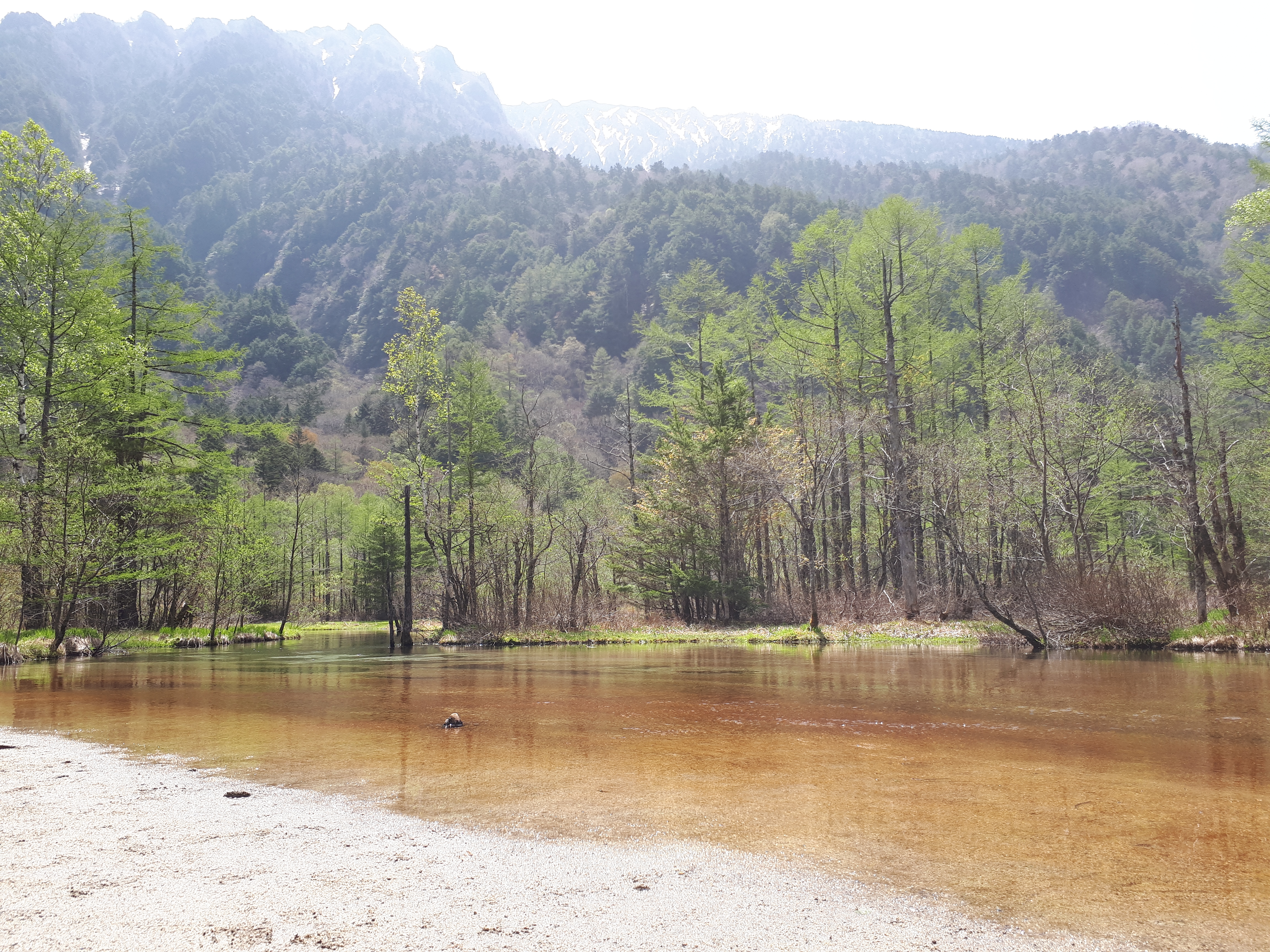

Video: Crystal blue water (12 secs) (Warning: Loud wind) We spent pretty much the whole day there. There were a number of different trails you could walk along, each took between 40 mins to 2 hours. Also, some of the more arduous/taxing routes had fewer fellow tourists; so definitely worth exploring. Second WeekTakayamaThe second week started off with a bus journey away from Kamikochi towards the Edo-period (1603 to 1868) town of Takayama. Takayama was historically separated from the rest of Japan due to its inaccessible location and consequently developed its own distinct culture and architecture. Even the bus journey was pretty
Even the bus journey was pretty
The town center has a very traditional, old-world feel. One of the first things we saw while walking around was a traditional real Japanese wedding taking place; the bride and groom were kind enough to allow us to take a picture: 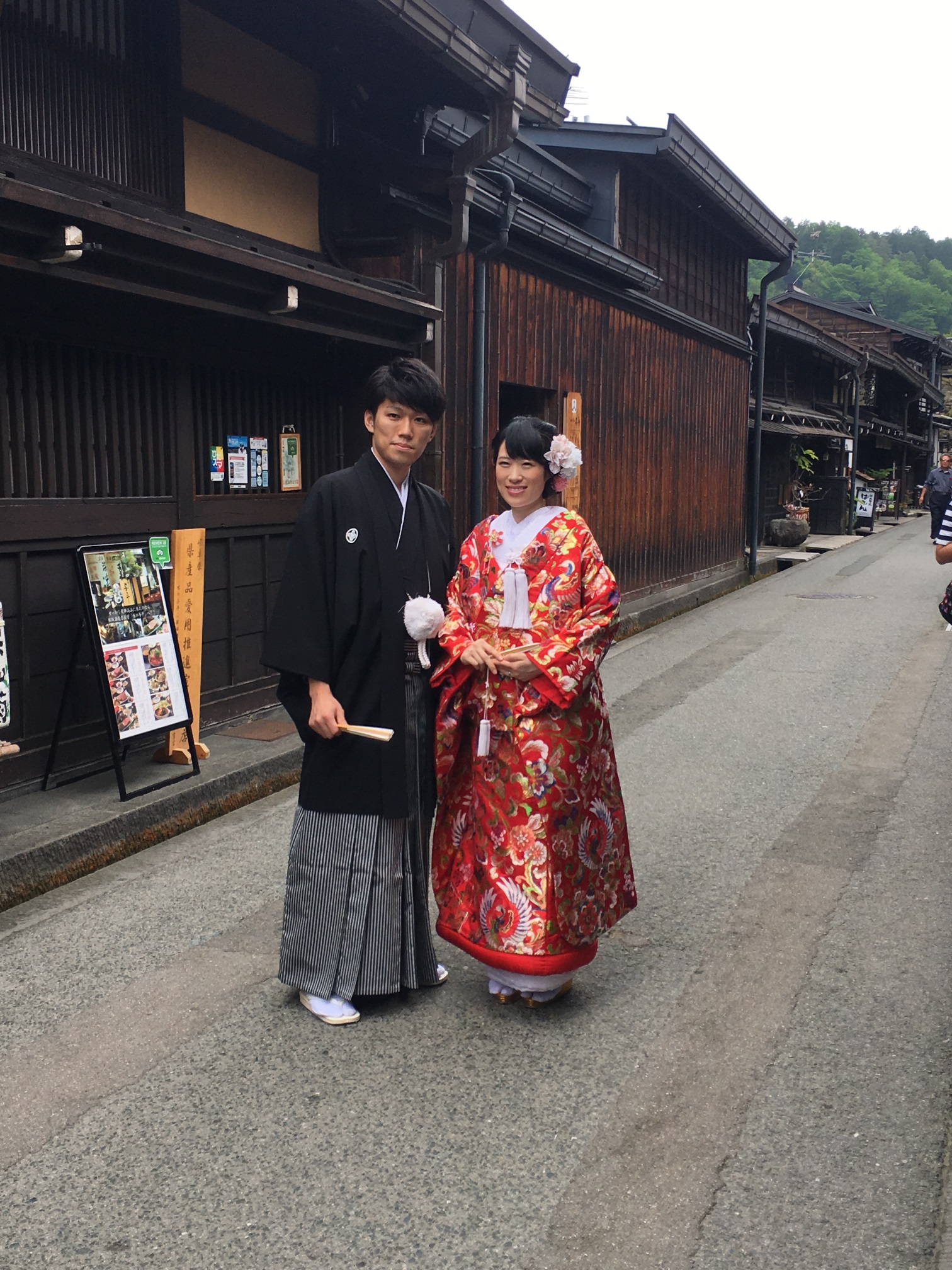 I personally think it beats the hell out of Western wedding garb
I personally think it beats the hell out of Western wedding garb
The town itself was very clearly Japanese but simultaneously had a distinct feel/architecture from anywhere else we'd seen so far. 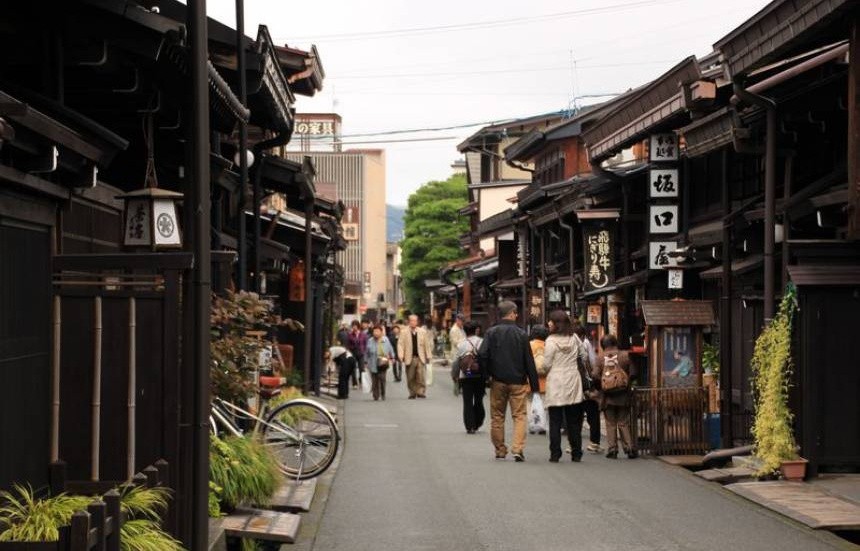 Image courtesy allabout-japan.com
Image courtesy allabout-japan.com

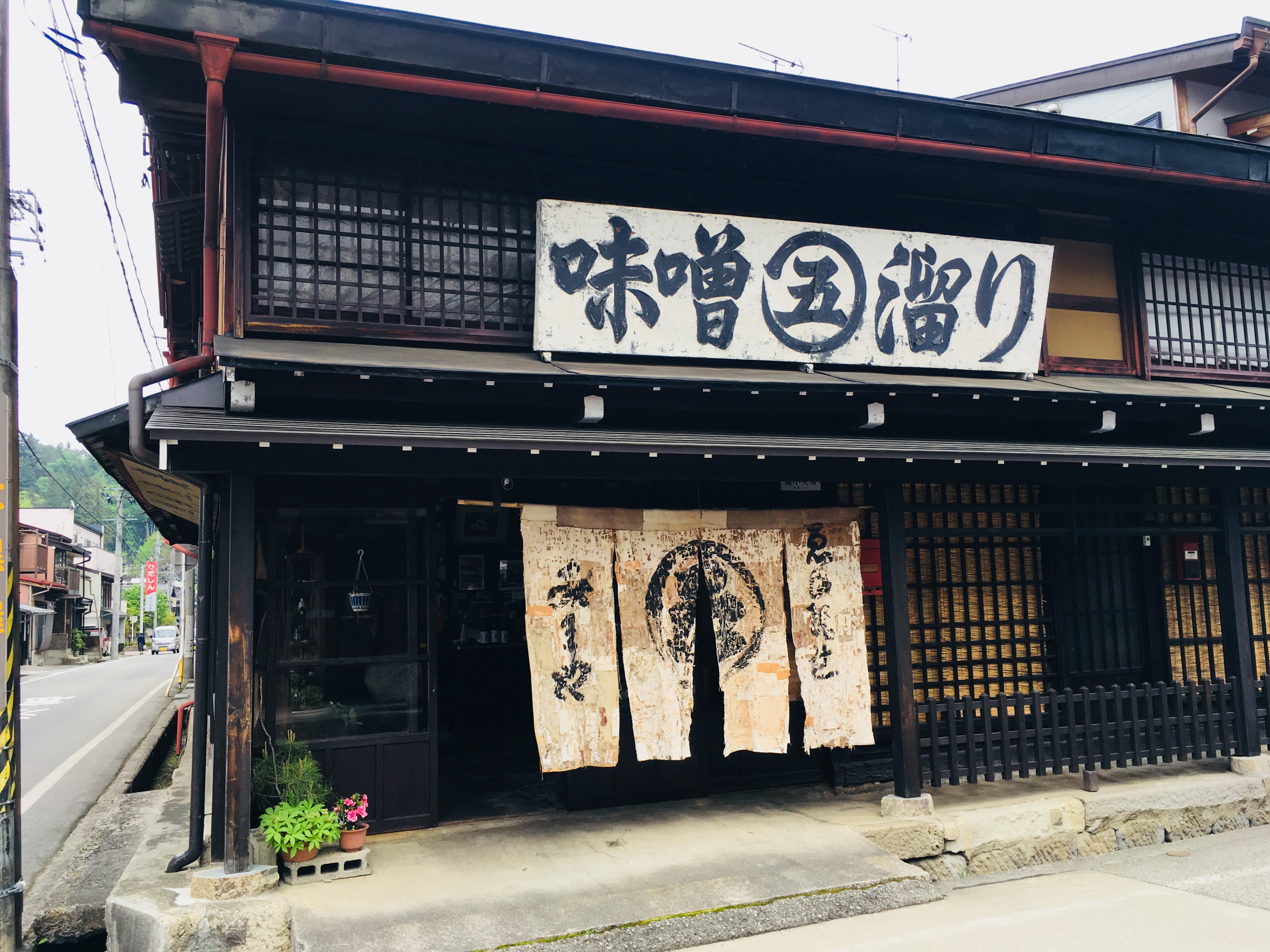

Takayama is also famous for its extremely pure sake (we actually took a tour of a local sake brewery). The breweries are recognisable by the balls of cedar hanging over the entrances. The state of the cedar balls give a clue to passers-by of how long this year's sake has been brewing: A fresh (green) ball indicates a new brew; and they slowly turn brown/dried-out as time elapses. 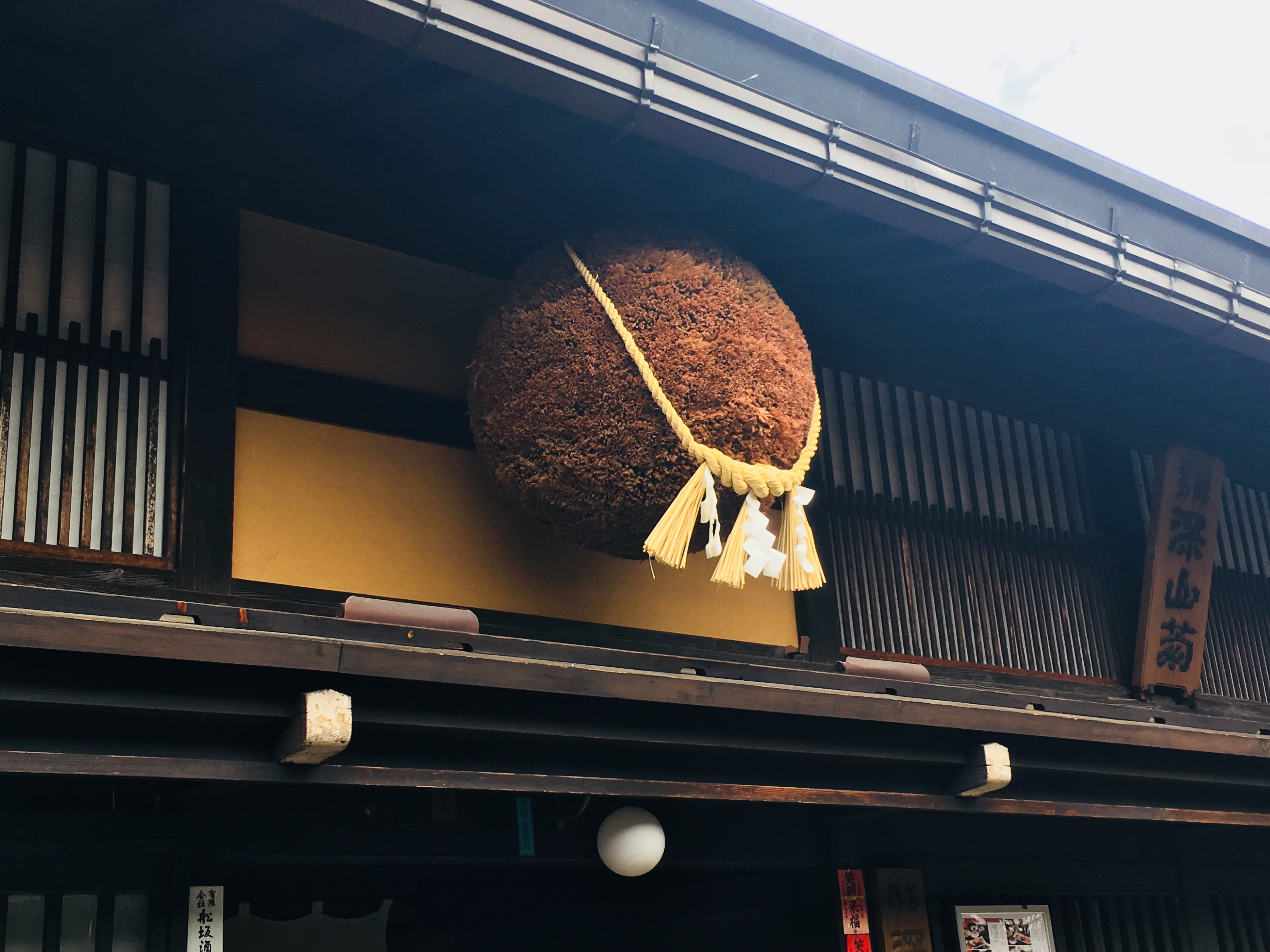
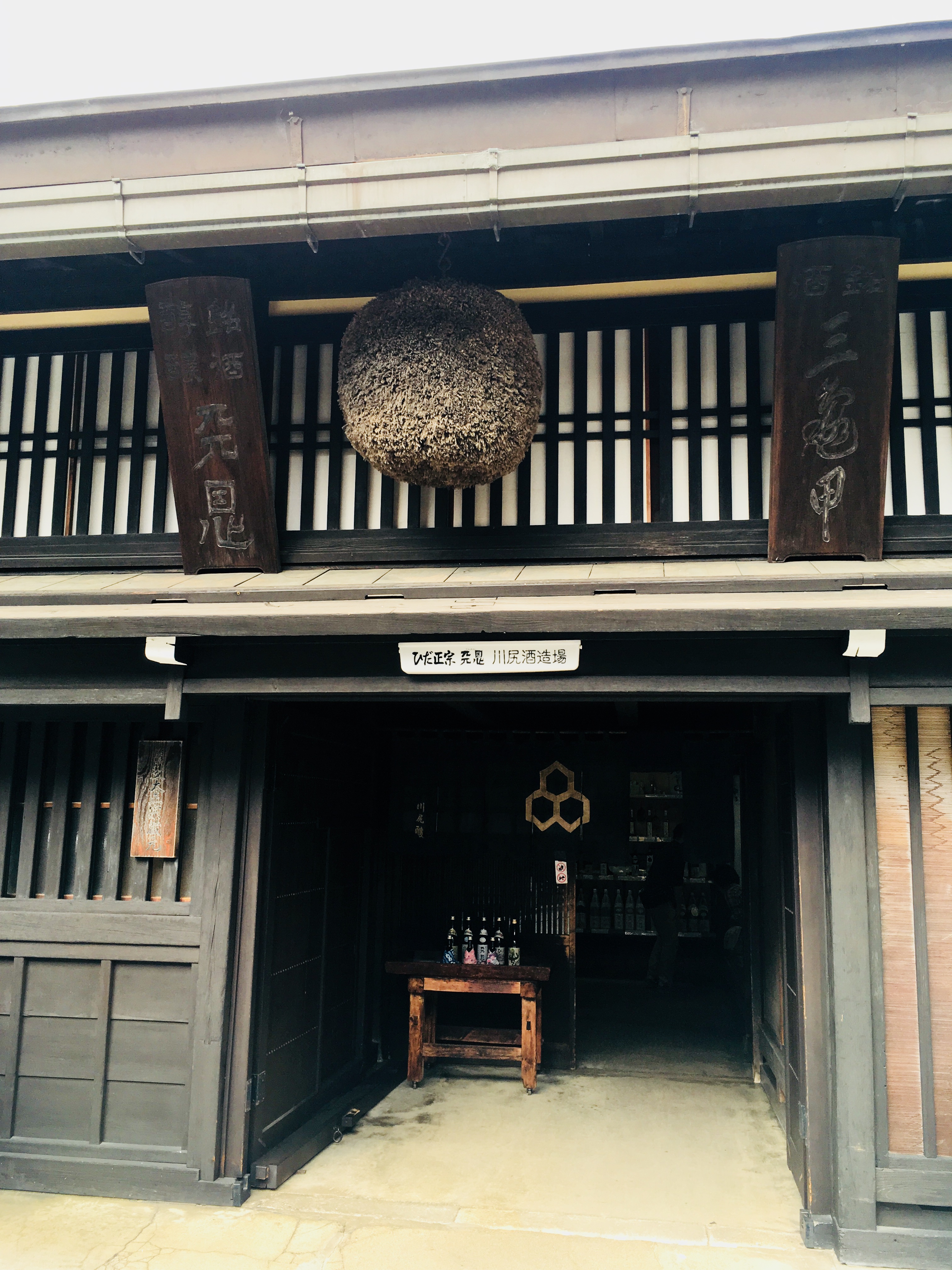
Lunch time was pretty good; there was some excellent black beef curry we had and also some regionally reknowned beef buns to walk around with. The beef curry was really some of the best food I had during the whole trip! 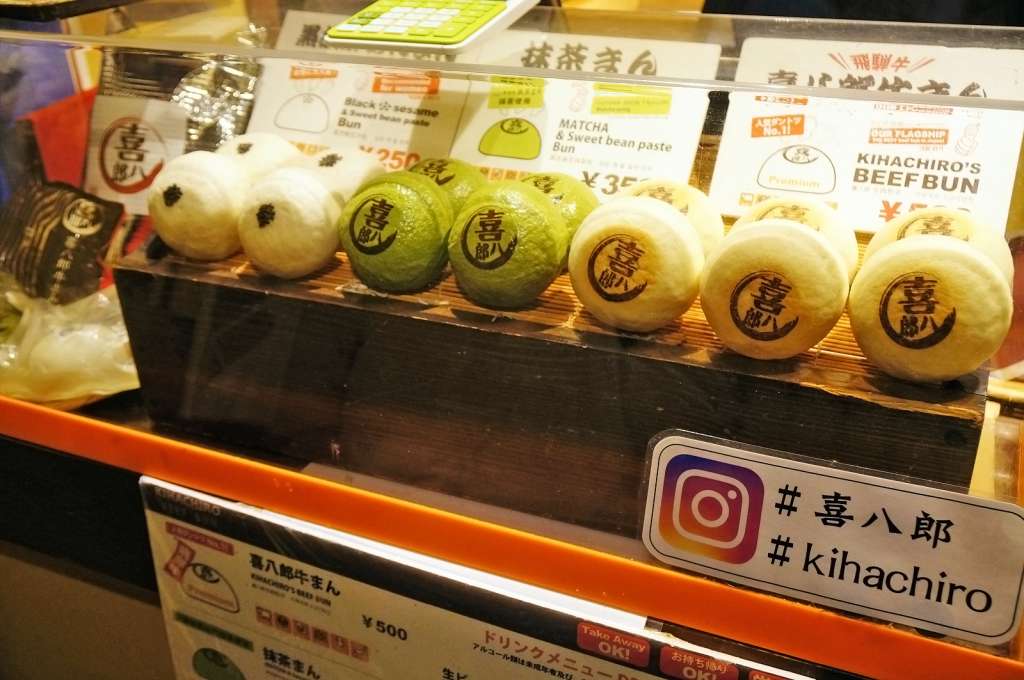 Image courtesy The Poor Traveler
Image courtesy The Poor Traveler
Takayama also has a smattering of temples and religious symbols surrounding the town that we investigated: 

Considering it was a very traditional town I expected it to be a very quiet place at night but there was in fact a small night-time part open. The main streets themselves were closed (though still attractive)... 
...But duck 'round the right corner and you find a little nightlife district: 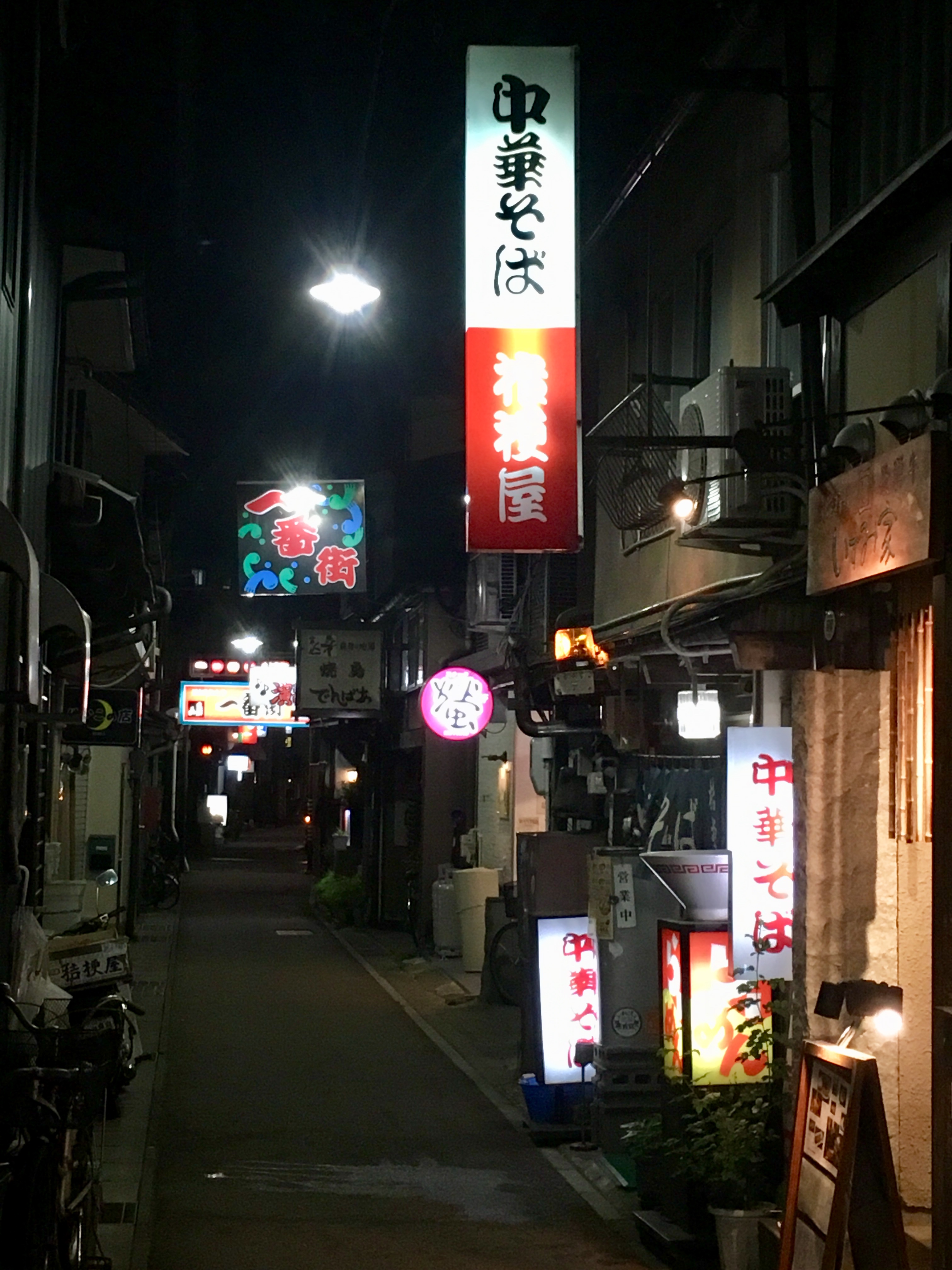

 There were lots of bars; and also this little cork-rifle gallery
There were lots of bars; and also this little cork-rifle gallery
 I won some sweets. My brother won this robot mask. What a dork.
I won some sweets. My brother won this robot mask. What a dork.
KyotoAfter two nights in Takayama it was time to visit Kyoto (or as it's called in Futurama, "the anagram-lover's Tokyo").Kyoto was definitely the most cosmopolitan city we visited during the whole trip. Very fashion and culture-oriented; a lot of the younger generation lived and worked there. There was also a much greater Western influence in Kyoto I would say, with much more individualism on display, more things like cocktail bars and hipster-style shipping-container-bars, and less of the more notorious elements of Japanese work culture. We also walked past a protest at one point. The chants and signs were in Japanese obviously but it appeared to be an anti-war march; adorned with the usual left-wing (dare I say hippie) paraphernalia (LGBT flags, anti-nazi/fascist posters, and of course anti-nuclear-weapons signs). It was just interesting because I don't think that is something you could so easily come across in Tokyo or Osaka. Overall, Kyoto felt a bit like Japan's San Francisco/Brighton/Shoreditch.  There were also quite a few less skyscrapers
There were also quite a few less skyscrapers
 A place where you can go and play with hedgehogs! It wasn't that cheap so I passed up the opportunity this time. :(
A place where you can go and play with hedgehogs! It wasn't that cheap so I passed up the opportunity this time. :(
Kyoto also had the most difficult public transport system to use. The underground in Tokyo was actually pretty simple once you understood it, but Kyoto was a plethora of bus routes:  You couldn't really just wing it in Kyoto, you absolutely had to plan your route before setting-off
You couldn't really just wing it in Kyoto, you absolutely had to plan your route before setting-off
Still, I got my head around it eventually and it was time to go touristing! Kinkaku-jiOne of the most famous Buddhist shrines in Japan, Kinkaku-ji (literally "Temple of the Golden Pavilion") is a pretty breathtaking temple that was our first stop in Kyoto. It's adorned in gold leaf and stands alone over a still body of water. The temple itself is inaccessible to tourists, leaving it in pristine condition.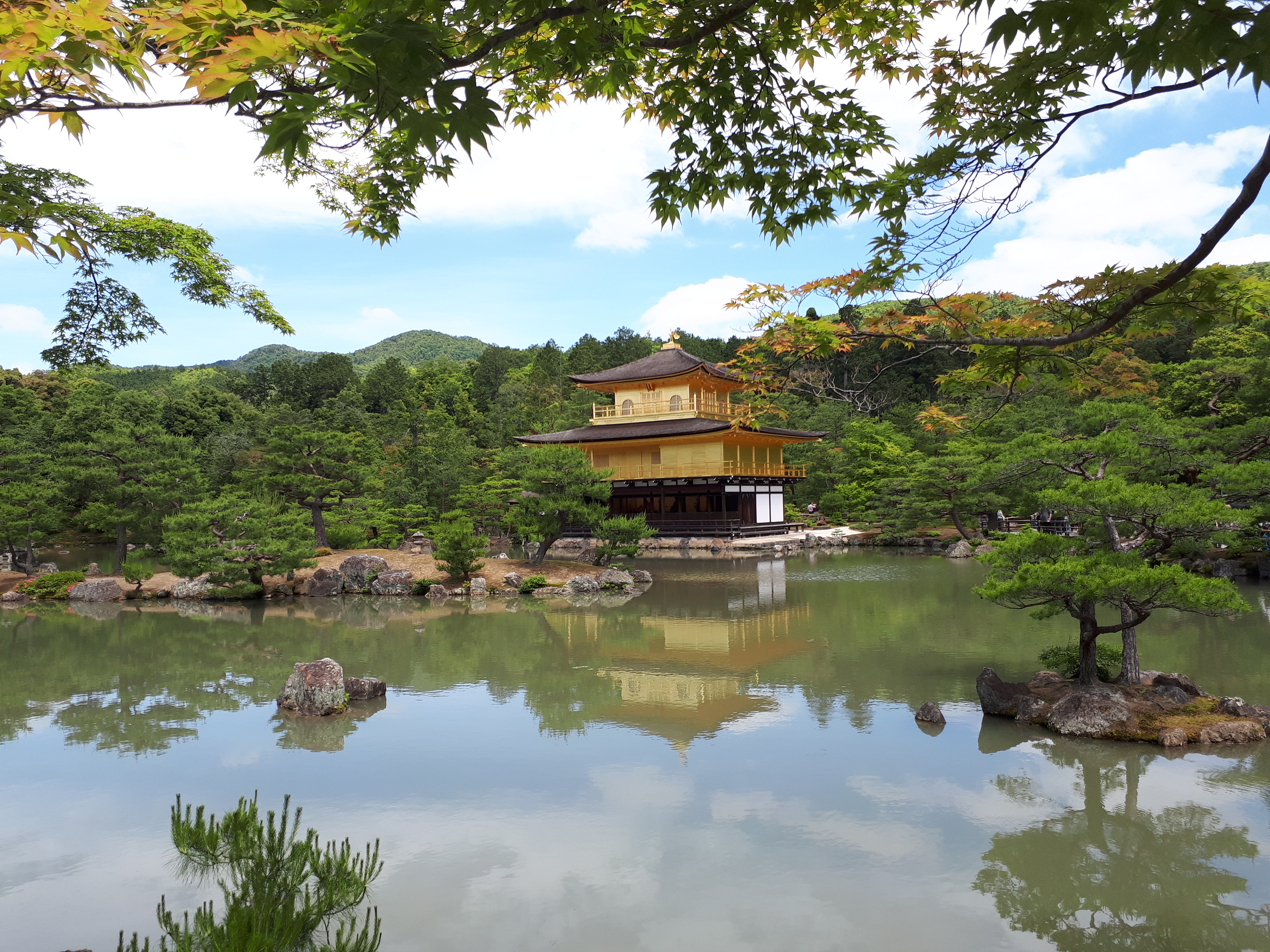
Nijo CastleAlthough Kinkaku-ji is considered the bigger tourist draw, I actually preferred the next historic site we visited, Nijo Castle: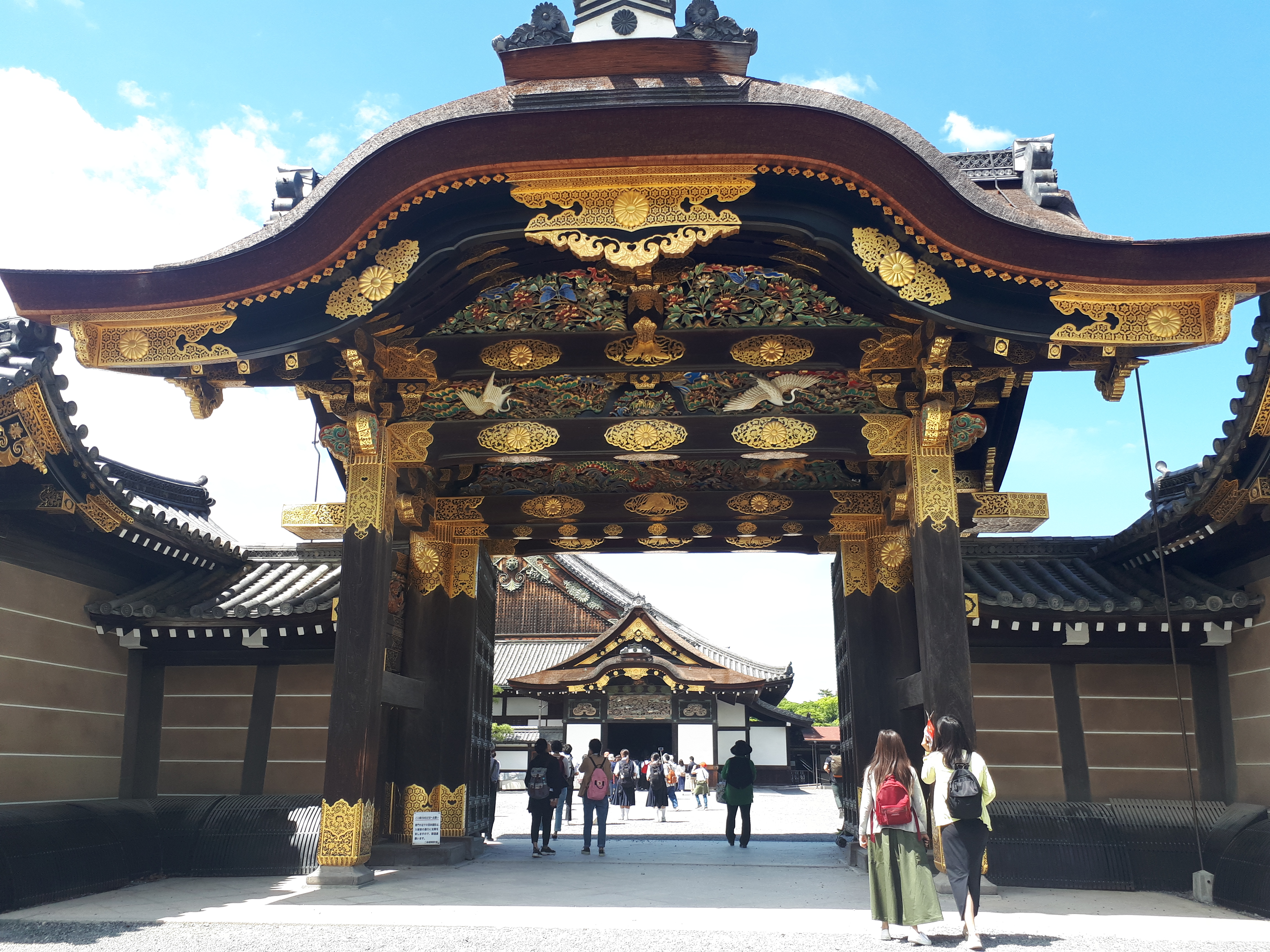 Just the entrance to the castle grounds was amazing. This gate was so ornate.
Just the entrance to the castle grounds was amazing. This gate was so ornate.
The inside of the castle itself was a pretty insightful experience (no pictures permitted, sorry!); seeing places where actual samurai had sat and negotiated the dissolution of military power (the shogunate) in the 1800s; including the way the castle was constructed to make imperial (political) powers always be physically above visitors.  The grounds around the castle were tranquil and a lot less populated than kinkaku-ji
The grounds around the castle were tranquil and a lot less populated than kinkaku-ji
Downtown KyotoApparently (and I didn't know this before) Japan has a small affinity for British aesthetic/style. Obviously, like all countries that have a positive impression of the UK, their idea of Britain is stuck in a somewhat nostalgic snapshot of post-war 'stiff-upper-lip' England and English countryside, but still... It was quite funny/surprising to turn the corner on the 7th floor of a department store and come across this...
 A moderate replication of British fish & chips (on sight, at least)
A moderate replication of British fish & chips (on sight, at least)
There were also pictures strewn about of ye olde English countryside and old historic castles/buildings etc. I looked in to it a bit afterwards (i.e. went on Google) and I suppose there is actually some shared culture between Japan and Britain (the social aspect of politeness, our love of queueing, etc). So it kind of makes sense! Nightlife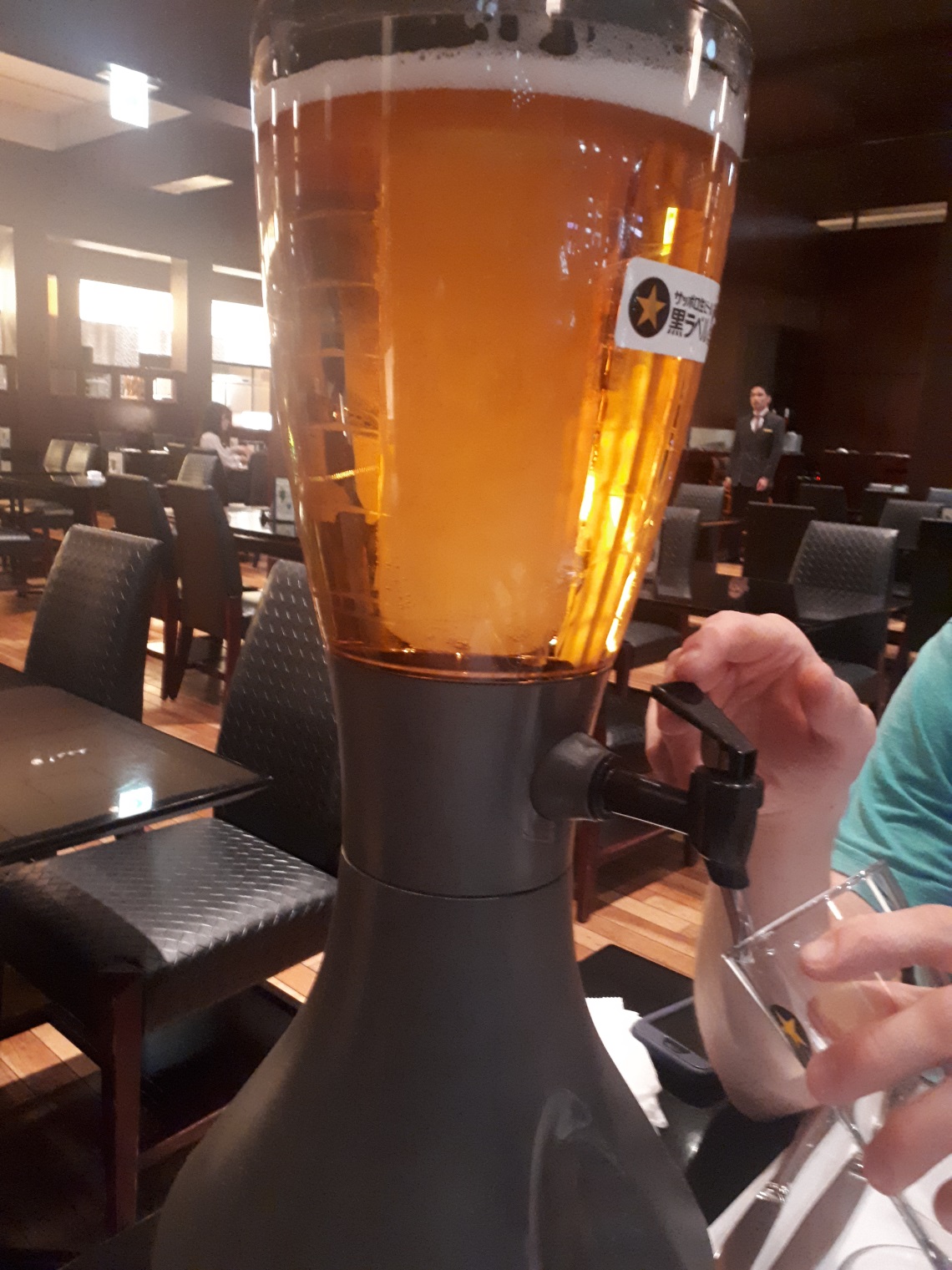
Honestly, I don't remember it that well. Traditional Japanese Dwelling (Machiya)Back to the daytime... Earlier on in Kyoto we had booked a tour around a traditional Kyoto town house (a Machiya); and were also to take part in a traditional tea ceremony there while wearing kimonos.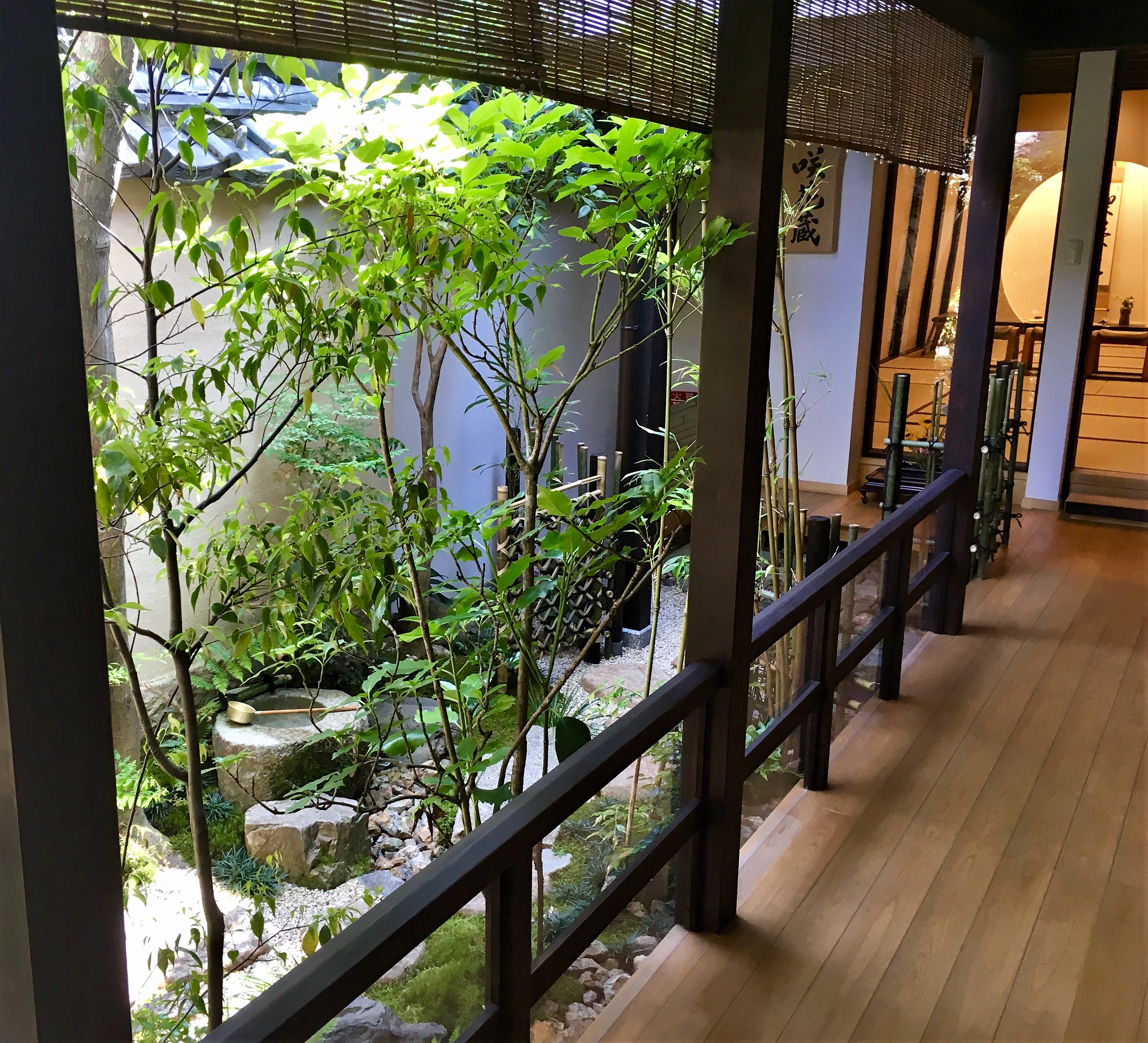 This open-air mini-garden/water-feature was in the middle of the house, separating the ceremony room from the kitchen
This open-air mini-garden/water-feature was in the middle of the house, separating the ceremony room from the kitchen
While there we were shown how to correctly wear a kimono (there's a hell of a lot to it! Multiple undergarments, particular ways the belt should be worn/tied, etc.); and given a samurai sword to complete the look! 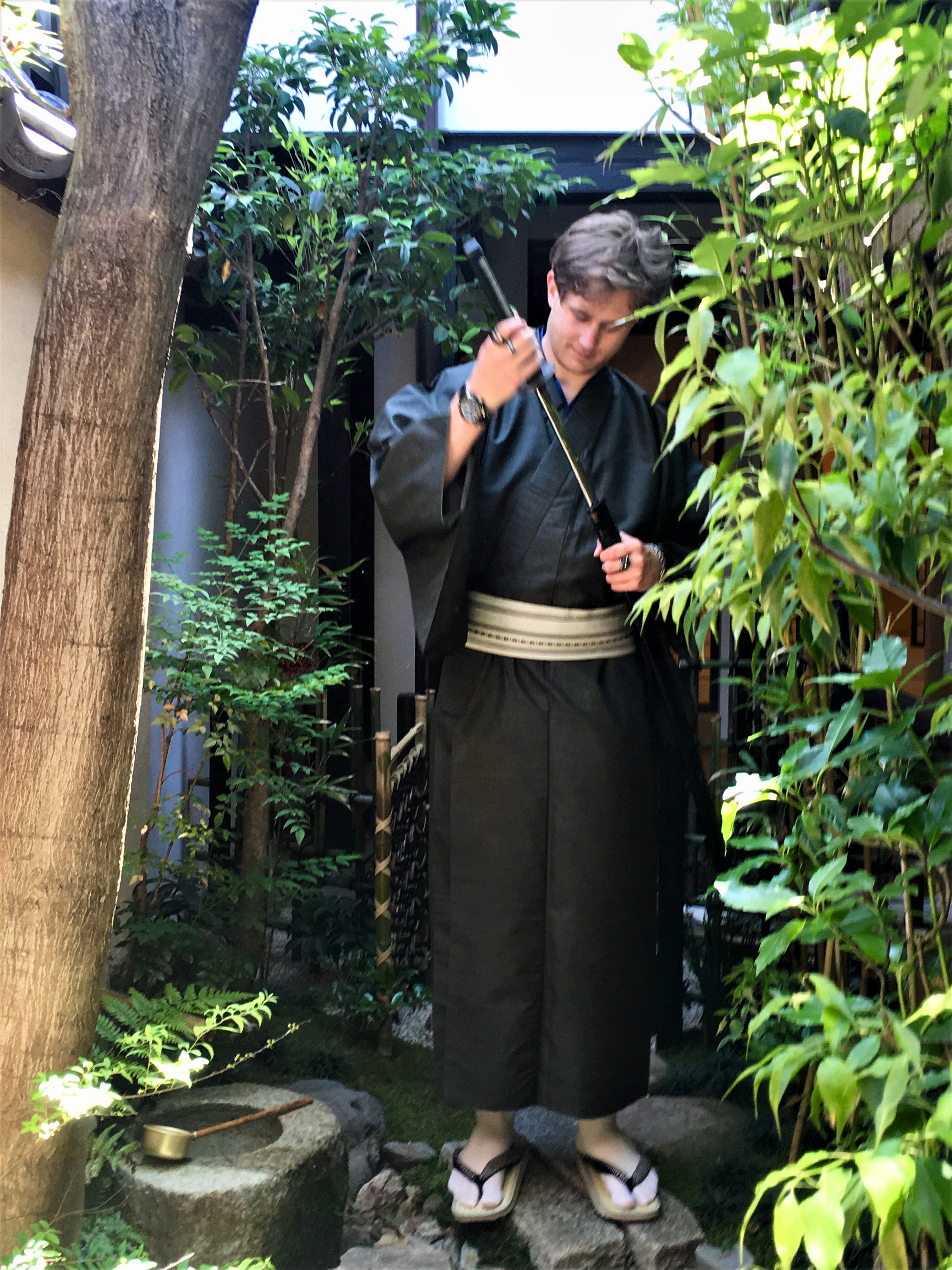 Some goofy nerd mishandling a samurai sword
Some goofy nerd mishandling a samurai sword
Later on we had the tea ceremony which was actually pretty interesting (and restful). Apparently the tea ceremonies were started as a way to get samurai and other gentry/nobility to sit amongst the common citizens in tea rooms. People who were armed with swords were expected to disarm before entering the rooms; and all participants sat alongside each other and all ceremony protocols had to be observed equally by all members. The tea was made in front of us. It was very strong matcha tea (Japanese green tea); pretty fuckin' bitter to be honest. There are supposedly quite a few health benefits from drinking matcha (ranging from being anti-carcinogenic to aiding weight-loss). Personally I doubt a lot of it is true, but on the other hand things that taste like that are usually good for you in some way, so who knows. Finally after the tea ceremony we were shown how to make origami. We could choose to make one origami object from a selection including jumping frogs, paper cranes, etc... Or a cube. I know I'm irredeemably engineer-brained but that was the most curious choice to me: How could paper be folded to make a cube? Some instructions later, I could confirm that it was indeed possible! 
Fushimi InariOn the next day we set off to go on quite a long hike up a small mountain (233m, Mount Inari) to see a small shrine on the top. The thing is, the shrine itself is pretty unremarkable... But the journey is anything but: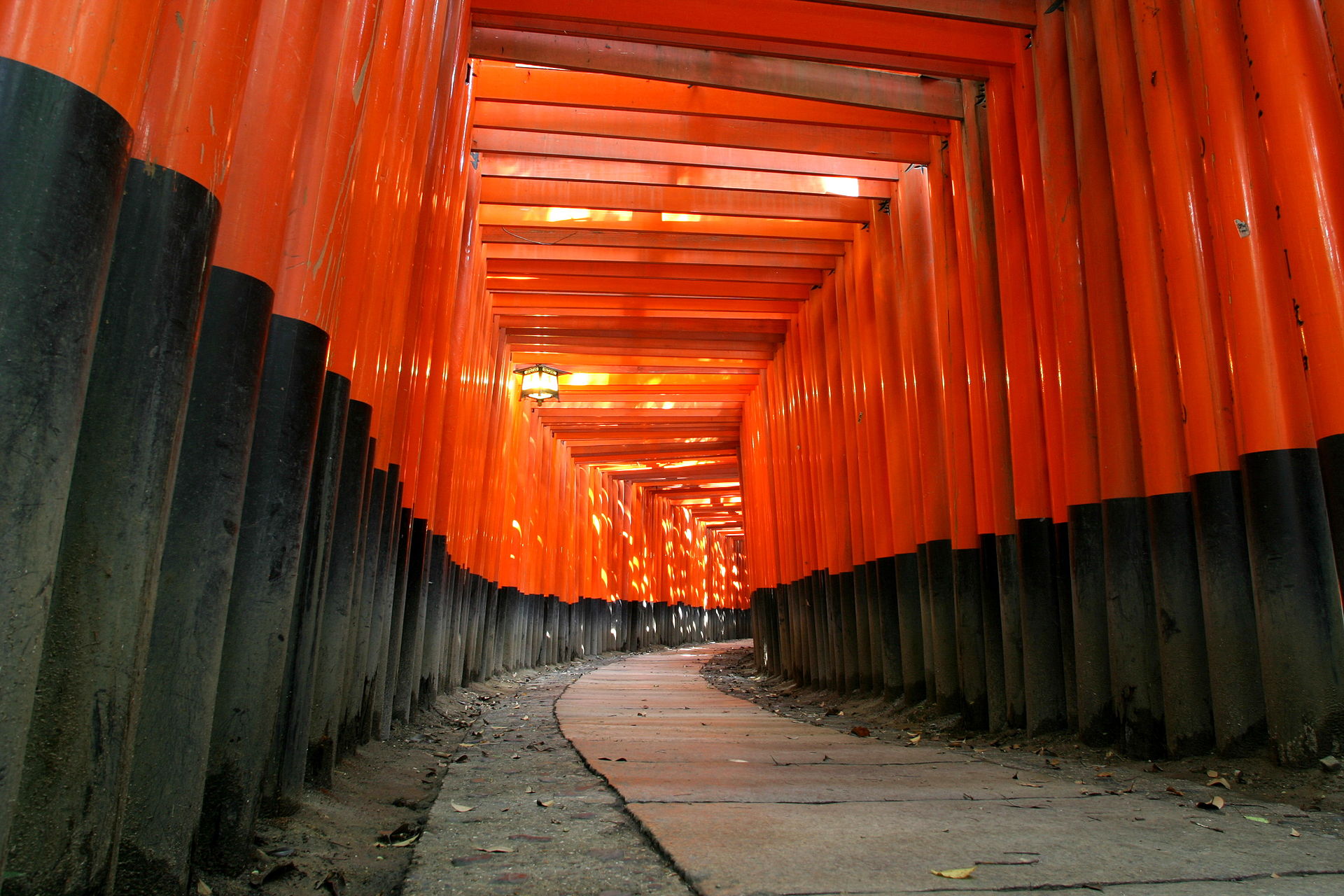 Courtesy Wikipedia
Courtesy Wikipedia
The entire route to the top is adorned with these small red torii gates. There are over 1000 of them, each one has been donated by a Japanese business. Furthermore, the trail isn't just "1000 gates" (which would admittedly get a bit boring); but is interspersed with small 'sub-shrines' along the way: 
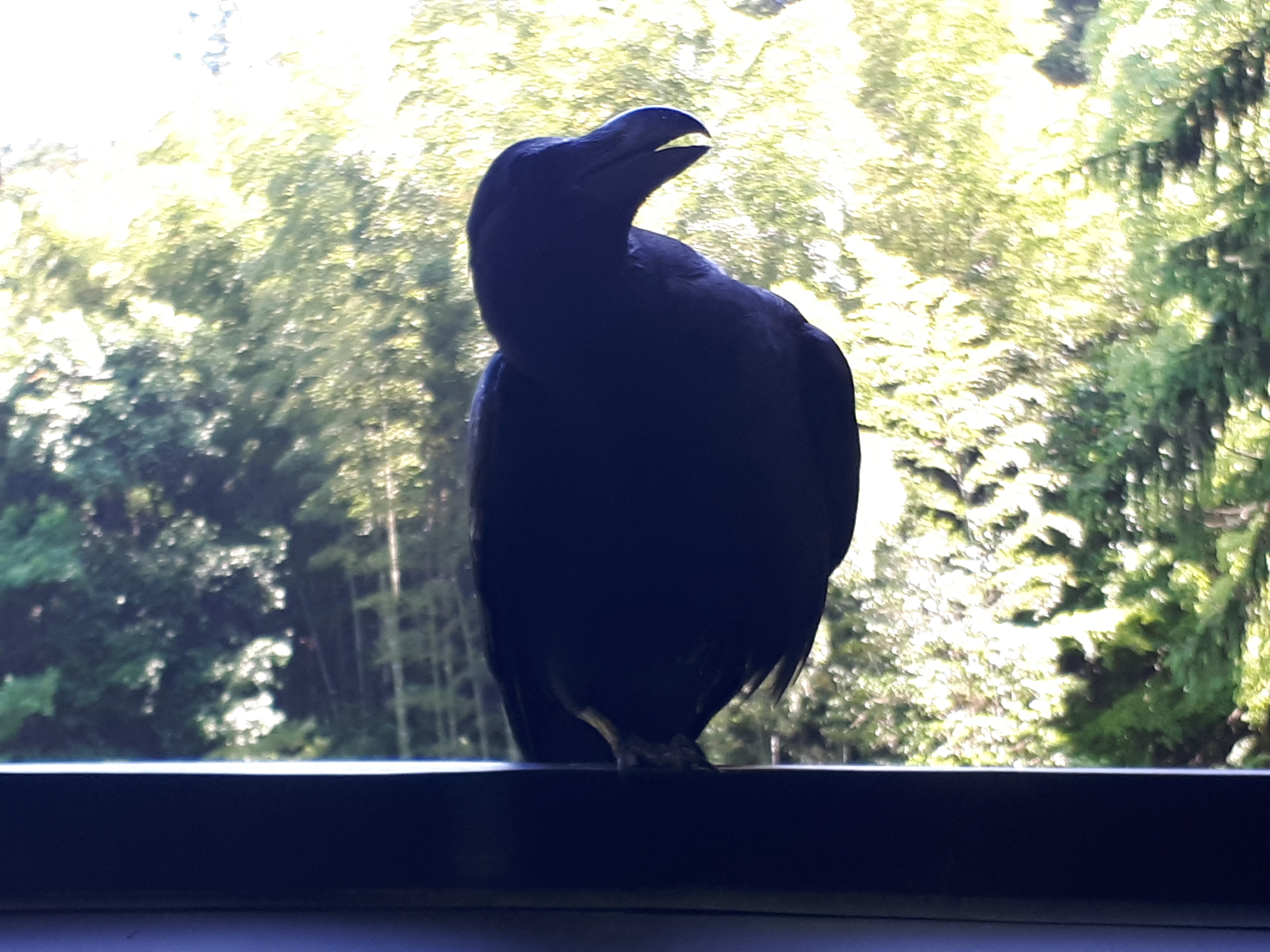 I also made a new friend along the way; he was looking to steal food. Happy to let me get very close (there's no window there)! Didn't quote anything at me though. :(
I also made a new friend along the way; he was looking to steal food. Happy to let me get very close (there's no window there)! Didn't quote anything at me though. :(
Another minor nice thing about this particular shrine was that 233m isn't high enough to attract the hardcore adventure crowd but is high enough to weed out the main bulk of tourists as you get higher. Which meant when we reached the zenith we had peace and space to film what Kyoto looks like from high up: Video: Kyoto from Mt. Inari (6 secs) There was also a smattering of wild cats whose tails you had to avoid along the way: 
And of course, some cool artwork/sculptures/etc: 

Kiyomizu-deraKyoto was probably my least favourite city on the whole trip (overall it oddly enough felt too Western, and in my opinion lacked much character).However, at one point we visited Kiyomizu-dera, a temple in the eastern part of the city. And without a doubt for me it was the most beautiful and stunning religious site I saw during the whole trip. It's built raised up on 'stilts' that lift it up over the treeline on the side of a hill; and the entire place was built without nails or joiners in 1633.  Image taken from Travel Caffeine
Image taken from Travel Caffeine
A waterfall runs through the temple grounds, filling the air with a sound of rushing water. You can literally look out across the city or the surrounding hills, listening to rushing water while inhaling incense. The interior of the temple is somber and modest, with natural wood and dark lighting: 
When we were there it was a sunny midday and a fairly large number of people were visiting. I would have killed to be there during a torrential rain, with it empty, just taking in the surroundings. It's almost worth revisiting Japan just for that, I figure. Maybe in the winter.  The view towards the hills
The view towards the hills
 More towards Kyoto, to the right
More towards Kyoto, to the right
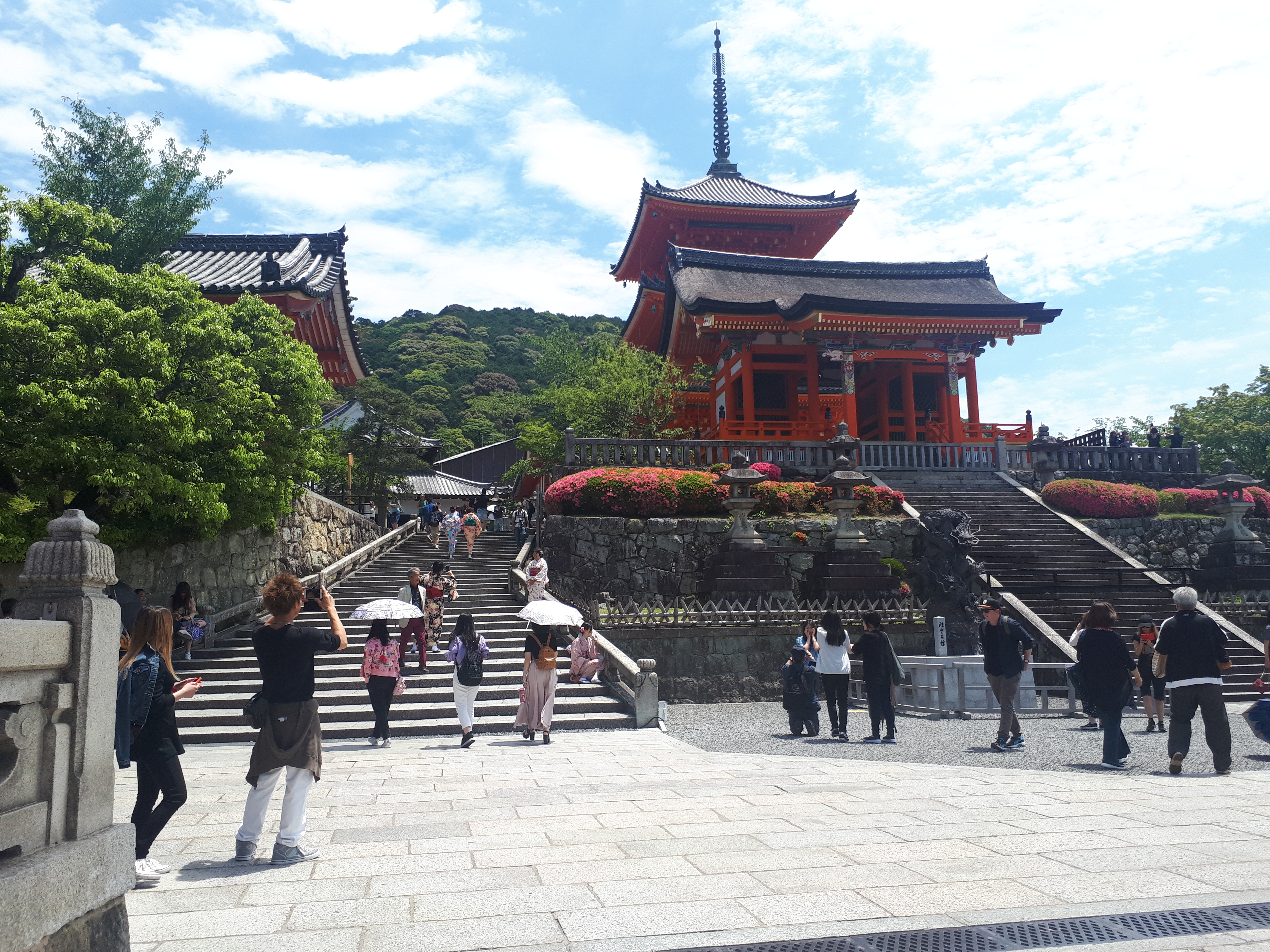 The approach to the temple itself
The approach to the temple itself
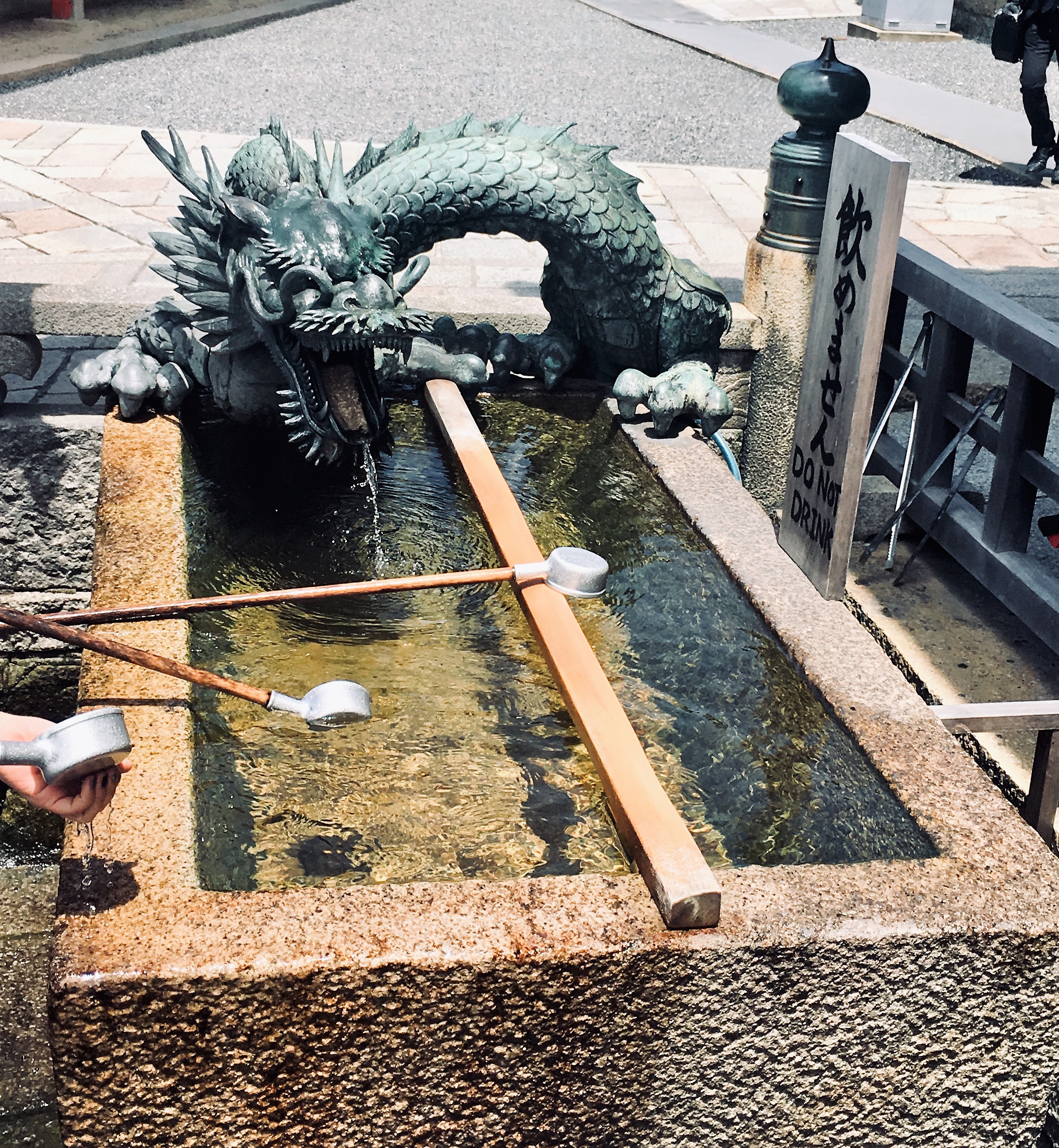 Dragons apparently dribble a lot when they're not spitting fire
Dragons apparently dribble a lot when they're not spitting fire
 A dragon triple-threat
A dragon triple-threat
 Technically not a selfie! I could have sat here and watched the water trickling through for quite some time.
Technically not a selfie! I could have sat here and watched the water trickling through for quite some time.
It's hard to demonstrate how great the temple is with a few pictures unfortunately. All I can say is that if you're ever in Kyoto, definitely go see it. Third WeekHiroshimaThe third week began on a more somber tone as we were bound for Hiroshima; a world-famous city for the wrong reasons. Interestingly enough, the weather when we arrived (that had so far been bright sunshine) seemed to reflect the change in mood: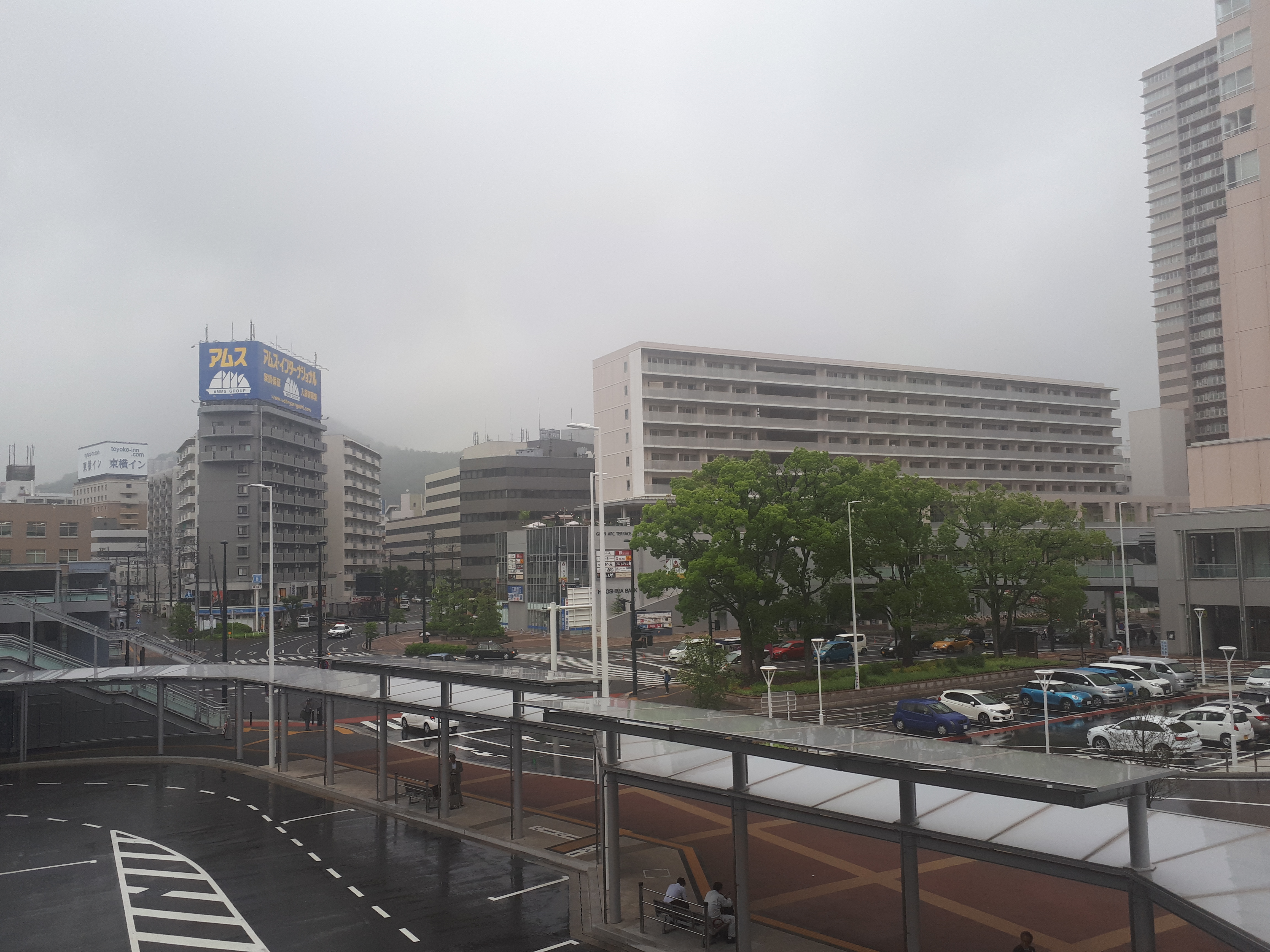 The city lacks a lot of the traditional charm of other parts of Japan; because of course none of the buildings are more than 60 years old
The city lacks a lot of the traditional charm of other parts of Japan; because of course none of the buildings are more than 60 years old
 The backdrop of misty hills/mountains is still very Japanese however
The backdrop of misty hills/mountains is still very Japanese however
First stop was Hiroshima castle, a faithful reconstruction of a castle that had previously existed in Hiroshima since the late 1500s.  Image courtesy of hisgo.com; the weather on the day we visited was too foggy to get a decent picture
Image courtesy of hisgo.com; the weather on the day we visited was too foggy to get a decent picture
I'm gonna be honest, it wasn't that interesting. It probably didn't help that I was a bit castle'd-out by this point too, haha. Plus inside they had a really rigorous tour line that I dared to cross (despite there being no one else there) and the guard told me off. So I did it anyway when he wasn't looking. ;) Peace MemorialOf course the main thing we were going to see in Hiroshima was the peace memorial/peace park. The memorial park is located very close to the hypocentre of the bomb (the hypocentre is the ground-level point directly underneath the centre of the detonation).The park itself is very neat and pretty: 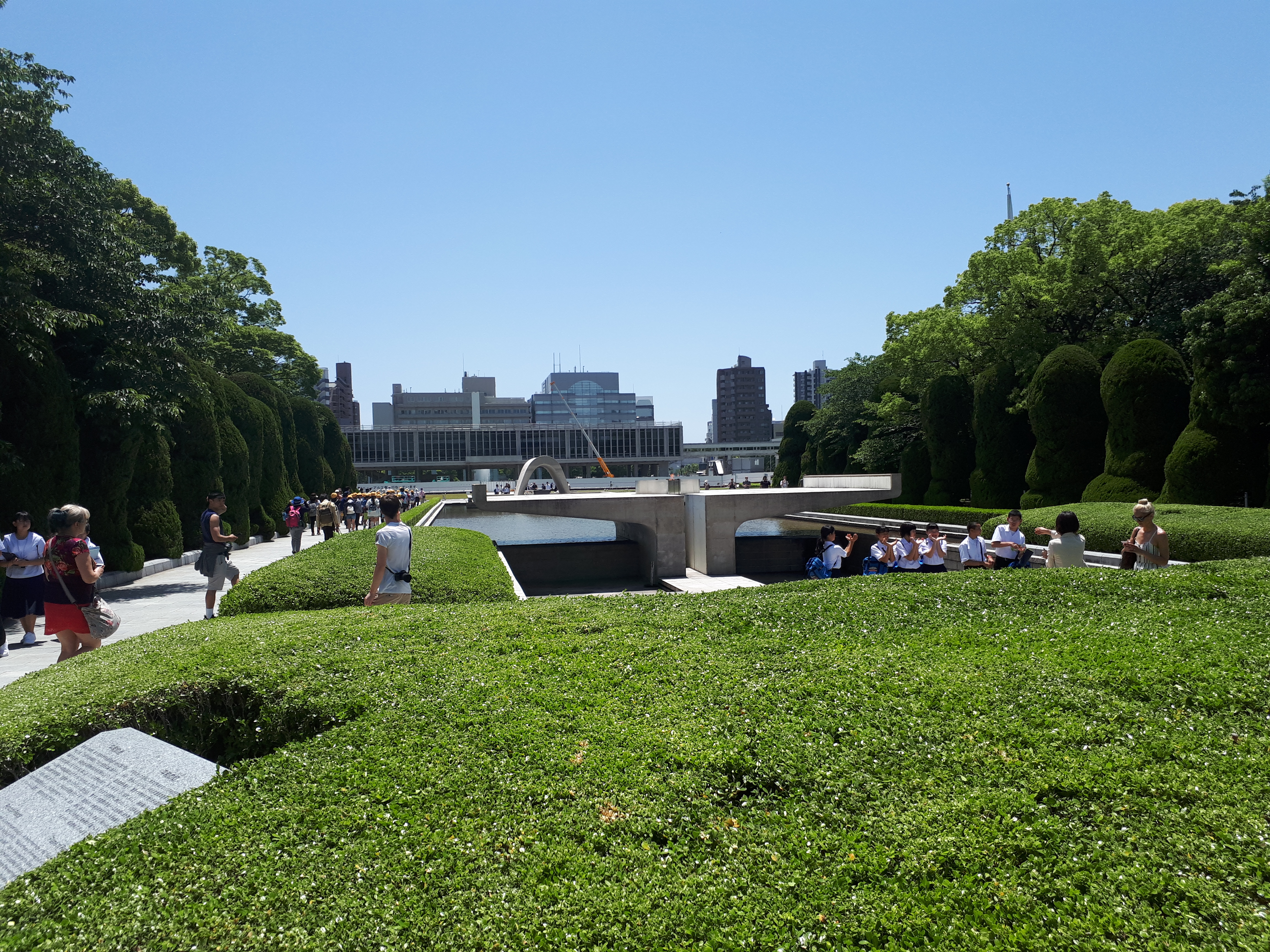
Looking through the archway in the centre from the other side you can see the one remaining building closest to the hypocentre that was still standing in 1945: 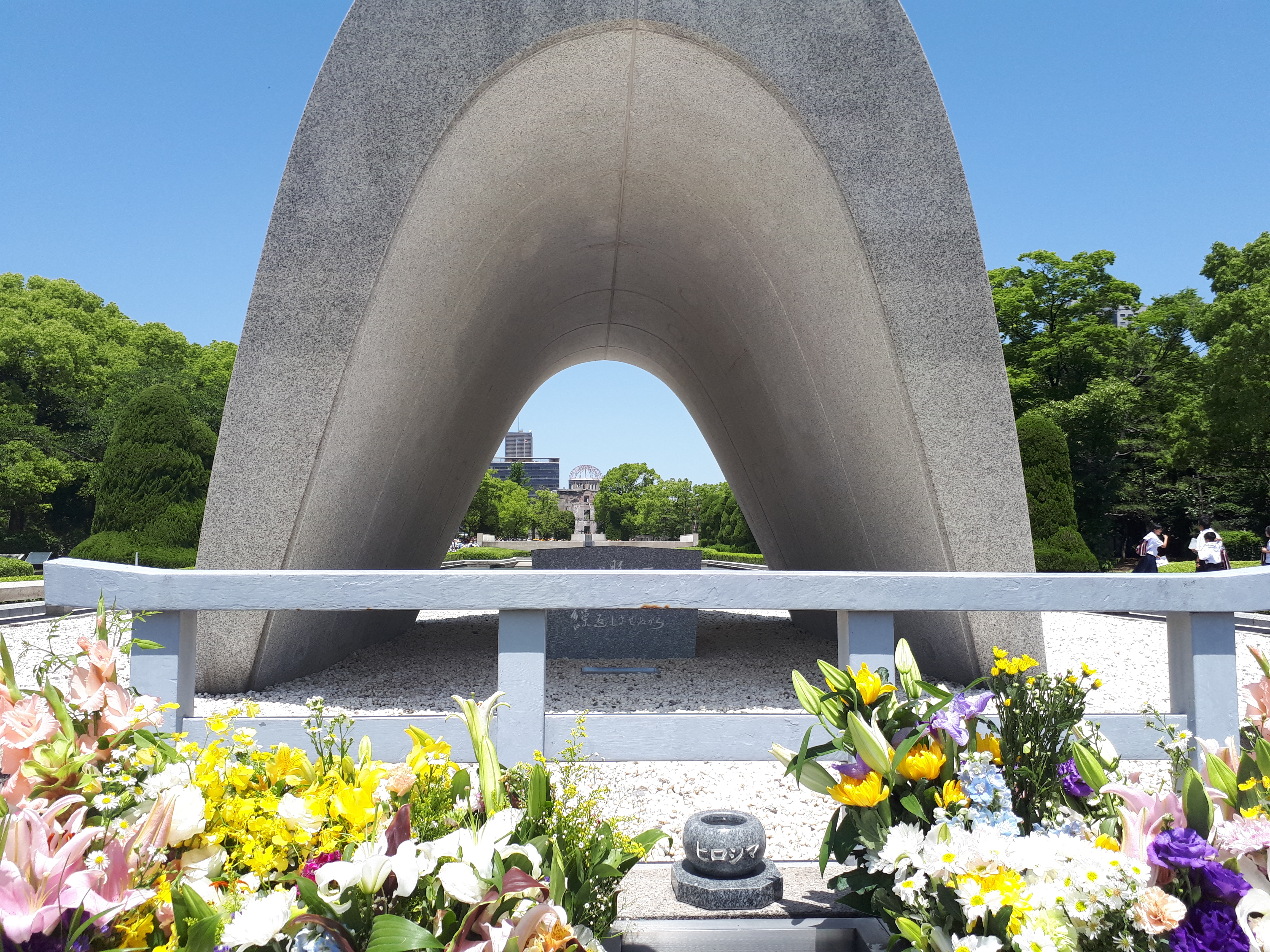
The building itself has been left in the exact same state it was left immediately after the bomb hit 73 years ago: 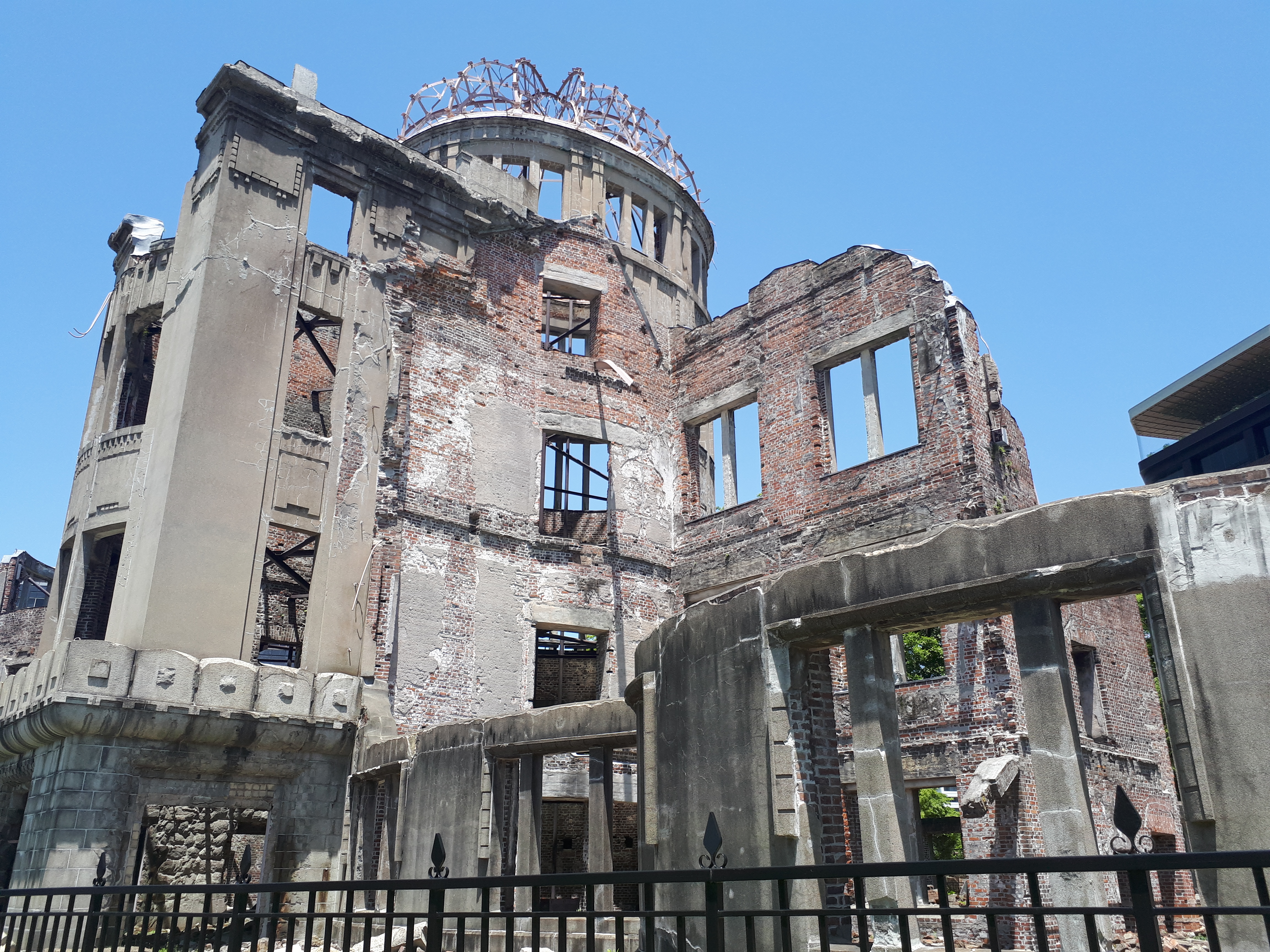
It had remained standing simply because the bomb detonated almost directly above; so all the overpressure was directed down in to the foundations rather than against the walls. There was also an attached museum that we went in to. The museum had some incredible first-hand accounts of people (still living, mostly schoolchildren) who had been in Hiroshima at the time the bomb hit. They described thousands of people with their skin completely burned running in to the river to cool off and die. The ones who weren't immediately killed often found their families and died a few days later from radiation poisoning. Parents had to watch their children slowly get weaker with their hair falling out. Others were blown back in to walls and buildings by the blast and crippled. Inside the museum there was also this clock: 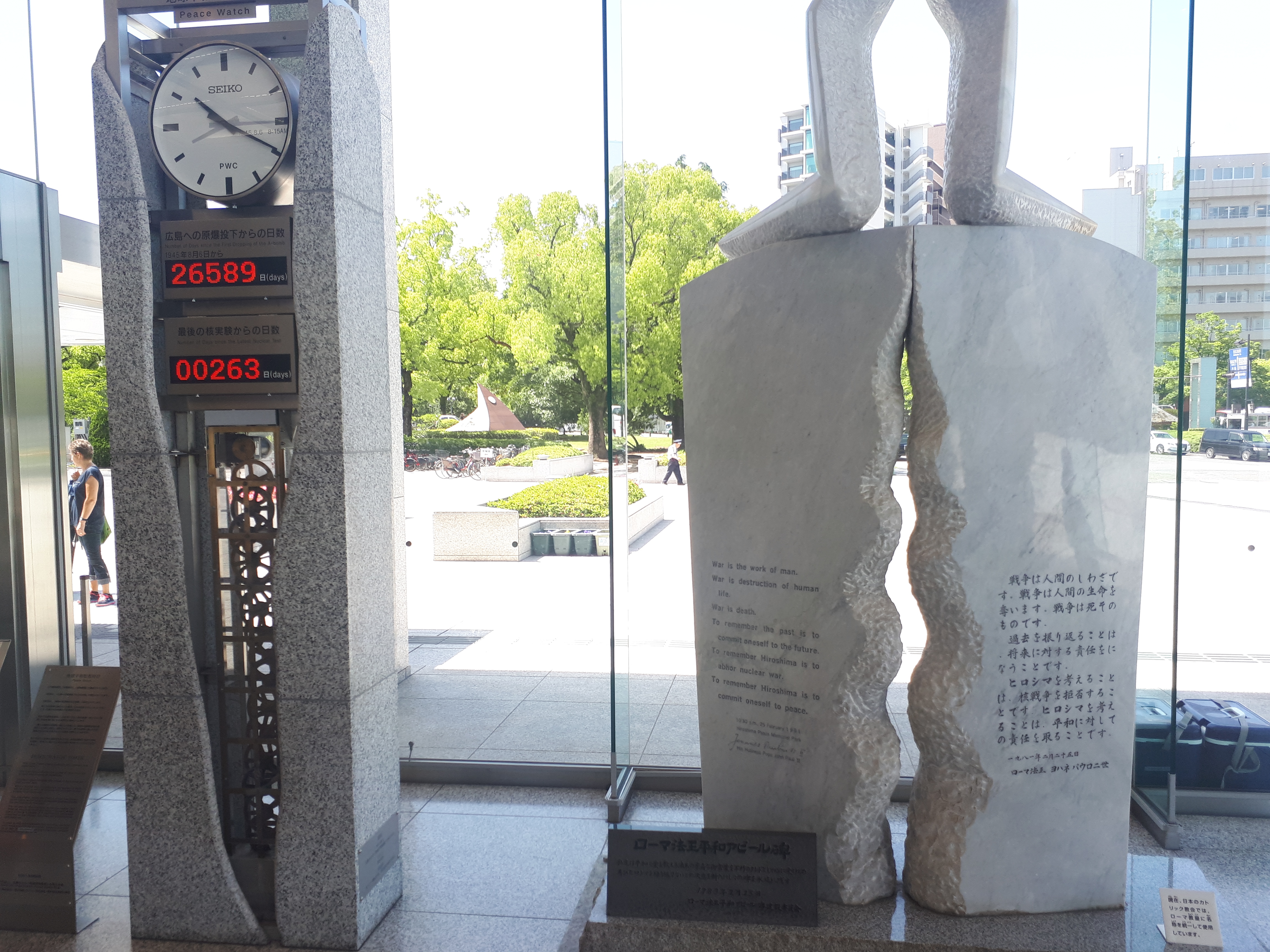
The upper readout is the number of days since Hiroshima was bombed. The lower readout is the number of days since the last worldwide atomic bomb test. The cog at the top rotates at 100 RPM, but speeds up whenever the world atomic threat is considered to be at a heightened state. Each subsequent cog is connected to the previous in a logarithmic gear ratio. If the final cog completes one full rotation, the clock will self-destruct, signifying the imminent mass-destruction of the world. 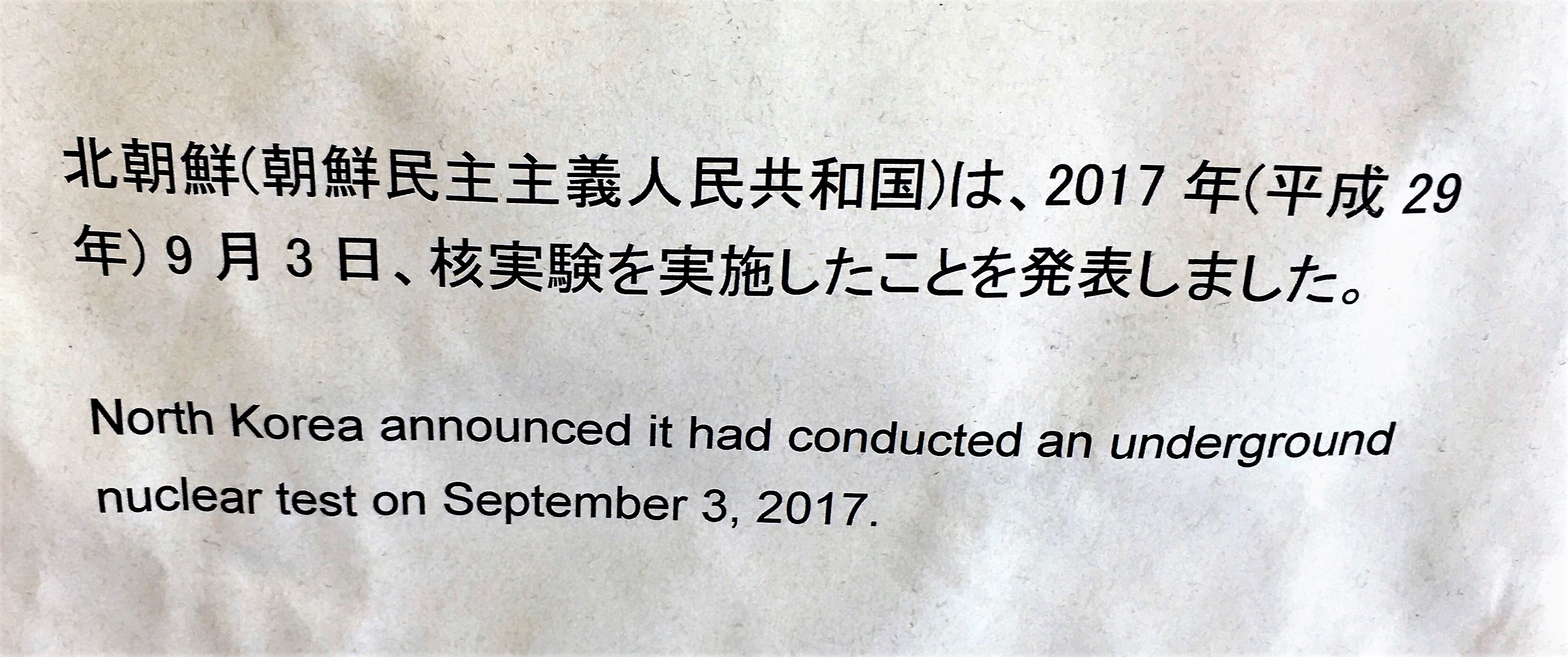 Japan is also quite concerned about North Korea
Japan is also quite concerned about North Korea
The overall sentiment about the bomb in Japan is almost universally that it was an inexcusable transgression by the USA. This is different to attitudes in the West which I find are usually divided amongst those who agree that it was unacceptable, and those who think it probably stopped what would have otherwise been a long and drawn-out conflict with Japan. Having seen the memorial park and all the stories and evidence for myself I'm still undecided. I think both points of view have merit. The only thing that I can be sure of is that I hope the world never sees an atomic attack ever again. NightlifeLater on we took a stroll around Hiroshima to get some food and chill out.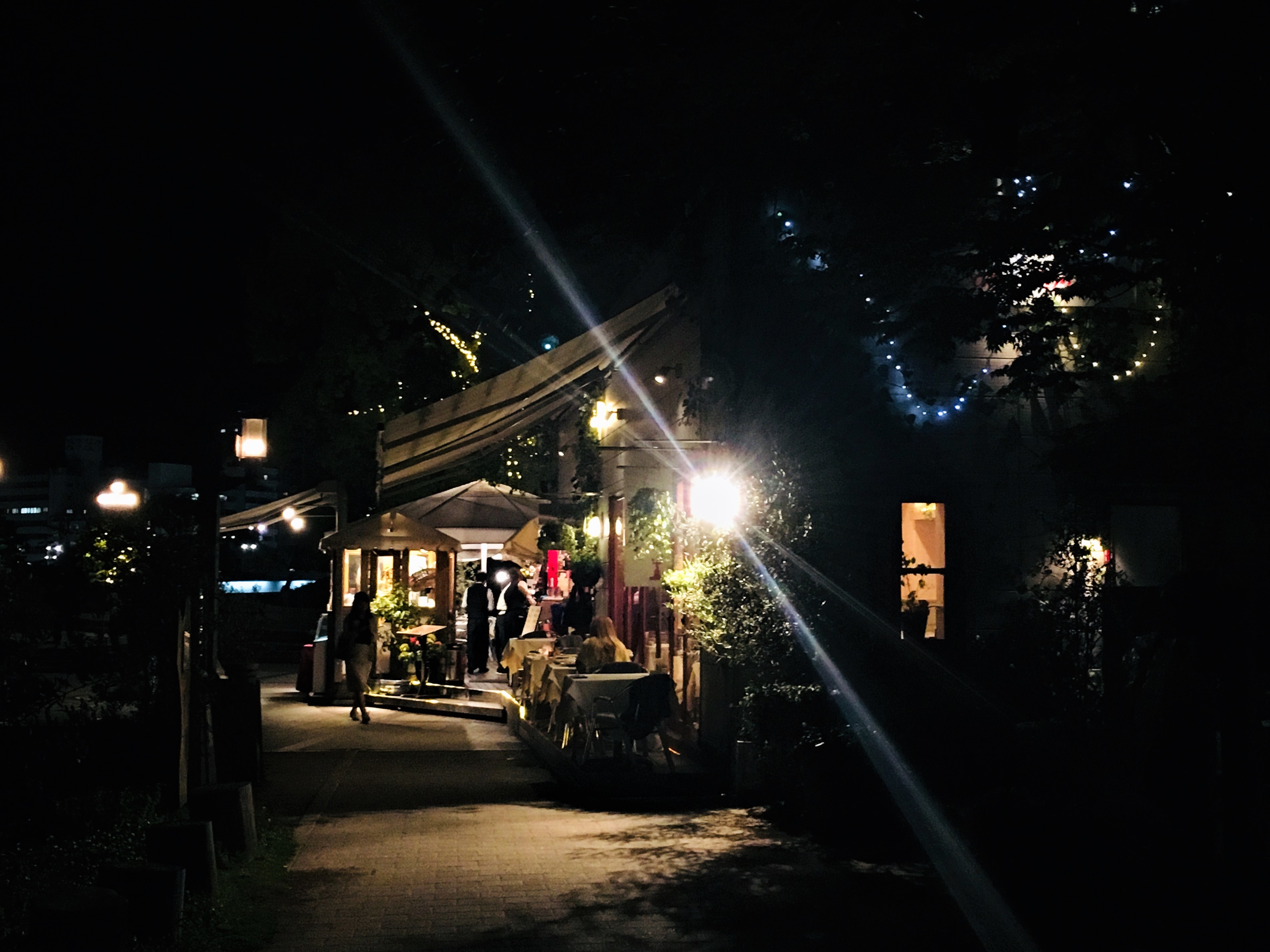 A pretty restaurant hub
A pretty restaurant hub
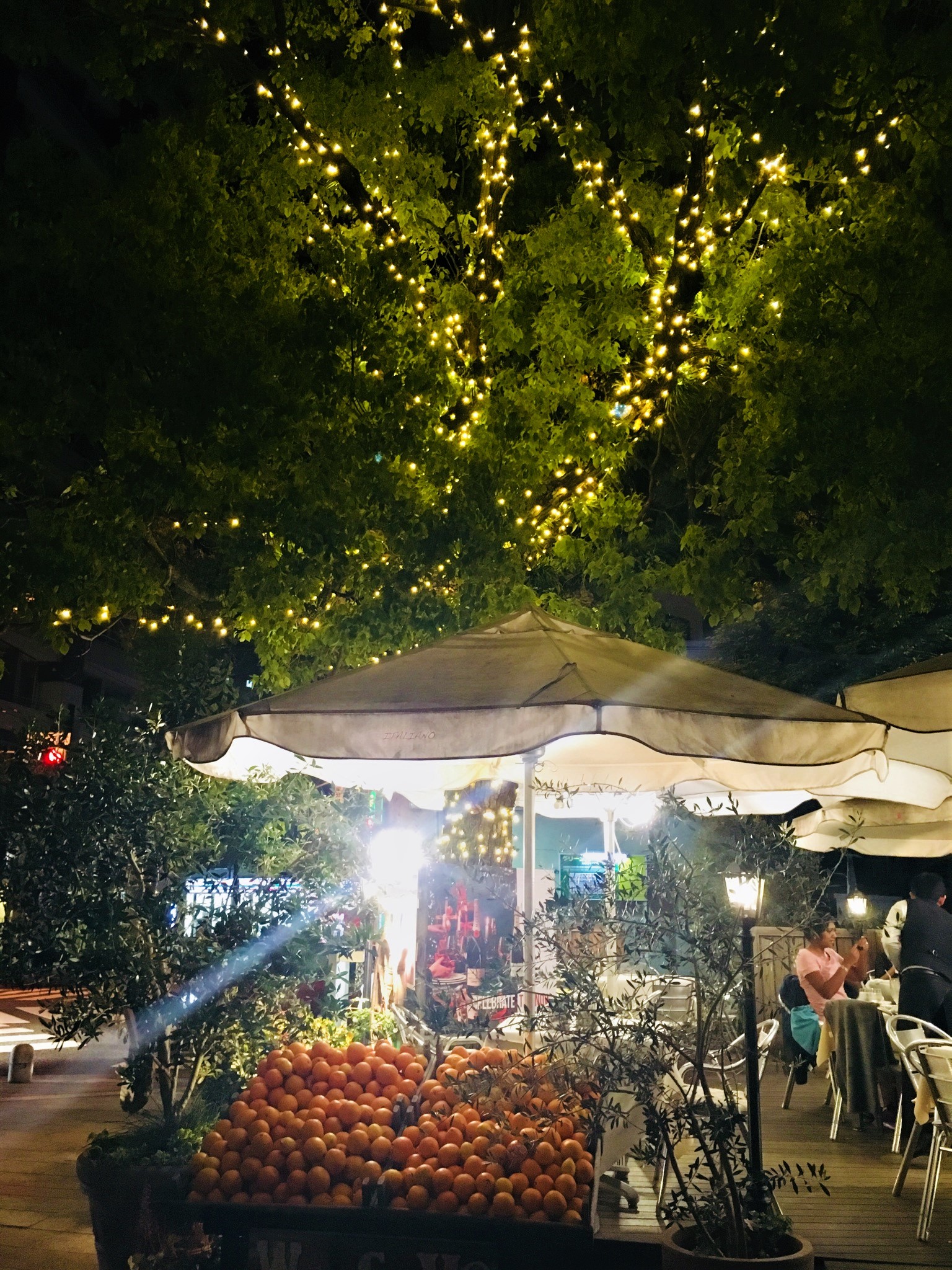 Want some late-night oranges?
Want some late-night oranges?
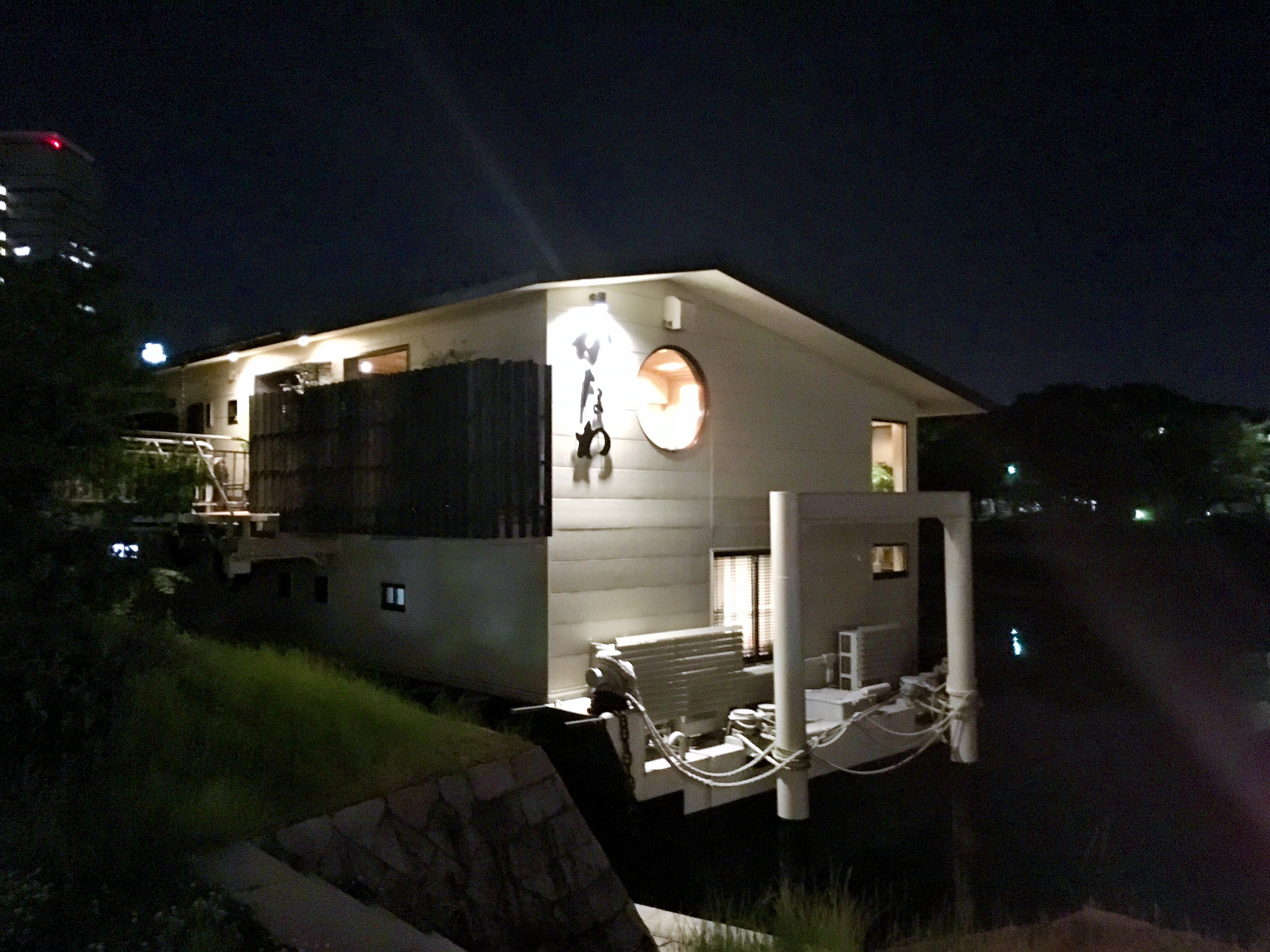 A river house!
A river house!
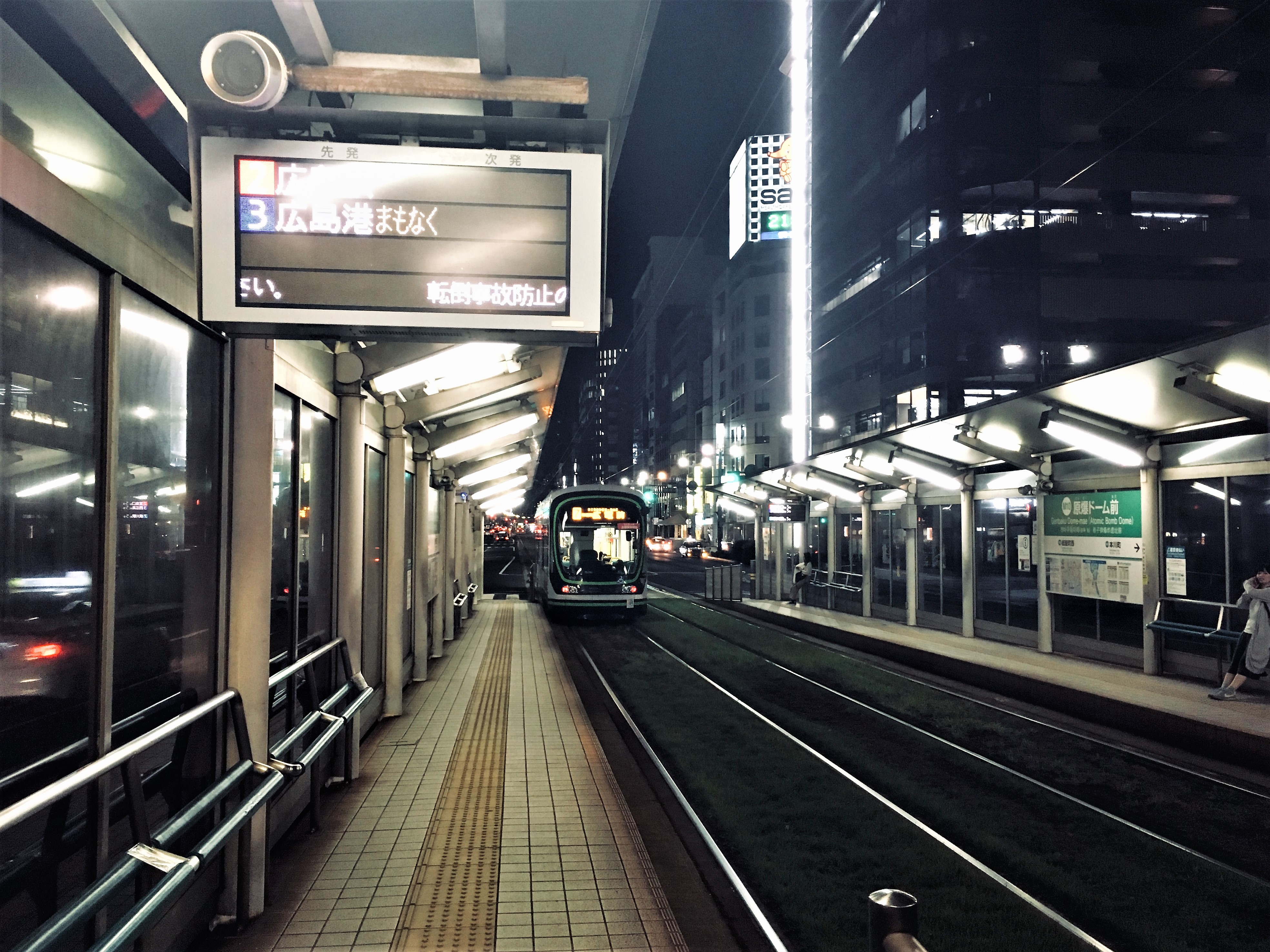 Hiroshima tram
Hiroshima tram
MiyajimaThe next morning we embarked on towards Miyajima, a small island to the Southwest of Hiroshima. I'd had eel a couple of times already during my trip (it's not that bad!), but I didn't fancy it for breakfast.
I'd had eel a couple of times already during my trip (it's not that bad!), but I didn't fancy it for breakfast.
Miyajima is completely cut off from the rest of Japan by water: 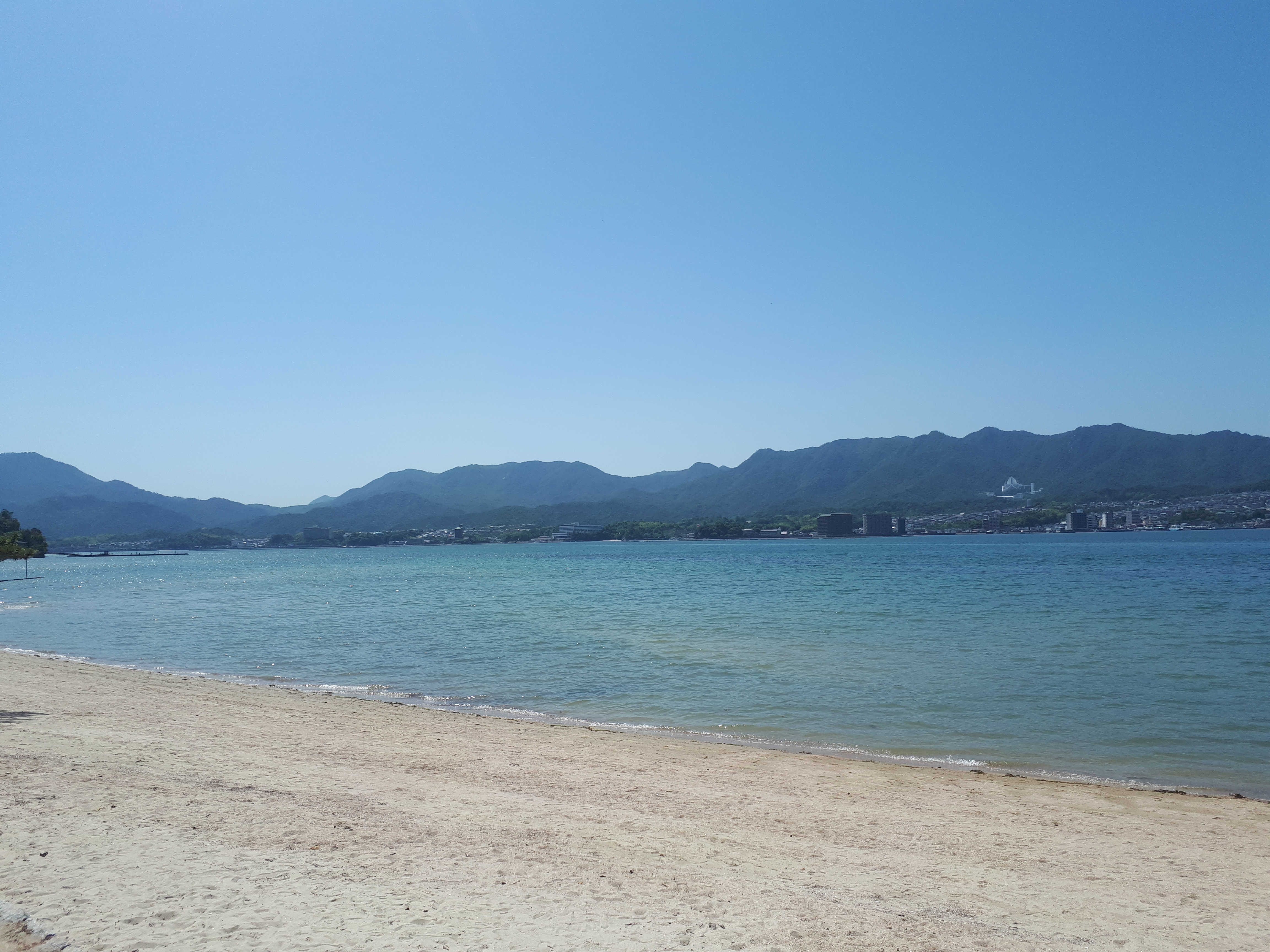
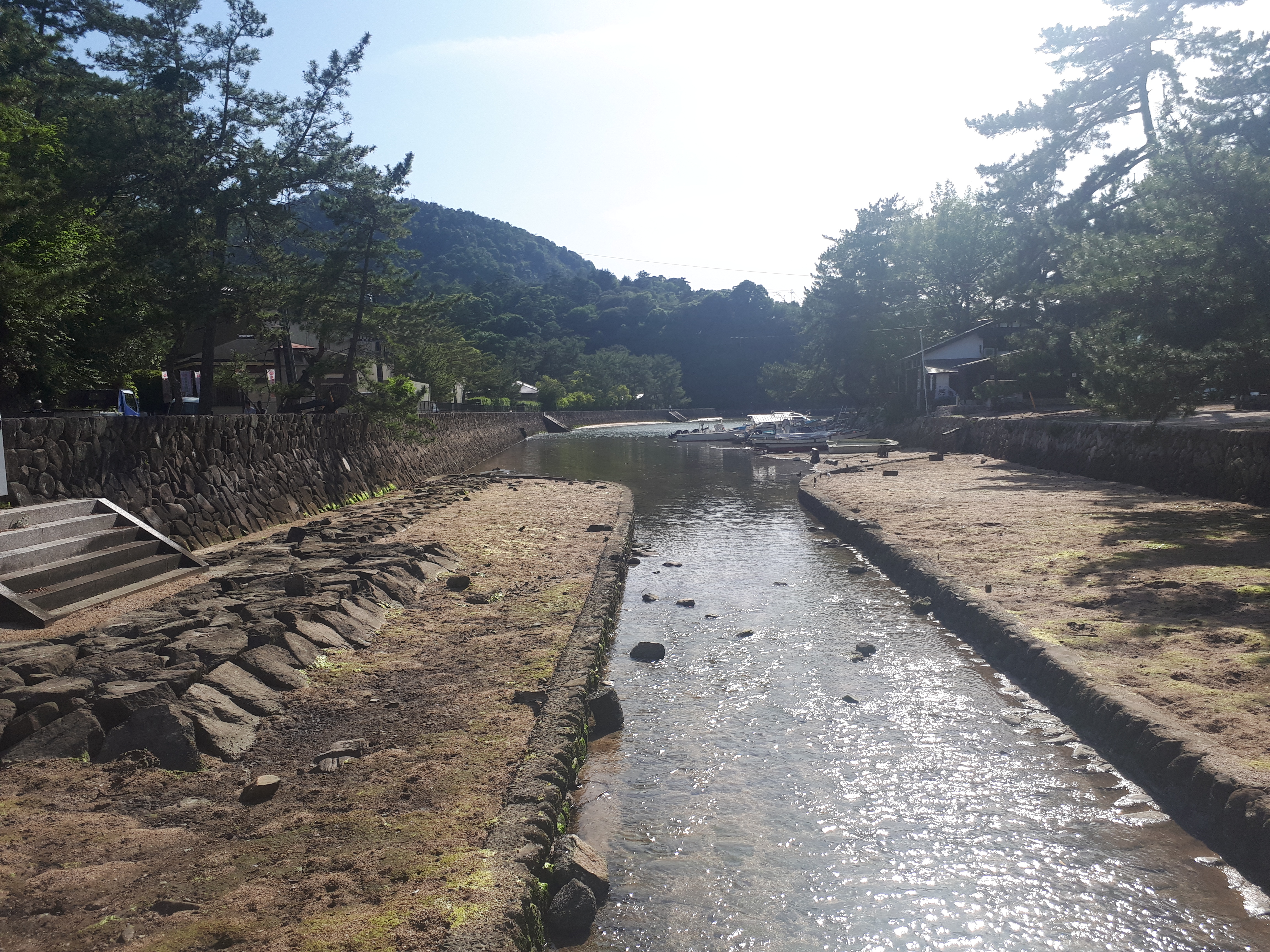
It's also full of wild deer! 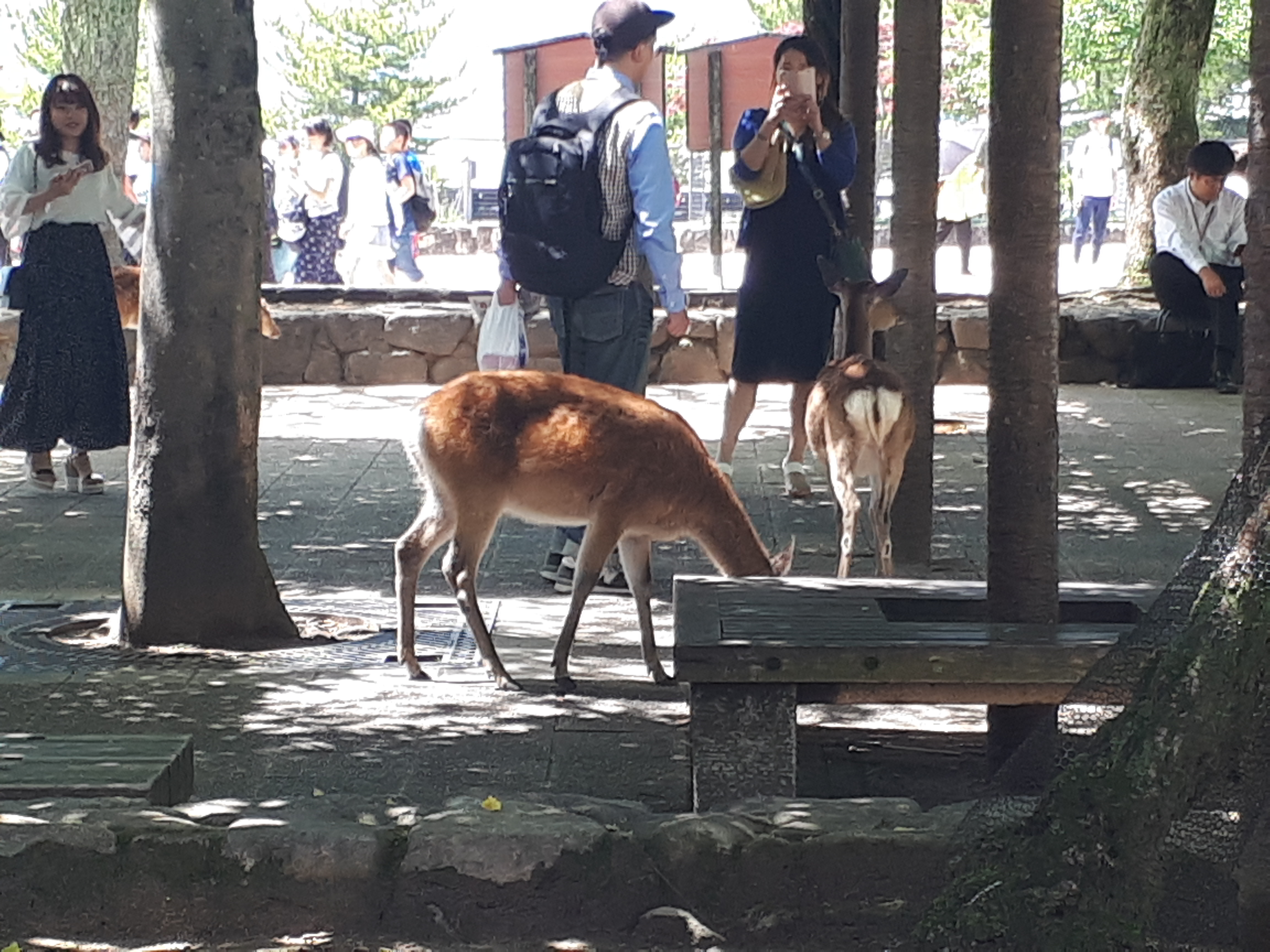

Also at Miyajima is Itsukushima Shrine; a pavillion on the shore that stands in sand during low tide and water during high-tide. 

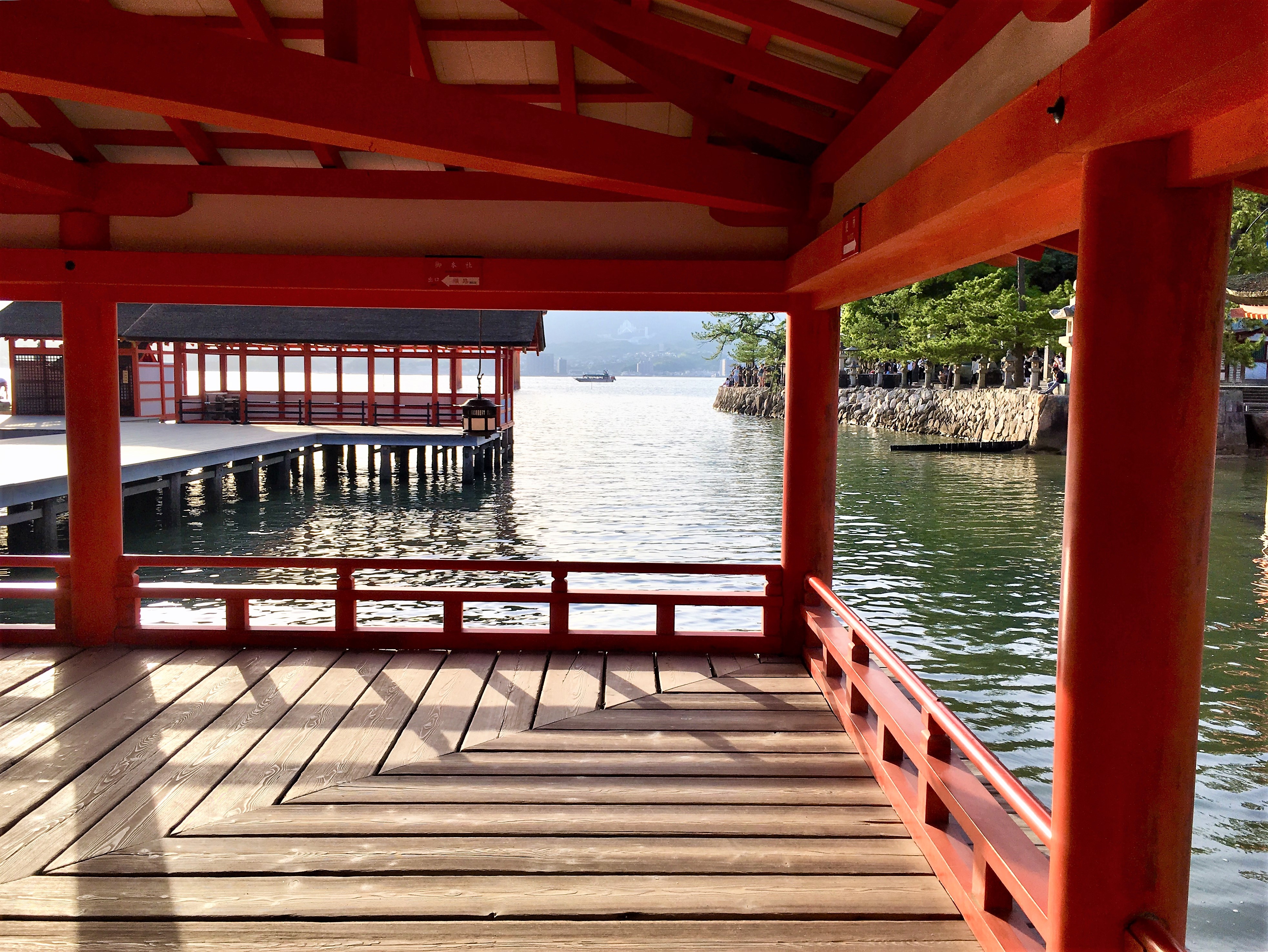
While we were there, what appeared to be a traditional wedding was taking place; with some very unusual dissonant music. At night the lanterns reflect off the water:  Courtesy Photorator
Courtesy Photorator
Miyajima is famous most of all though for its "floating" torii gate: A large structure off the shore that looks like it's suspended in the water: 
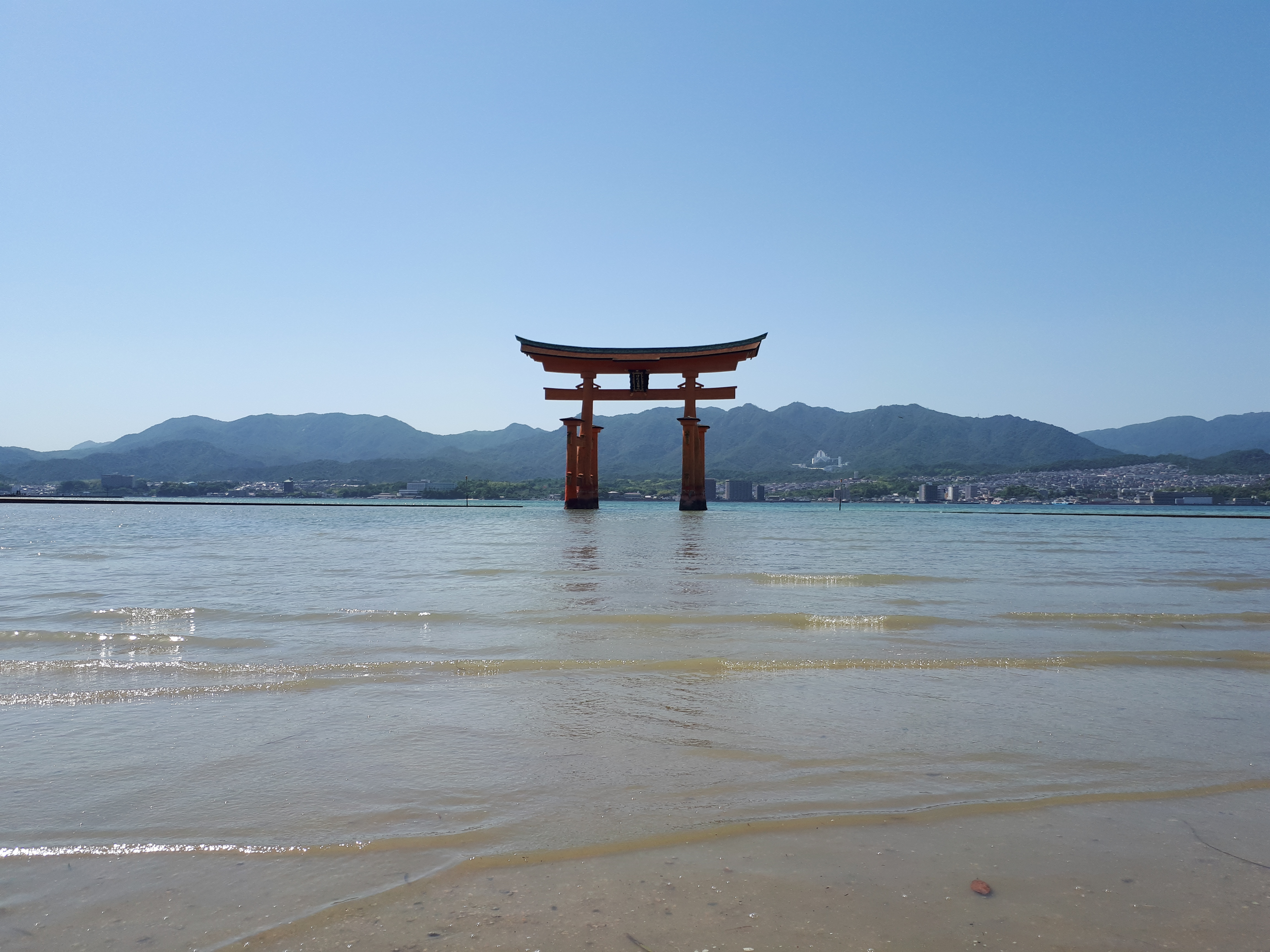
Further inland a very serene, pretty temple called Daisho-in Temple can be found; which we visited at around 5pm when no one else was there. It turned out to be one of my favourite temples during the entire trip! 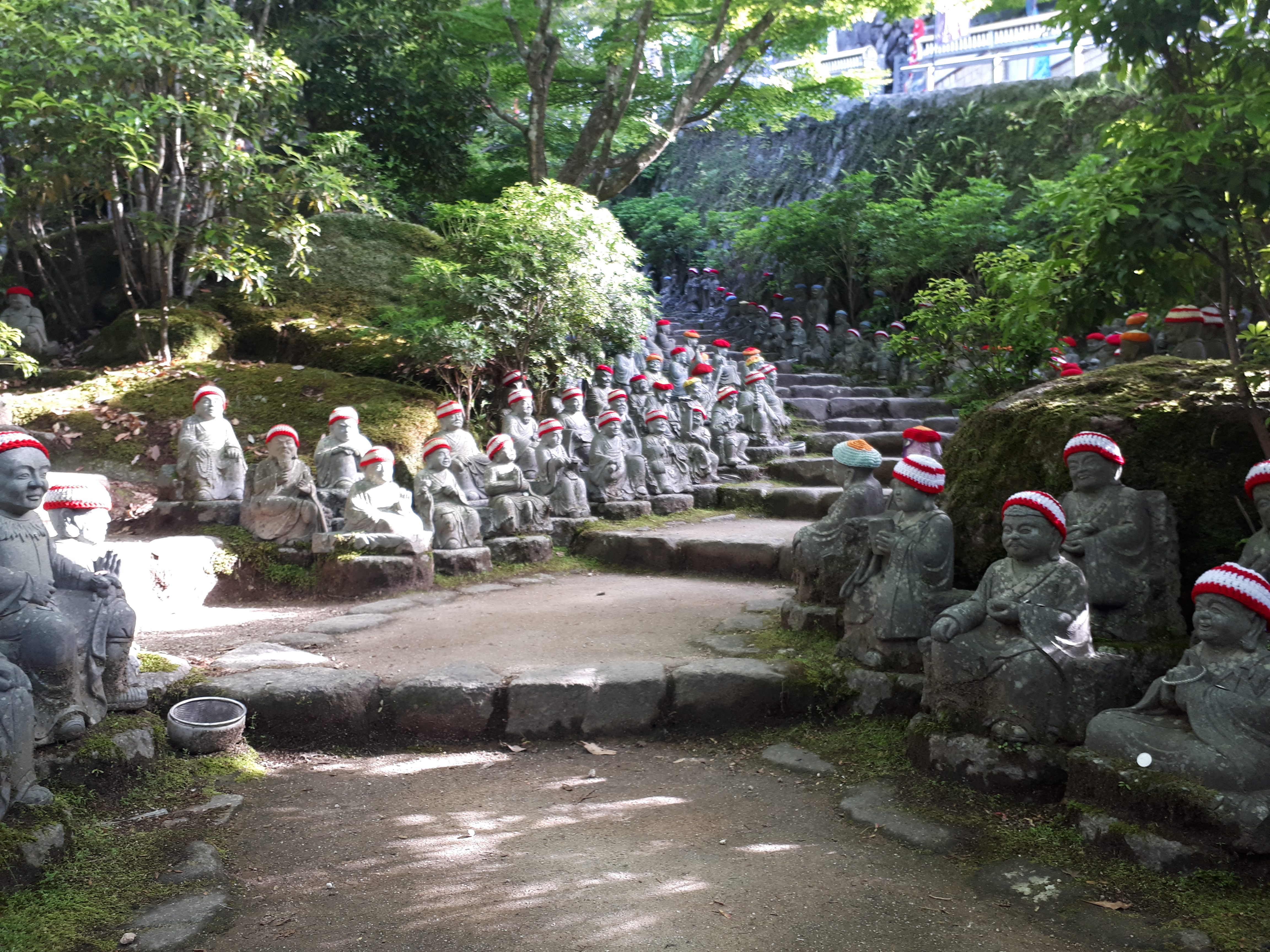 I'm not sure on the religious significance; but there were loads of these little guys, each with a knitted hat and most of them had 1yen offerings in their hands.
I'm not sure on the religious significance; but there were loads of these little guys, each with a knitted hat and most of them had 1yen offerings in their hands.
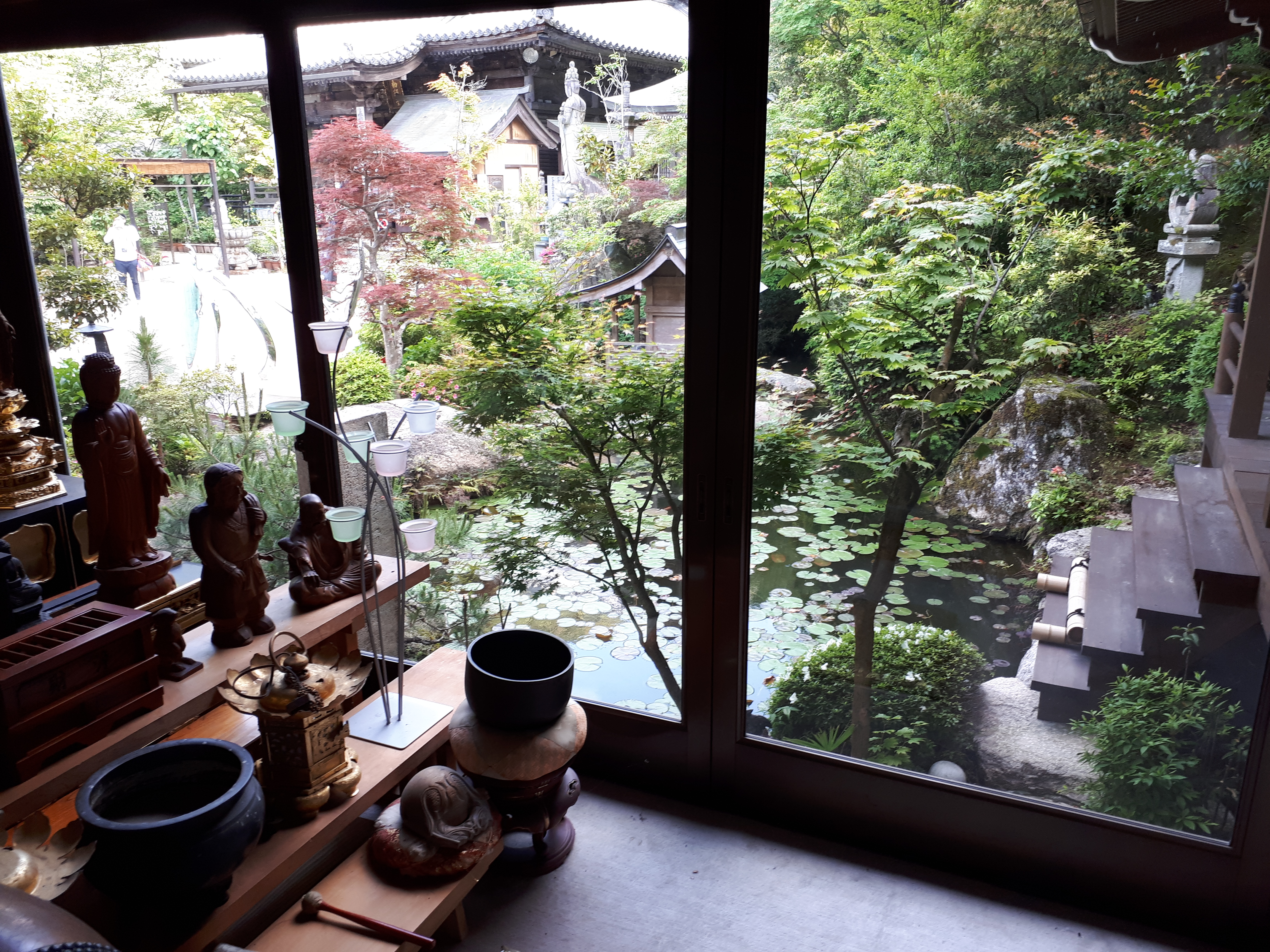 The inside of the temple was very, very peaceful. There was nothing but quiet water noises and wind, mixed with incense.
The inside of the temple was very, very peaceful. There was nothing but quiet water noises and wind, mixed with incense.
 I sure do like dragons
I sure do like dragons
 Lovely buildings
Lovely buildings
Video: Absolute Seclusion (10 secs) On the way back as the sun was setting I took another pic of the torii gate: 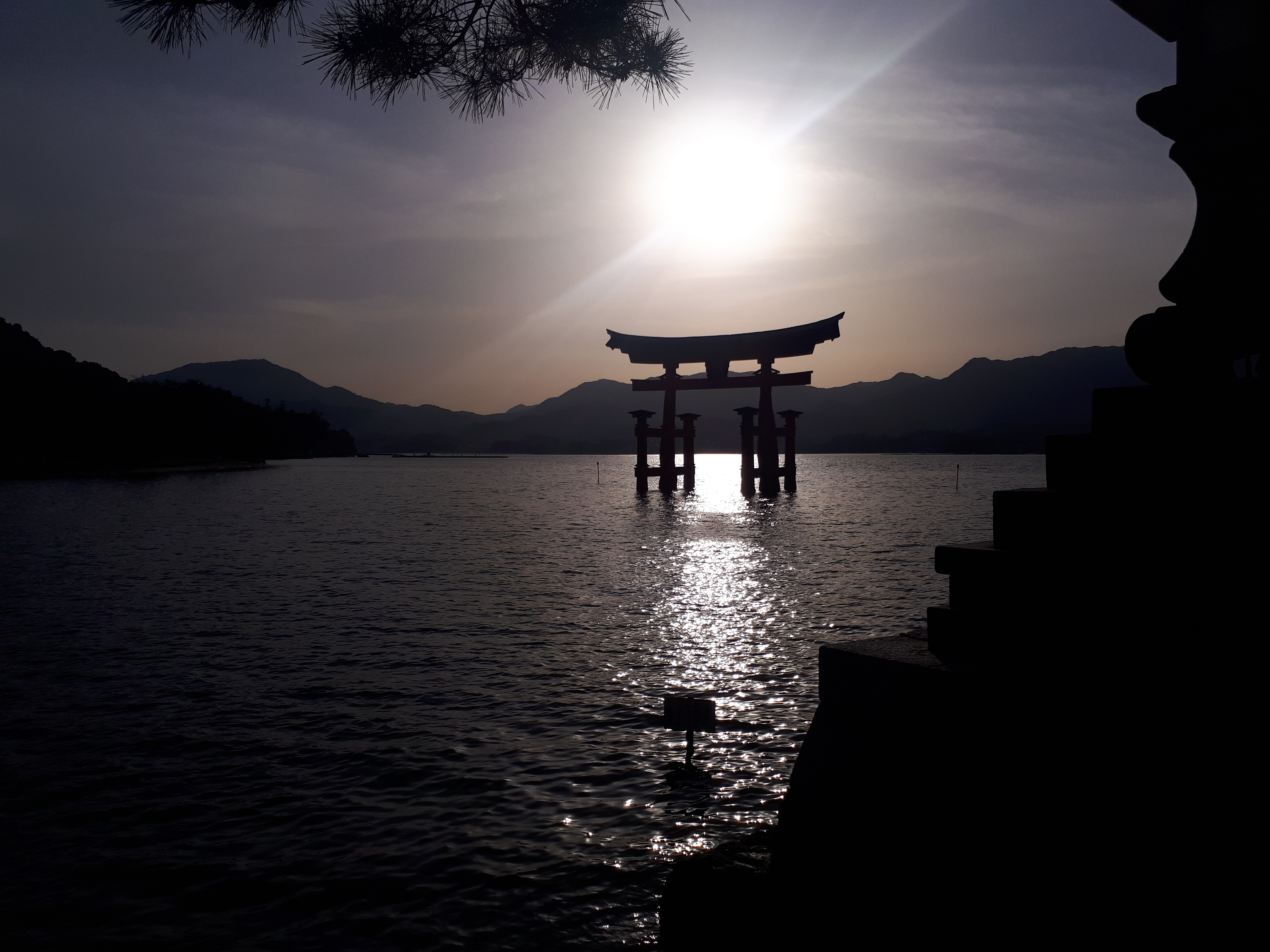
OsakaThe last two days of our visit were spent in Osaka. Osaka felt like a slightly less serious, more party-ready Tokyo; and was a fairly nice place to end up at.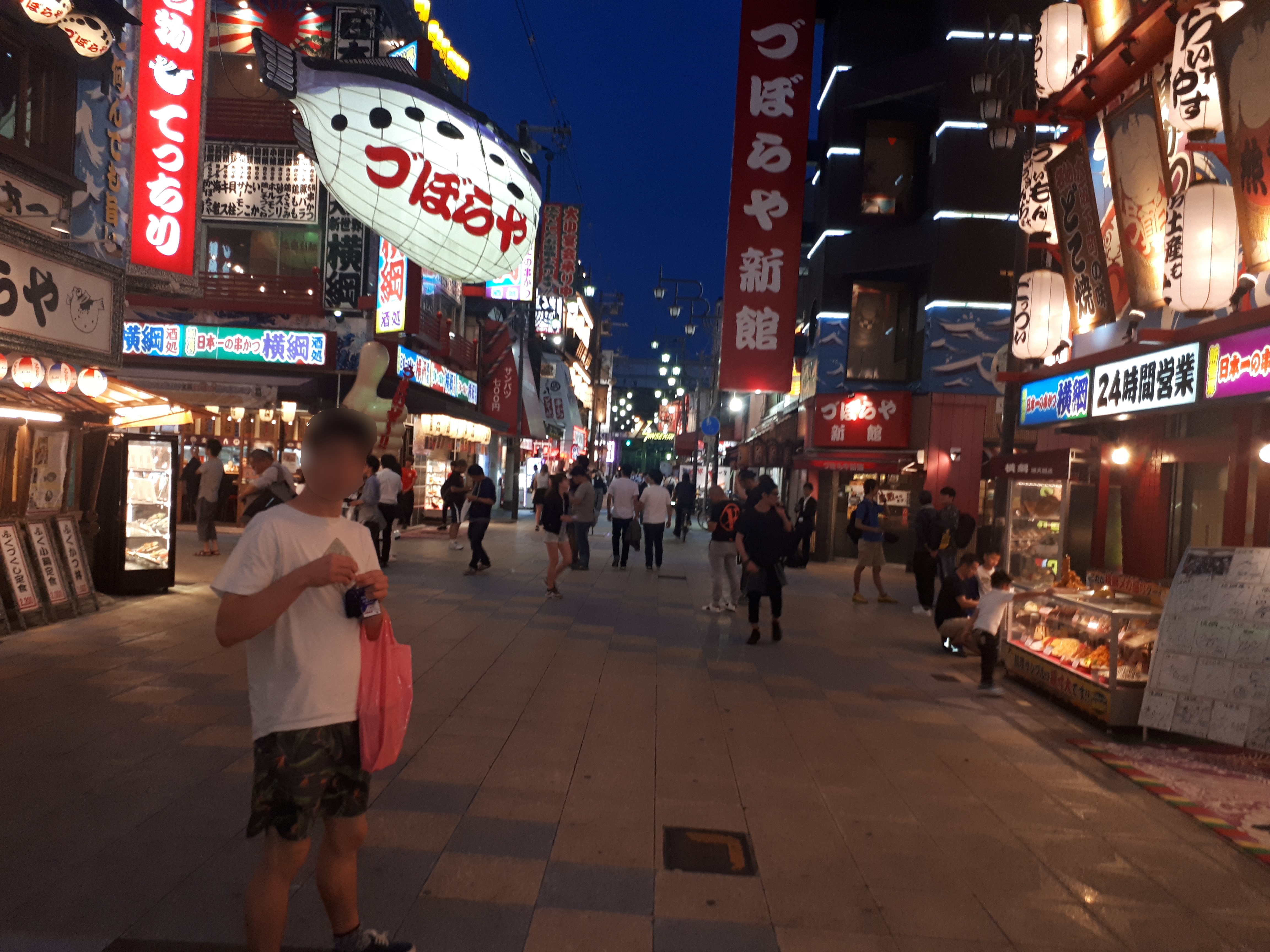
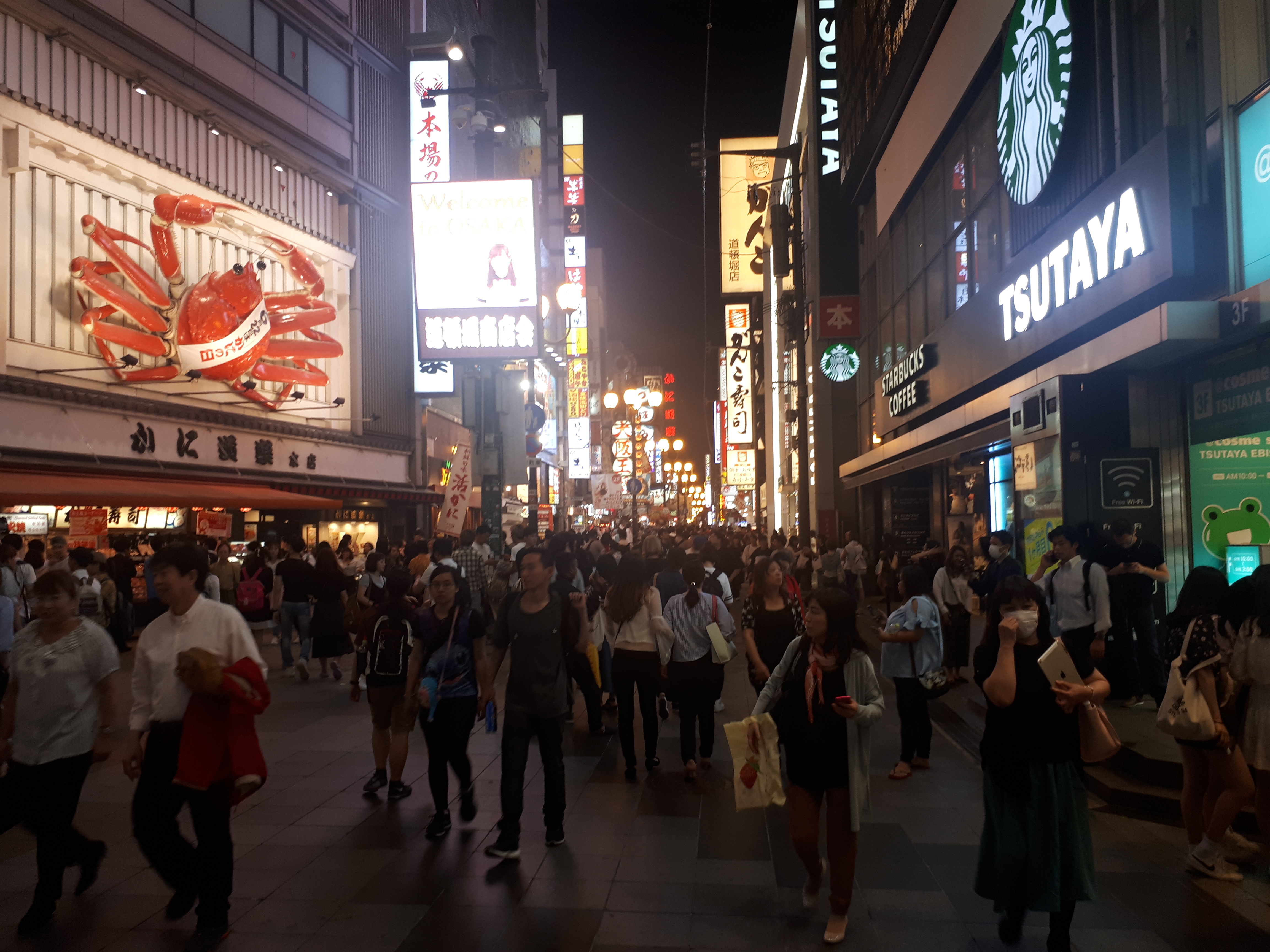
Frankly, my brother and I had some leftover money so on the last day we decided to visit Universal Studios in Osaka; and forewent taking many pictures. We thought a final day of uncultured indulgent rollercoastering was fair after two and a half weeks of shrines and temples, haha ;). Anyway, I can definitely recommend the Final Fantasy VR ride! It's a real rollercoaster but while wearing a VR headset; and you fly around some fantasy world while ridiculously-dressed people shout Japanese at you and fight insanely awesome monsters. Nice. Anyway, here's a couple more random pictures I took while in downtown Osaka: 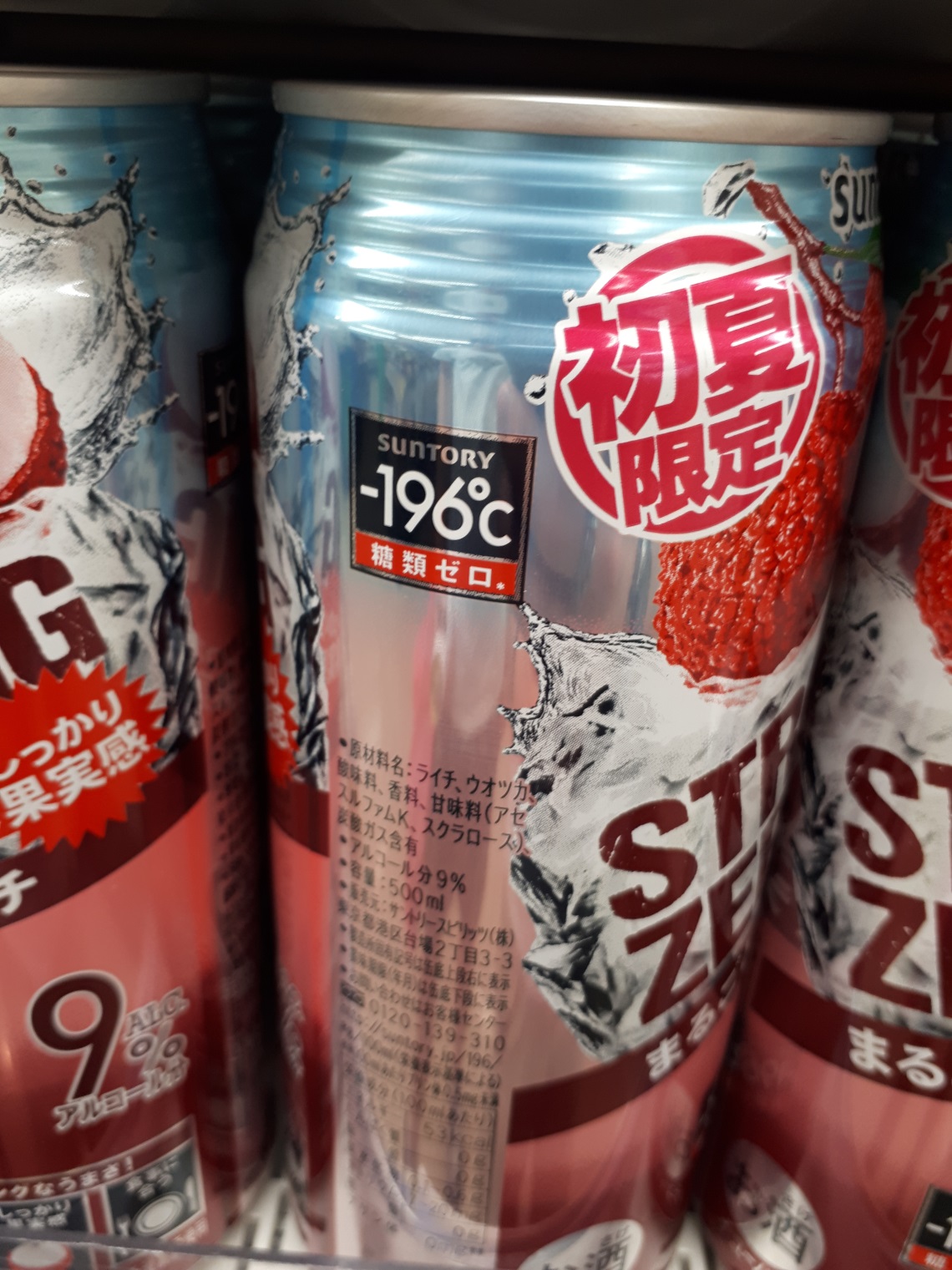 Not sure what it's referring to, but damn that's cold!
Not sure what it's referring to, but damn that's cold!
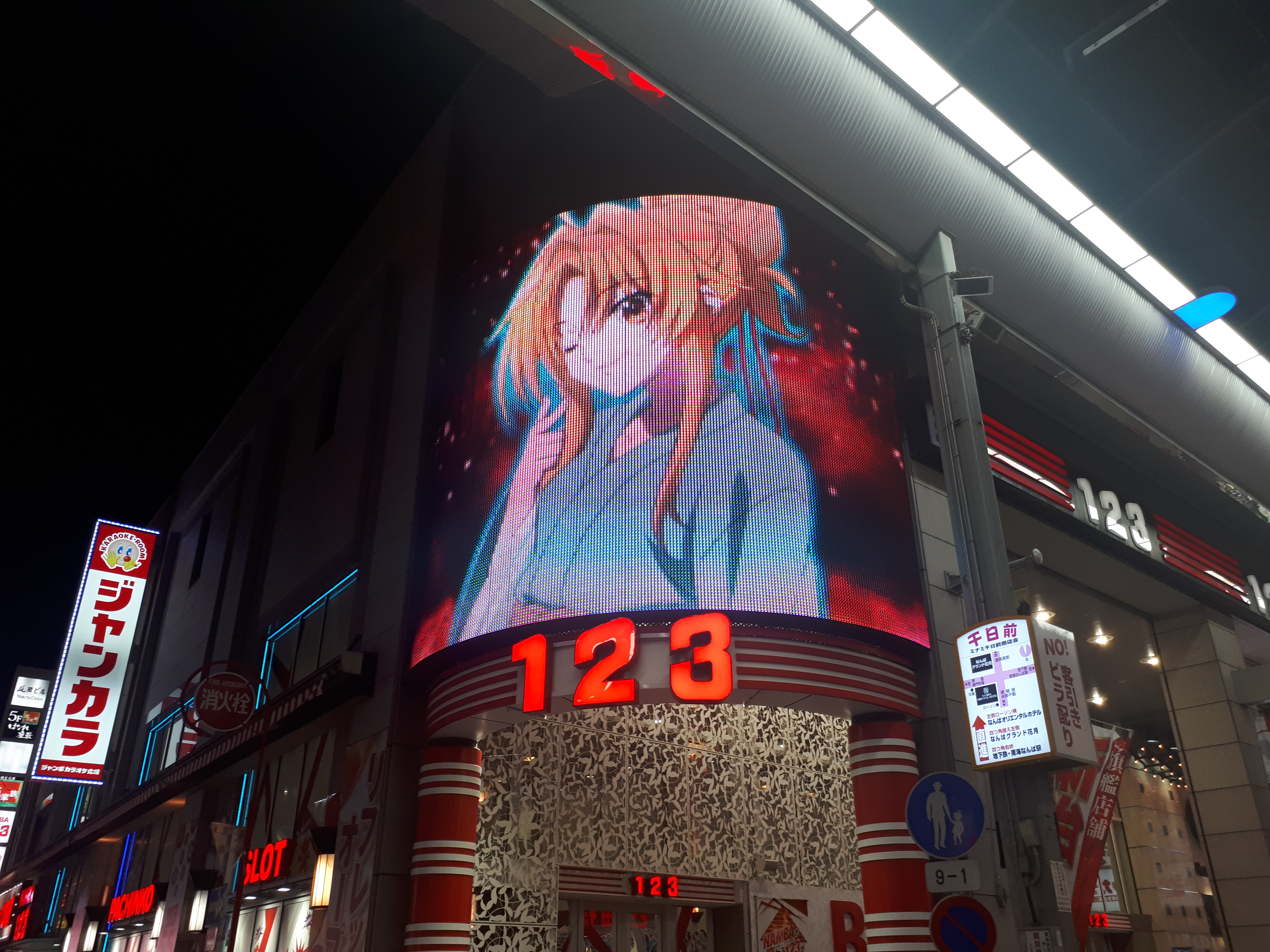 And a wink to you too, anime lady
And a wink to you too, anime lady
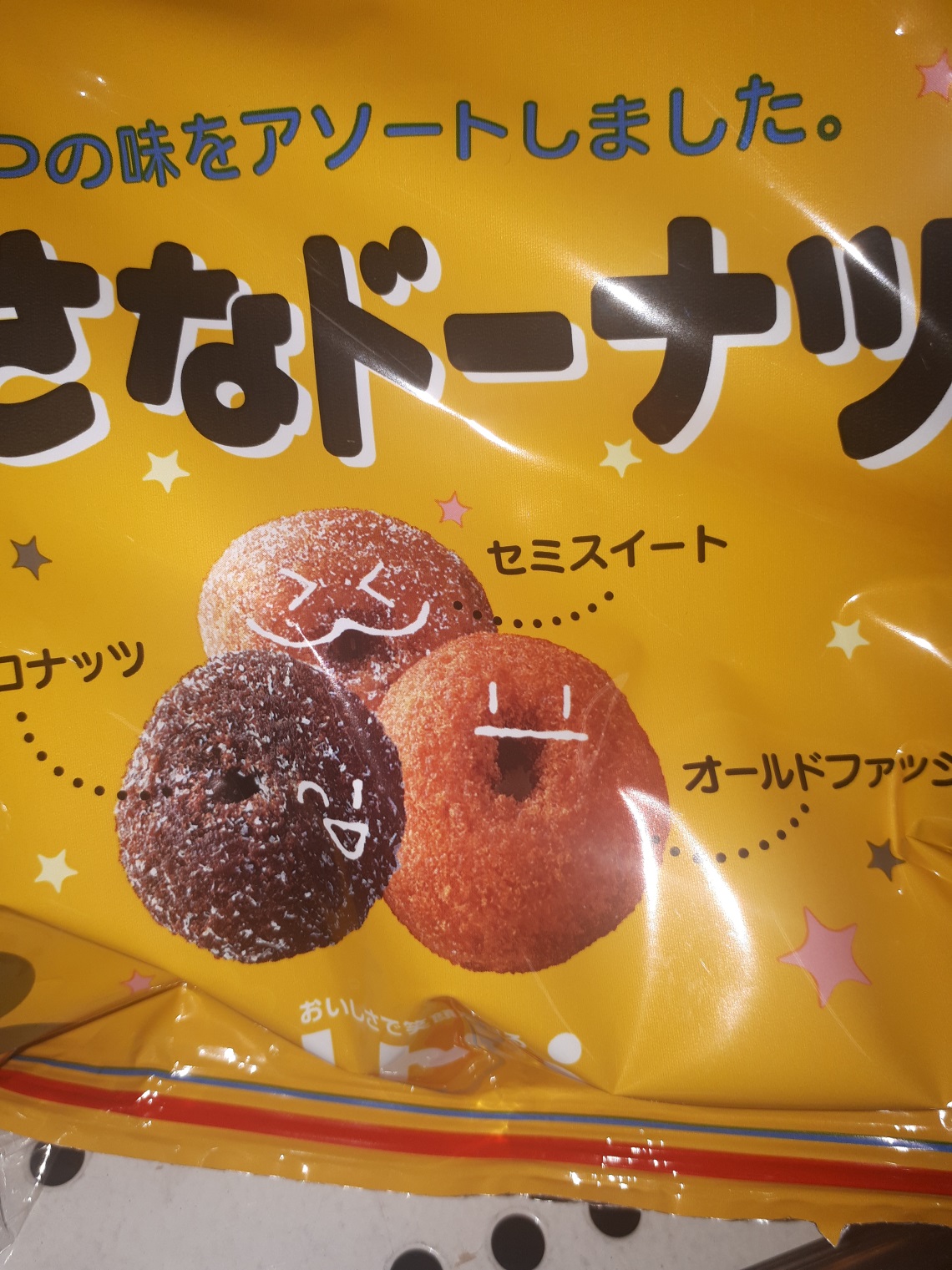 Those are some very wholesome doughnuts
Those are some very wholesome doughnuts
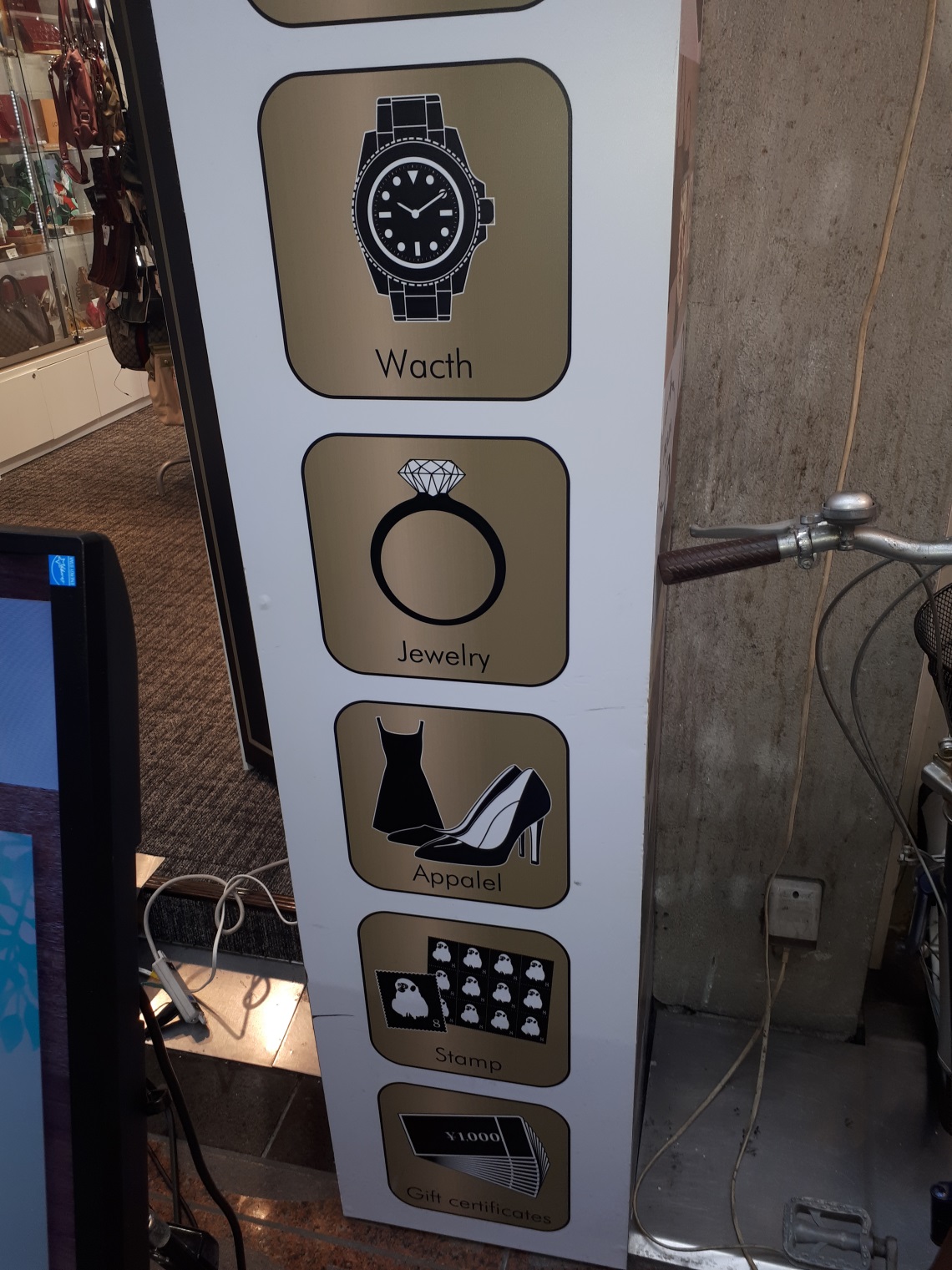 Fancy a wacth? Or maybe some appalel?
Fancy a wacth? Or maybe some appalel?
In ConclusionJapan is an amazing place and my life has definitely been enriched by visiting it. In my opinion it's one of the best countries in the world (although like anywhere it has its flaws, of course).The cultural sights are not only very unique, but also quite inspiring, peaceful, and breathtaking. The culture itself is one that all societies could learn something from in terms of work ethic, politeness, and collectivist ideal (although it could certainly be argued that Japan maybe takes some of those things too far). Frankly I'd love to go back there one day, maybe in the winter, and revisit some of the places above in the snow; as well as seeing other places that I've missed. Also, the only souvenir I took back was my origami cube and some Japanese sweets: 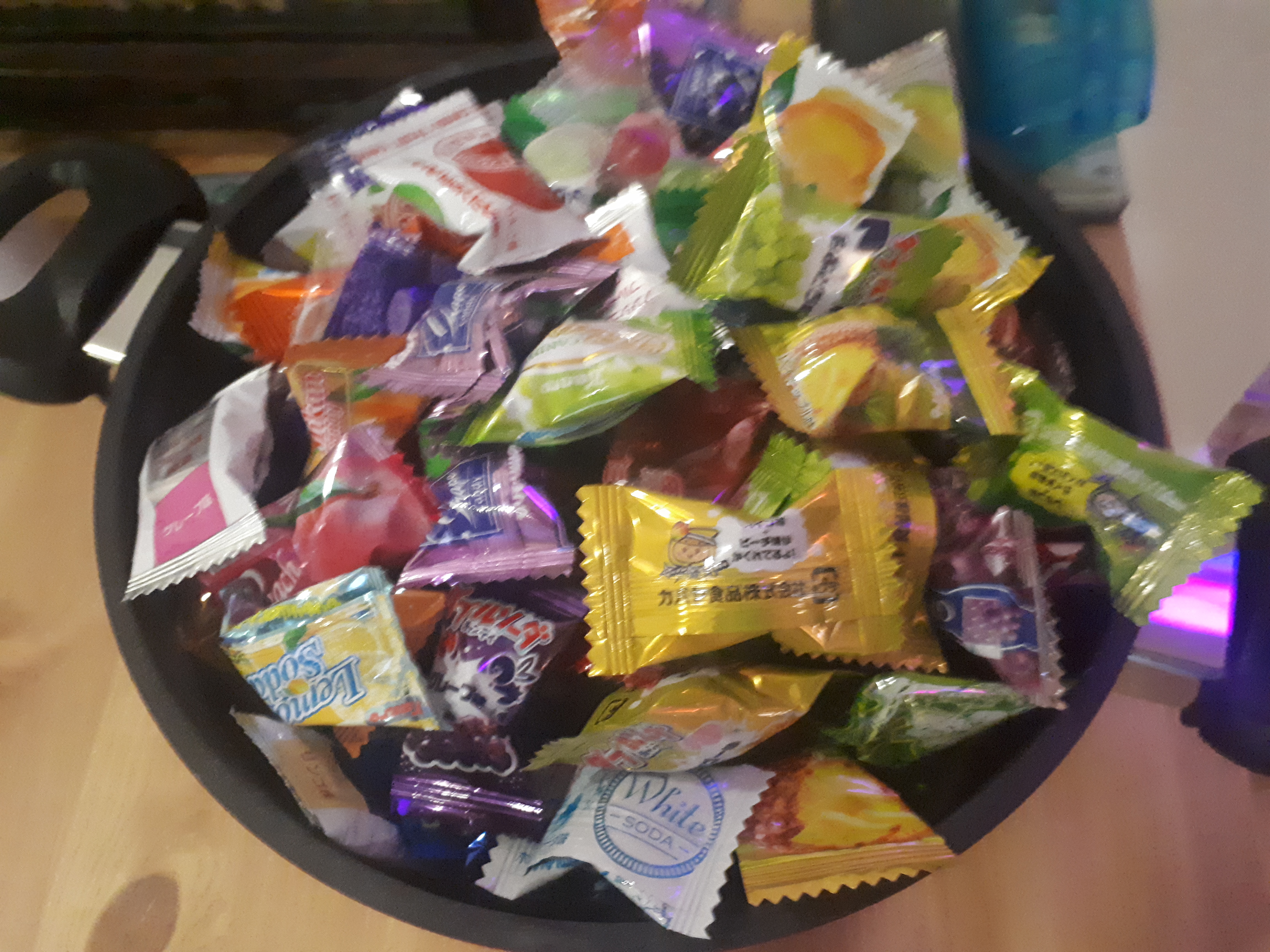 Every flavour is a wildcard!
Every flavour is a wildcard!
I'll finish this post off with a picture of a genuine sign I saw getting off the bus from Kamikochi: 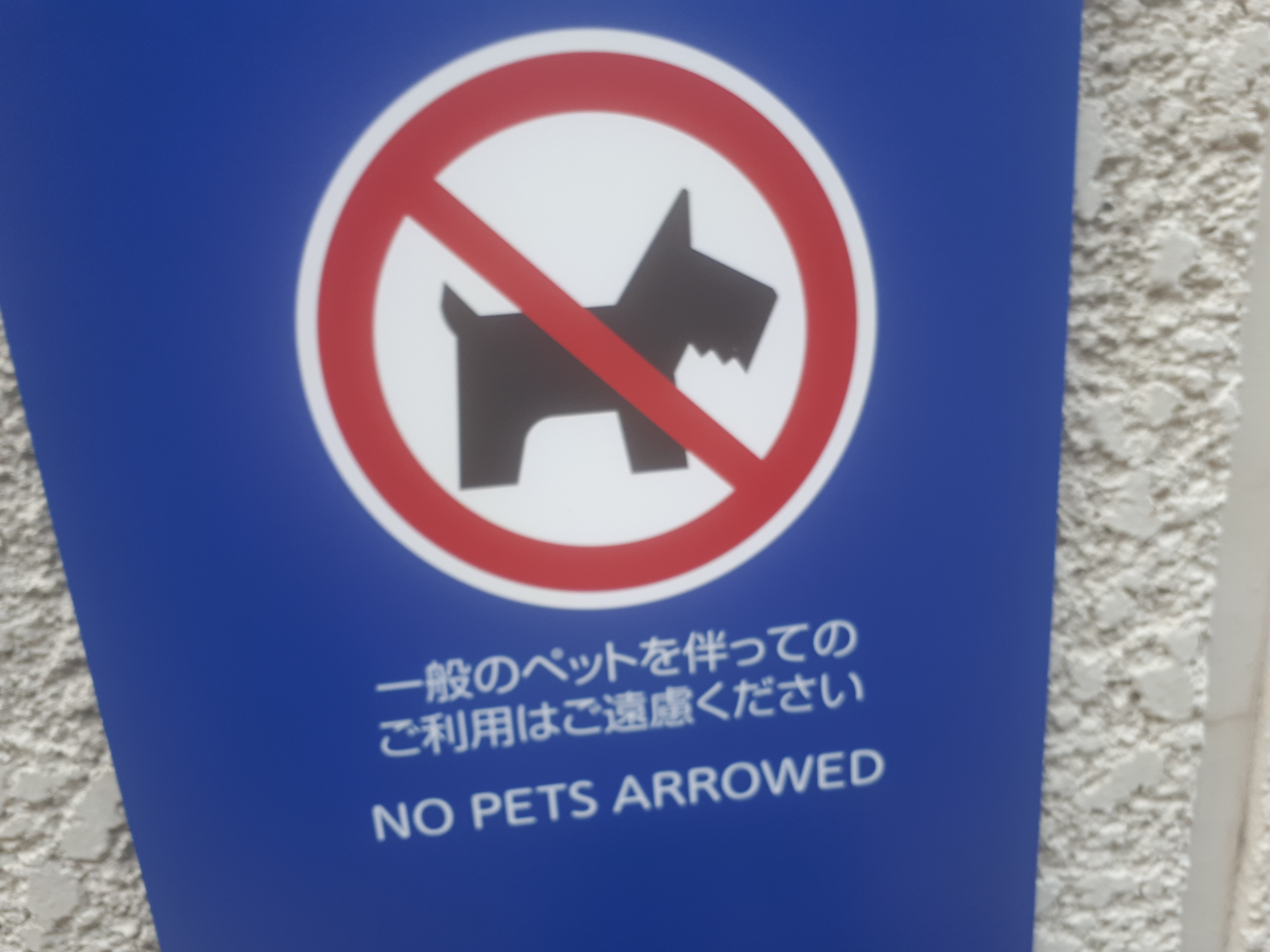 Next time, I'll leave my crossbow at home.
Next time, I'll leave my crossbow at home.
Read Next: Japan 2018 |
